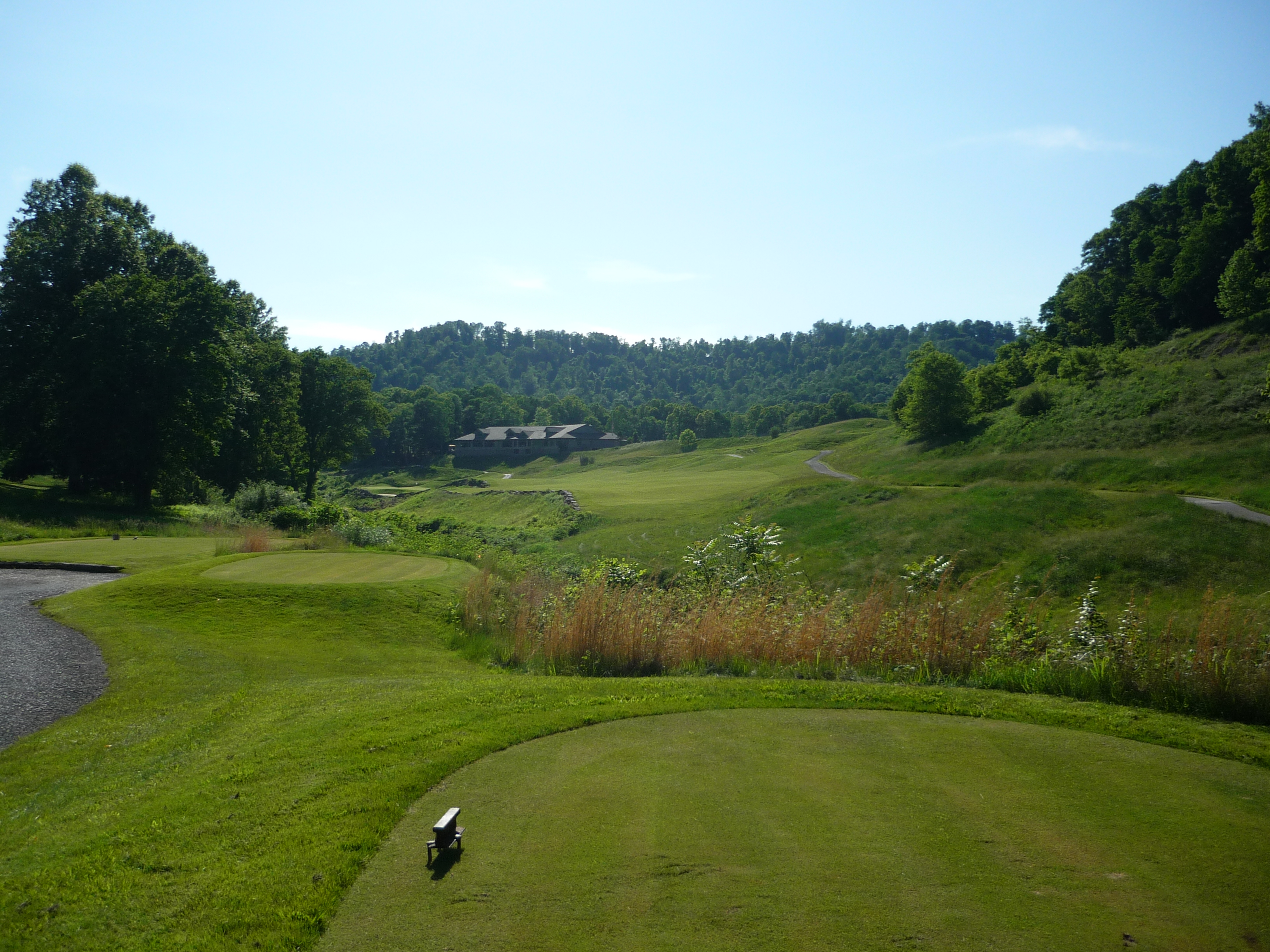
Pete Dye Golf Club – Played June 2014
- Rankings: Golf Digest #46
- Location: 801 Aaron Smith Drive, Bridgeport, West Virginia
- Year: 1993
- Architect: Pete Dye
- Course Access: Private
- Walking Rules: Carts Available
Score Card Information:
- Champ: 7,353 yards, Par 72, 75.7 Rating/144 Slope
- Back: 6,908 yards, Par 72, 73.7 Rating/139 Slope
- Dye: 6,400 yards, Par 72, 71.3 Rating/131 Slope
- Middle: 5,839 yards, Par 72, 68.3 Rating/125 Slope
- Front: 5,027 yards, Par 72, 69.1 Rating/123 Slope
The wife and I drove up to play West Virginia’s Pete Dye Golf Club this past summer for the first leg of a two-course weekend barn burner that also included Scioto. The course may be familiar to you from when it hosted a Korn Ferry Tour event in the years 2004 to 2009. The course was transformed from a coal mine and you will see from the pictures that this influence was preserved.
Seeing as the course was designed by Pete Dye, I was interested to see what was in store for me. I very much enjoyed the other Dye courses I have played. I knew less about this course than some of the more famous tracks like TPC Sawgrass and The Ocean Course. Apparently, the course took a very long time to build. I think you will enjoy seeing the finished product. It has changed ownership a few times and is now owned and operated by Pacific Links International. The club has a lodge and townhomes on-site to accommodate golfers.
I decided to walk the course and play the Dye tees. Before we get to the course, let’s take a look at some photos from the rest of the grounds. The entrance, seen below, gives you the coal mine vibe right away.
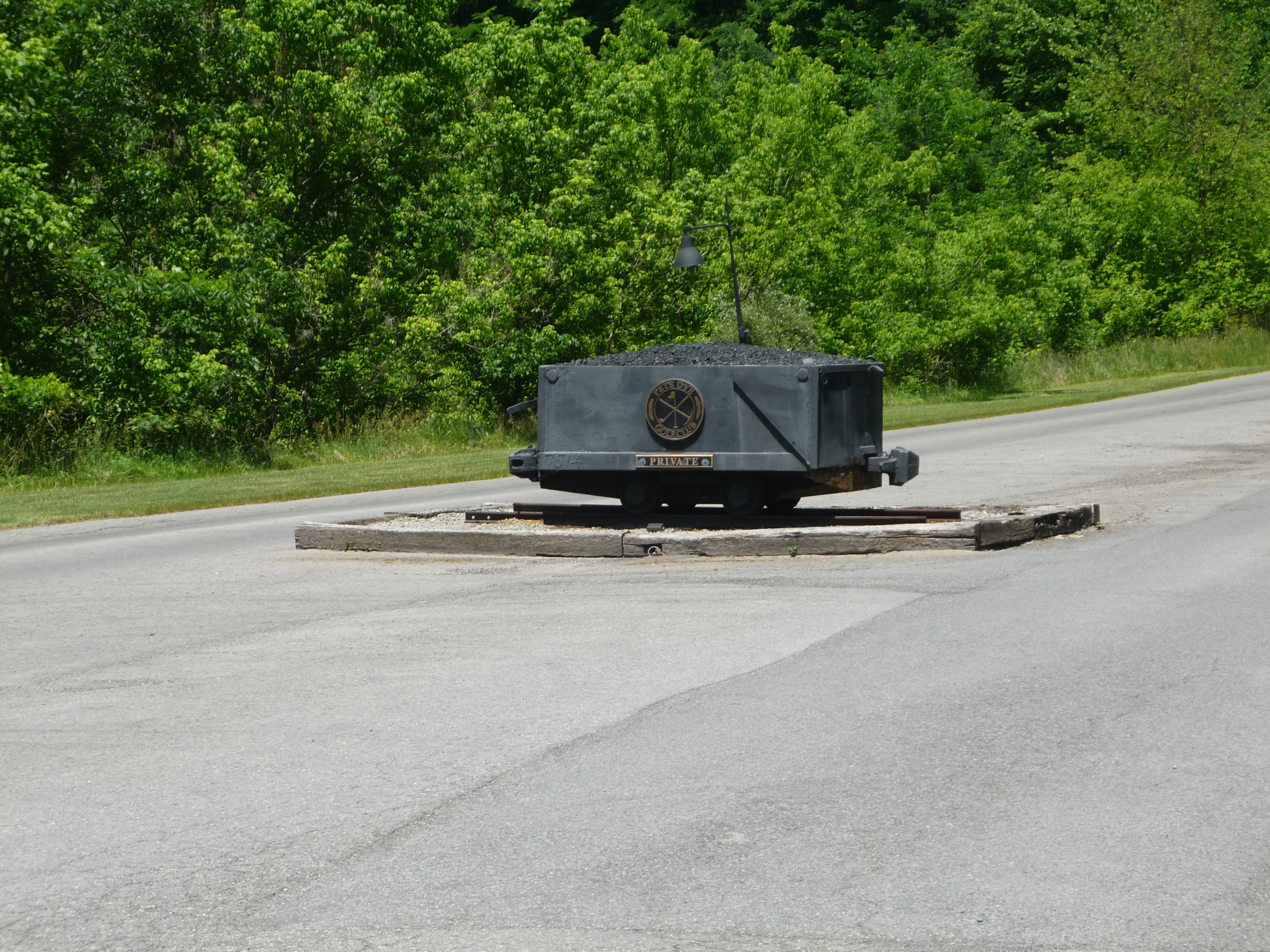
The picture below is off to the side of the entrance.

They even have old coal buildings and coal piles next to the driving range.
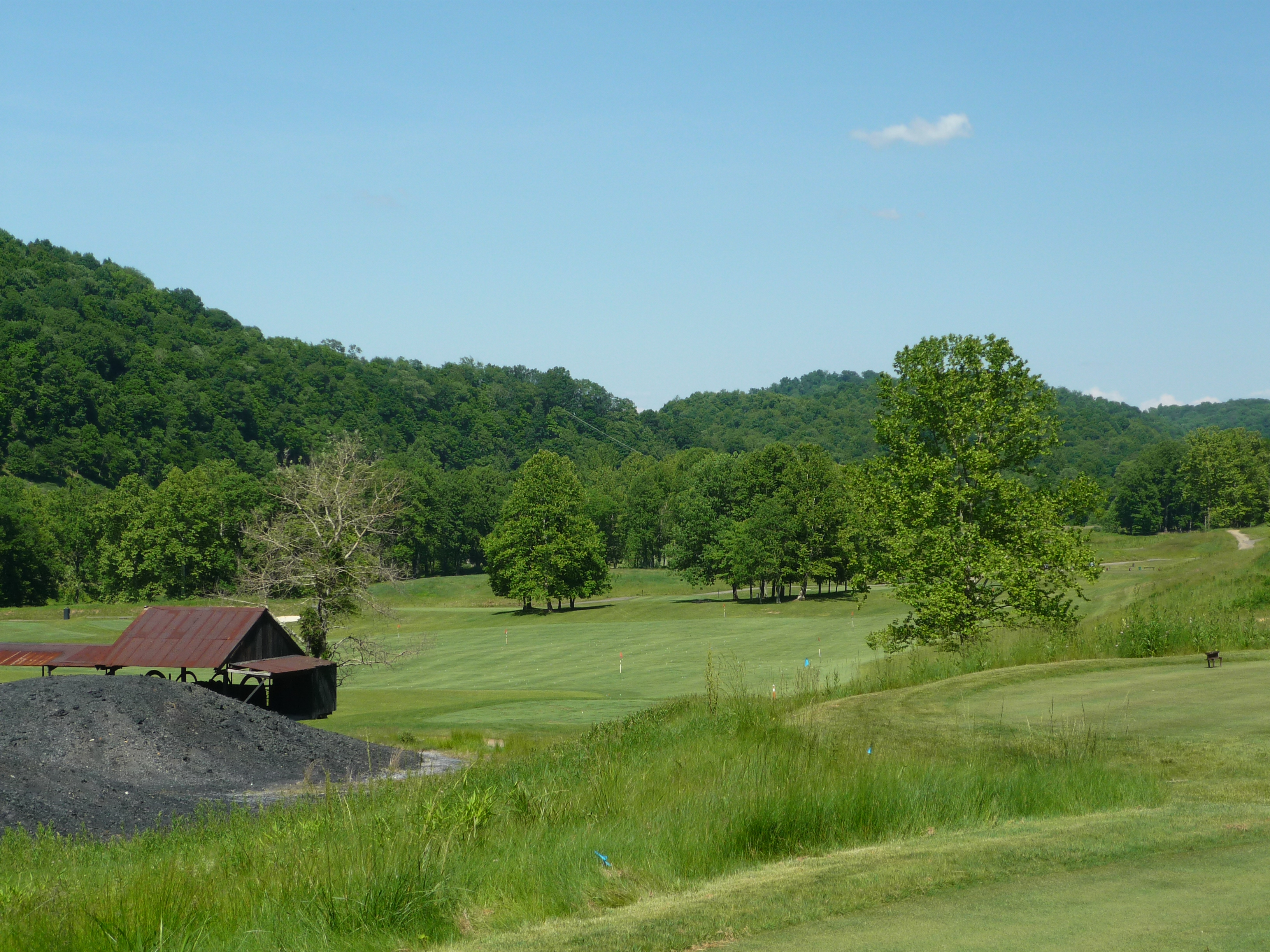
Hole 1 – 359 yards – Par 4
Pete Dye Golf Club can be added to the list of tracks with cool tee markers. See the photo below.
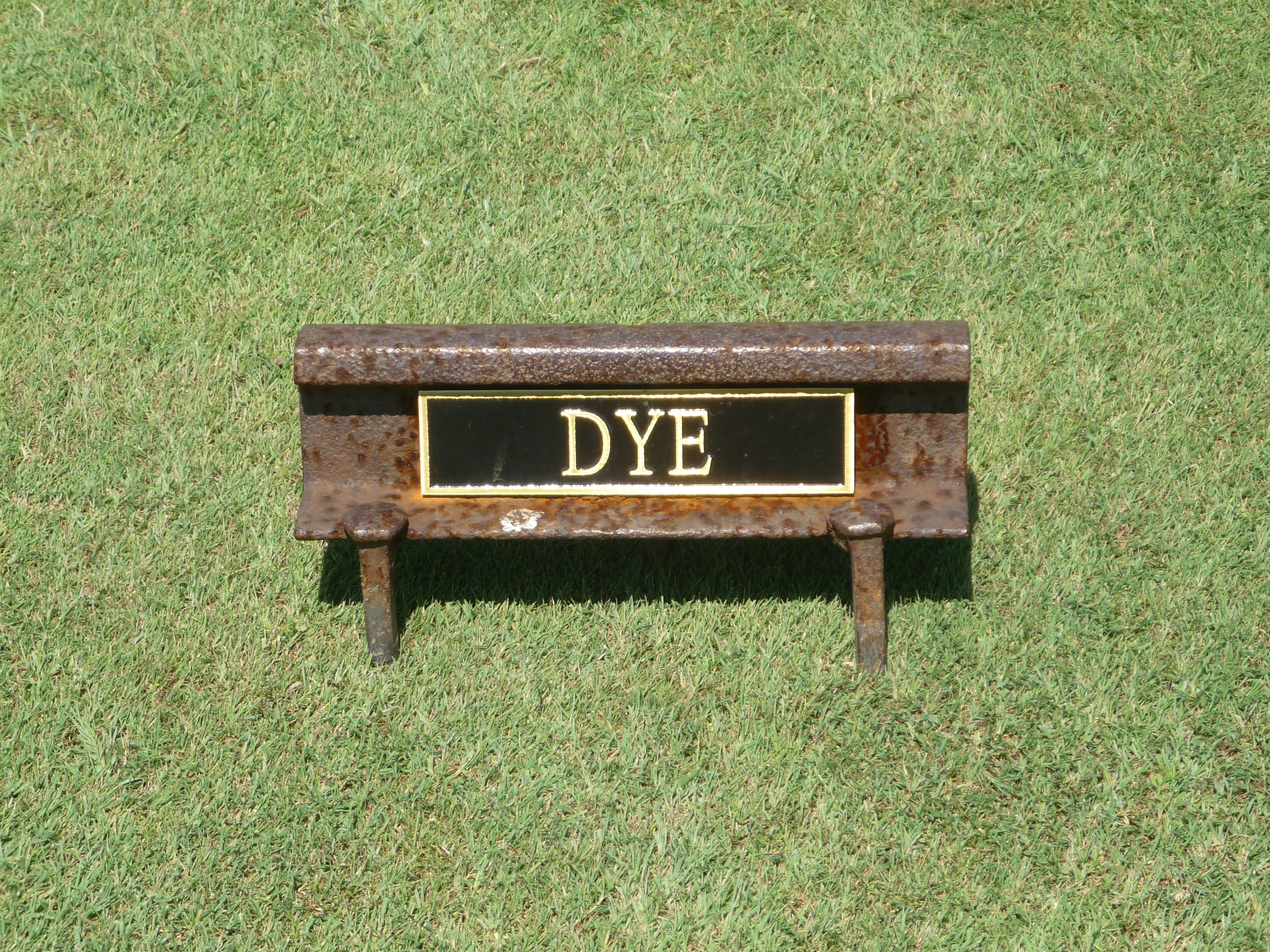
The first tee shot does not require a driver. It plays over a hill to a blind landing area. A nice little draw works best.
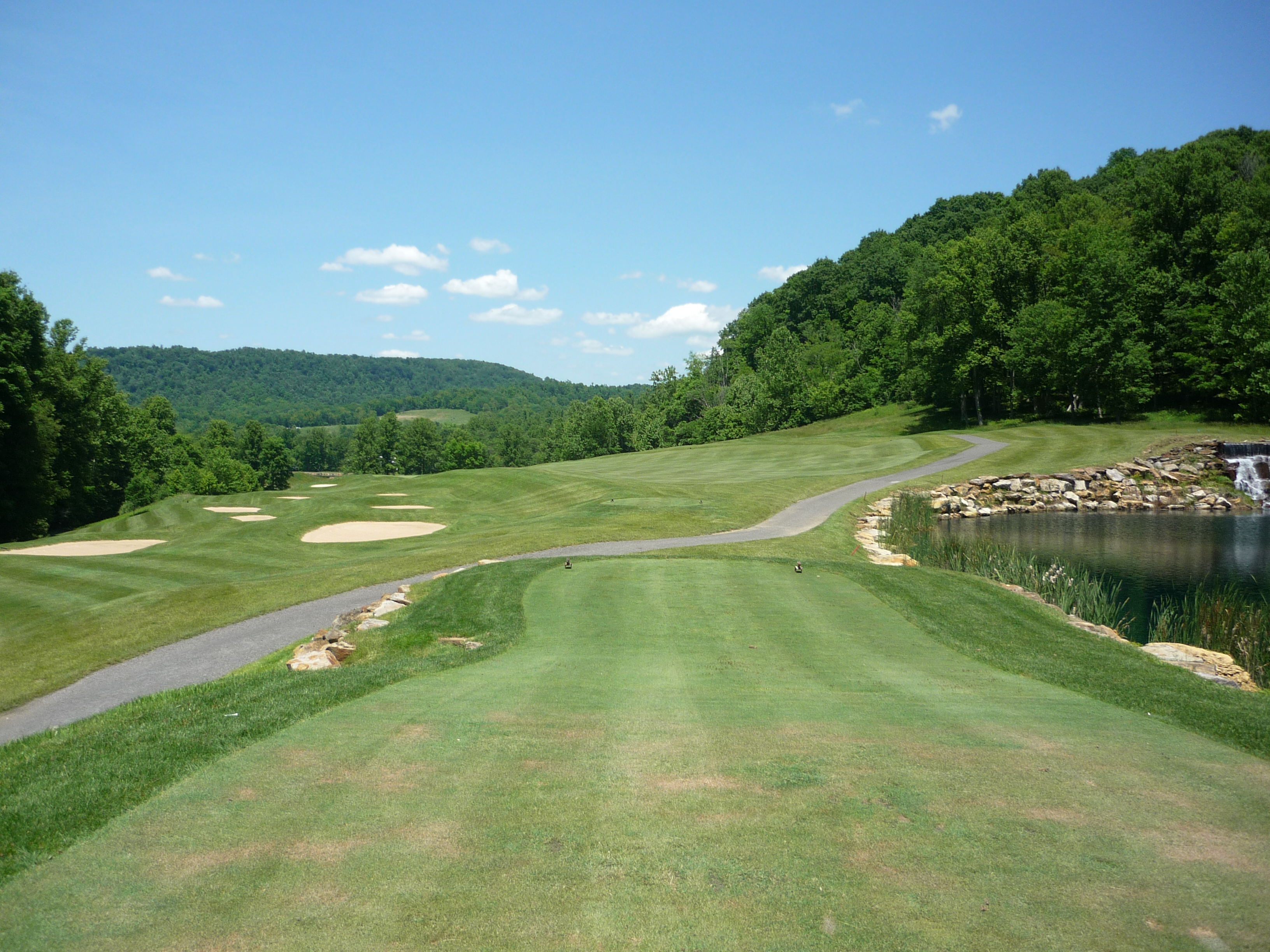
Once you crest the hill, the approach shot comes into focus. This is from about 145 yards and you do not want to go long.

The green has a lot of undulation. You can see the slopes in the front and the right sides of the putting surface.
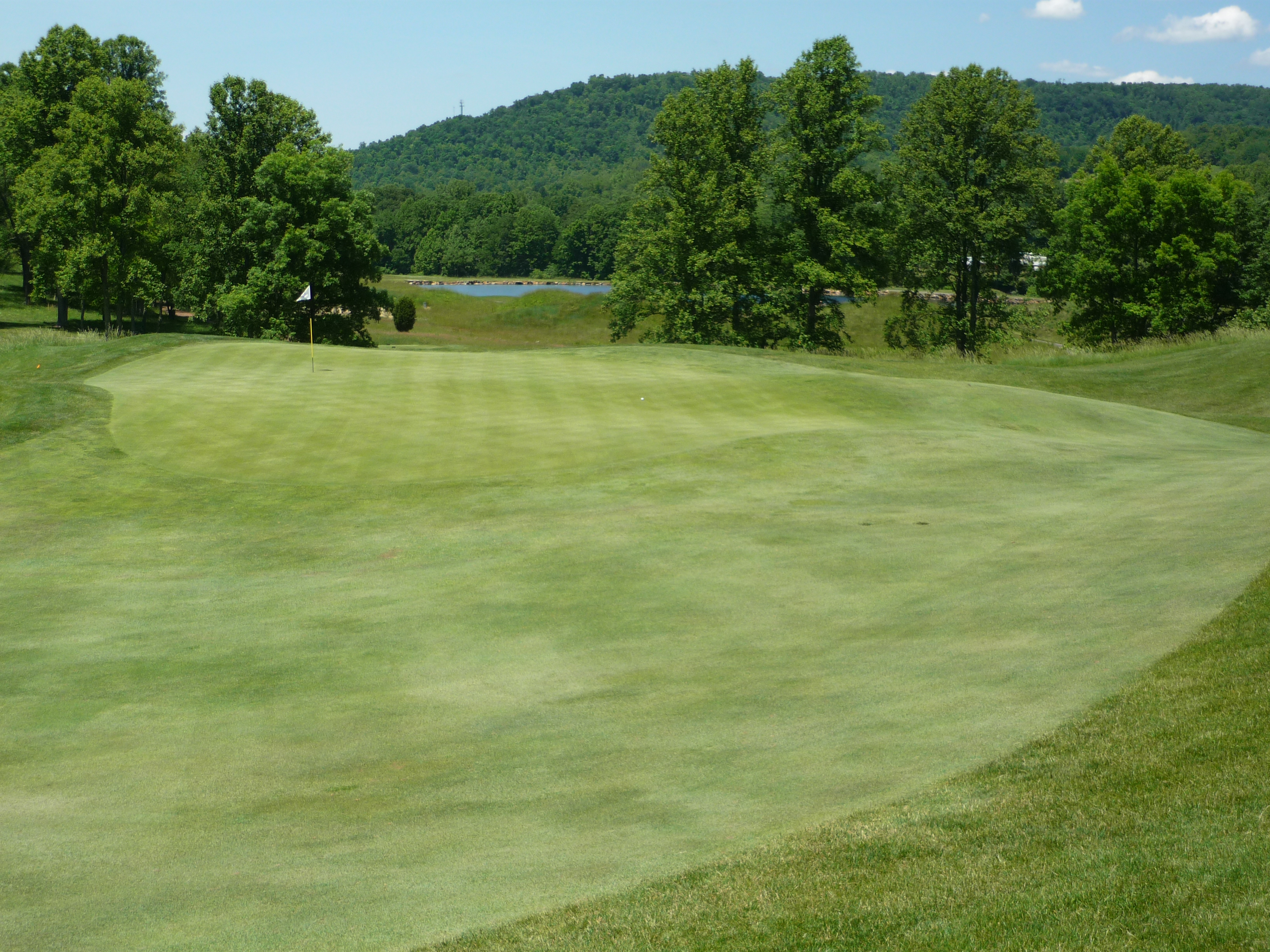
Hole 2 – 374 yards – Par 4
This hole bends to the left. Depending on your length you can go further left. If you go too far right it is possible to run the ball through the fairway. This is a great strategic tee shot.
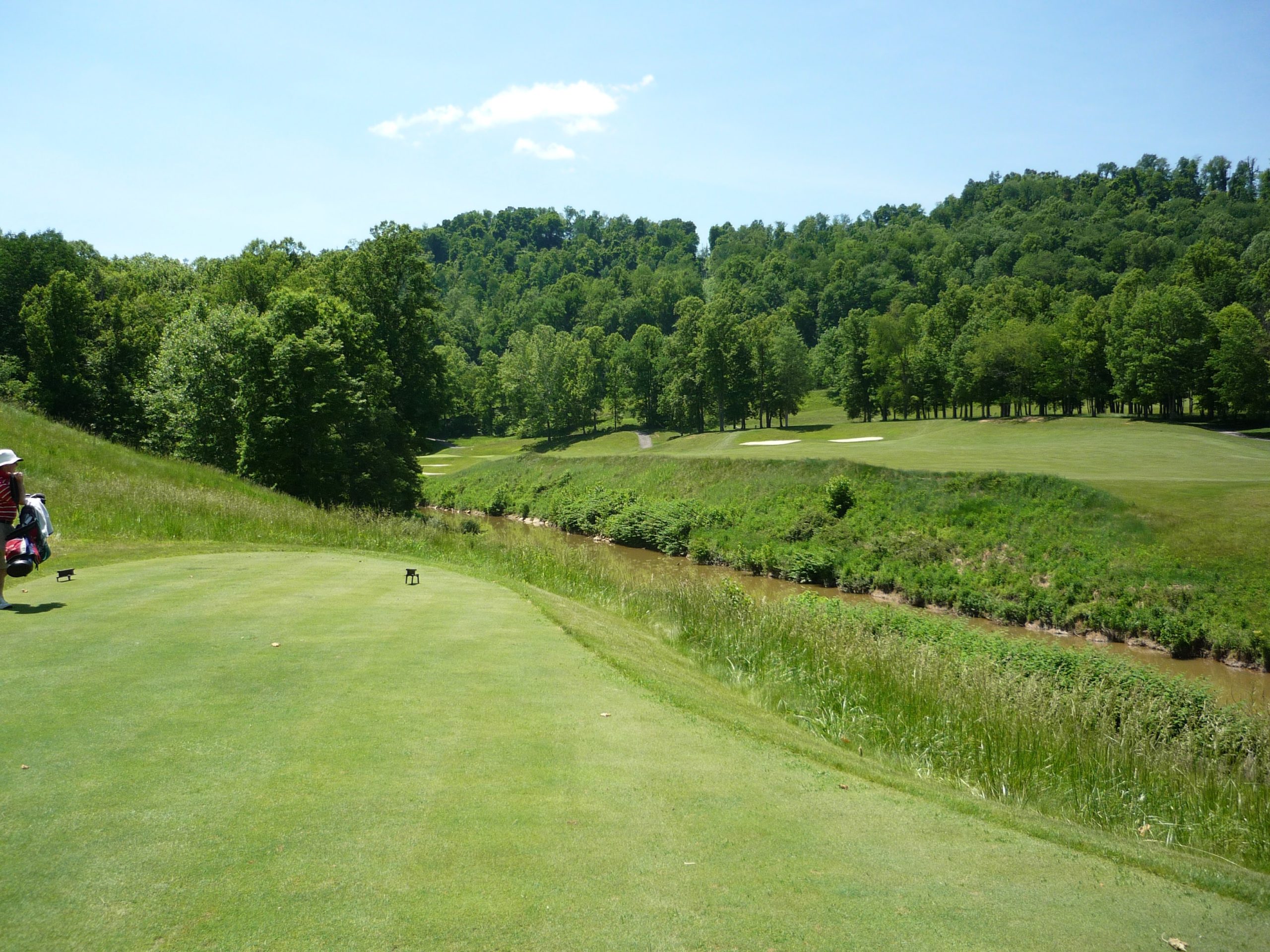
The second shot plays more straightaway. The only real trouble is the left bunker and the hazard beyond that.
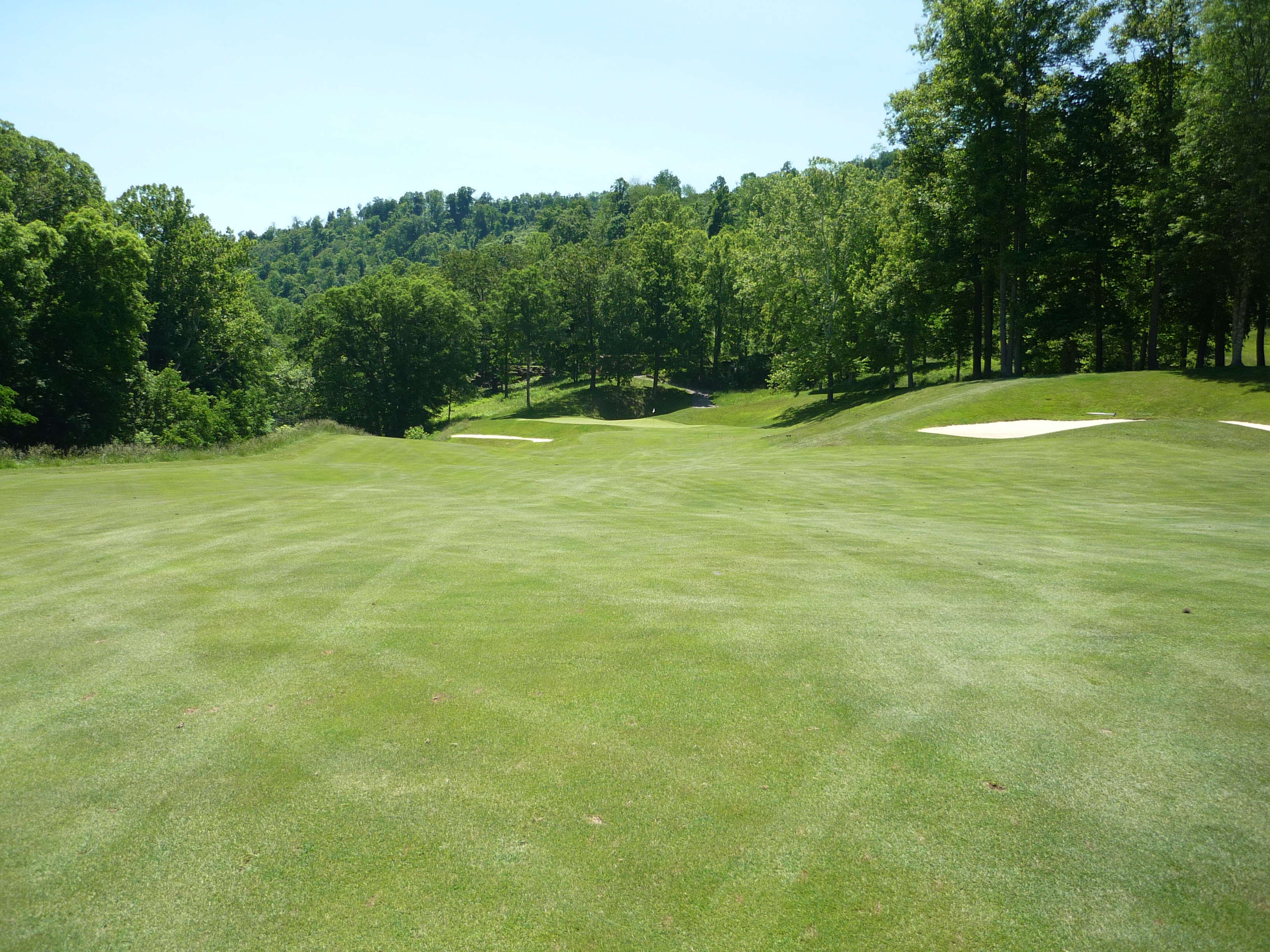
Here is a shot of the green from about 50-60 yards. Depending on how dry the course is, you could run up your second shot here.
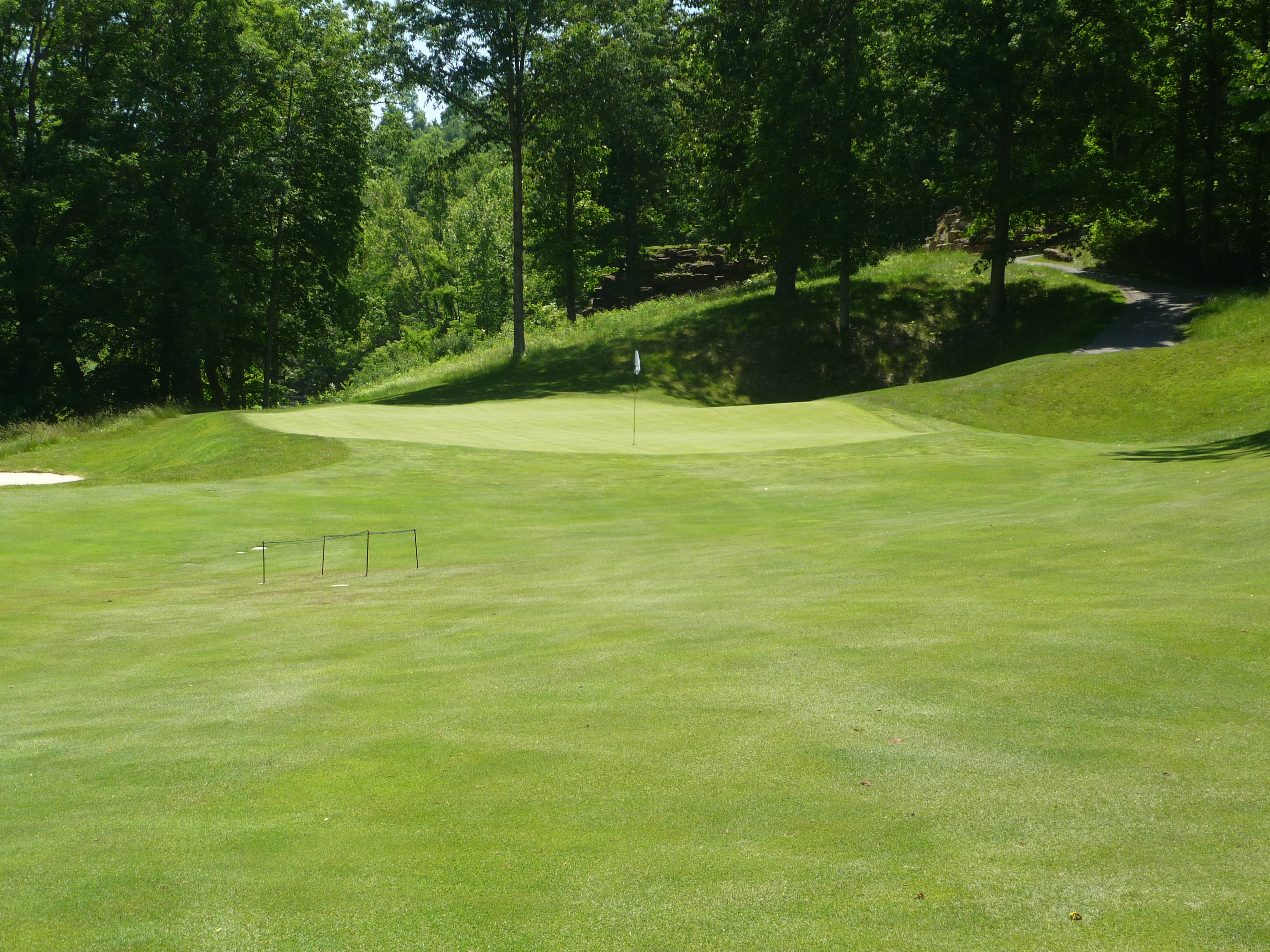
The green has some slope to it, get used to that theme. The back of the green is much hillier than where the flag is in this picture.
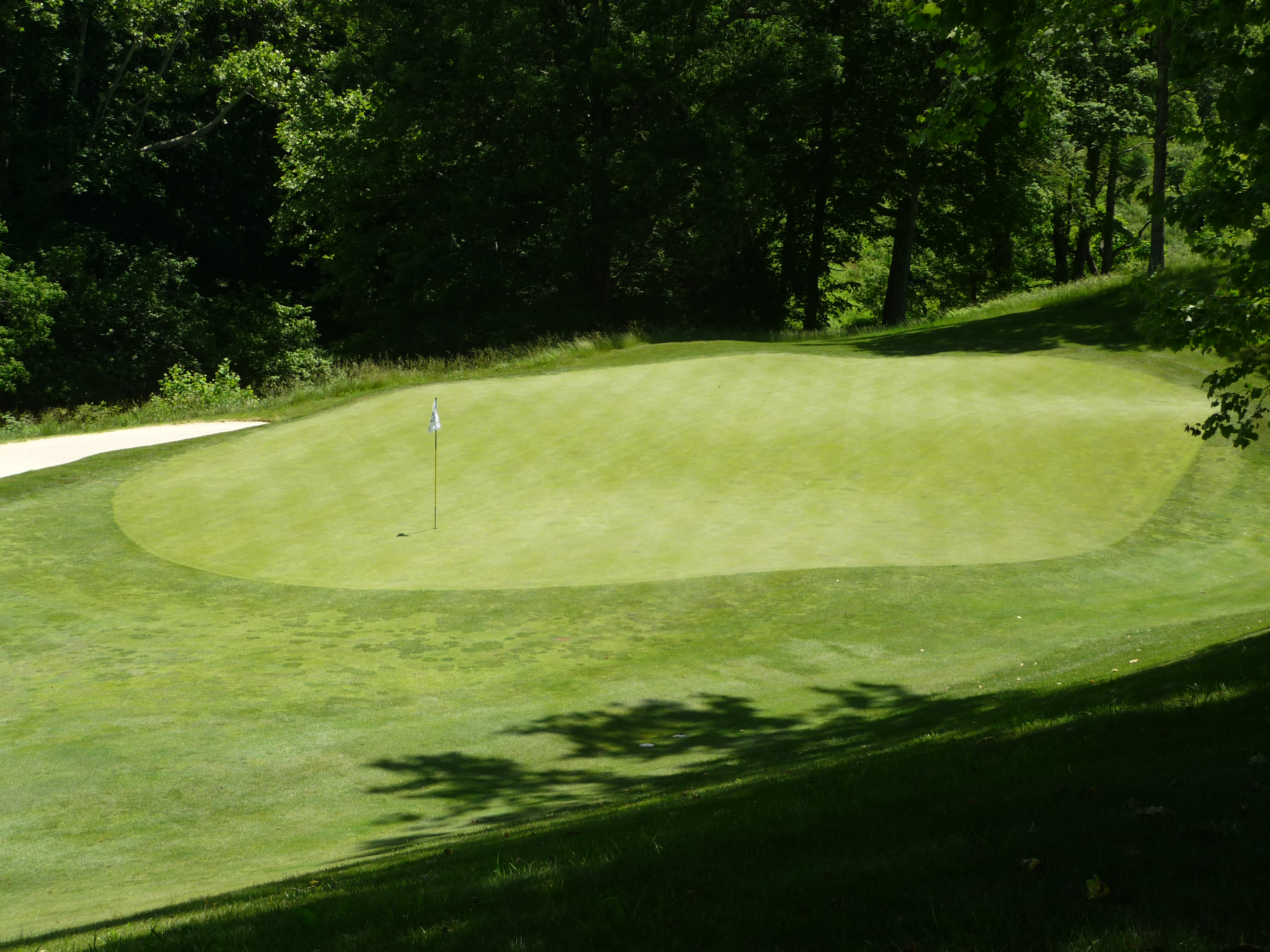
Hole 3 – 348 yards – Par 4
This is a shortish par four. Either shot shape off the tee works well. The bunker is not really in play for most players.
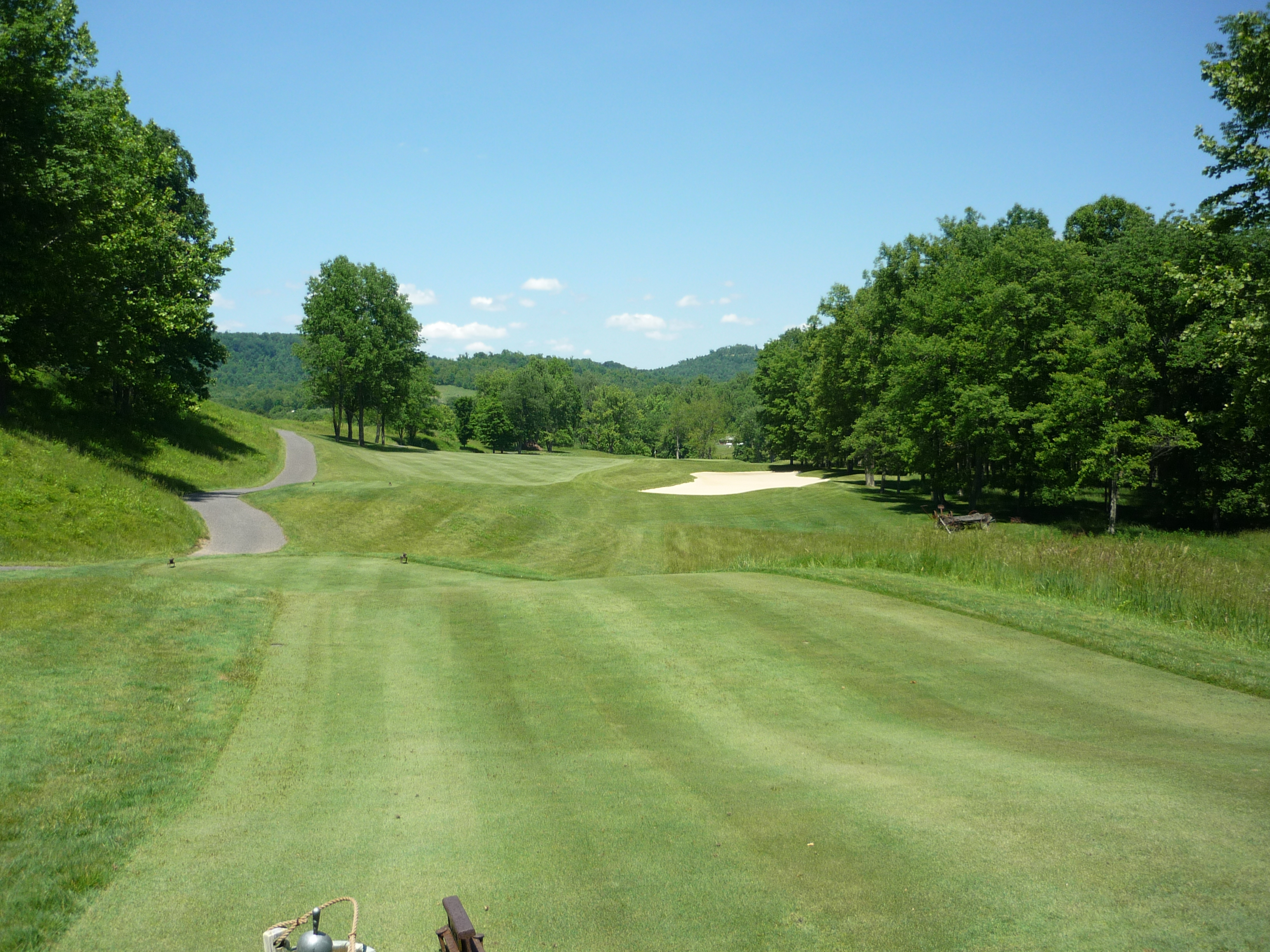
The second shot is the star of this hole. There is a greenside bunker short and right that must be avoided. Long is also bad.
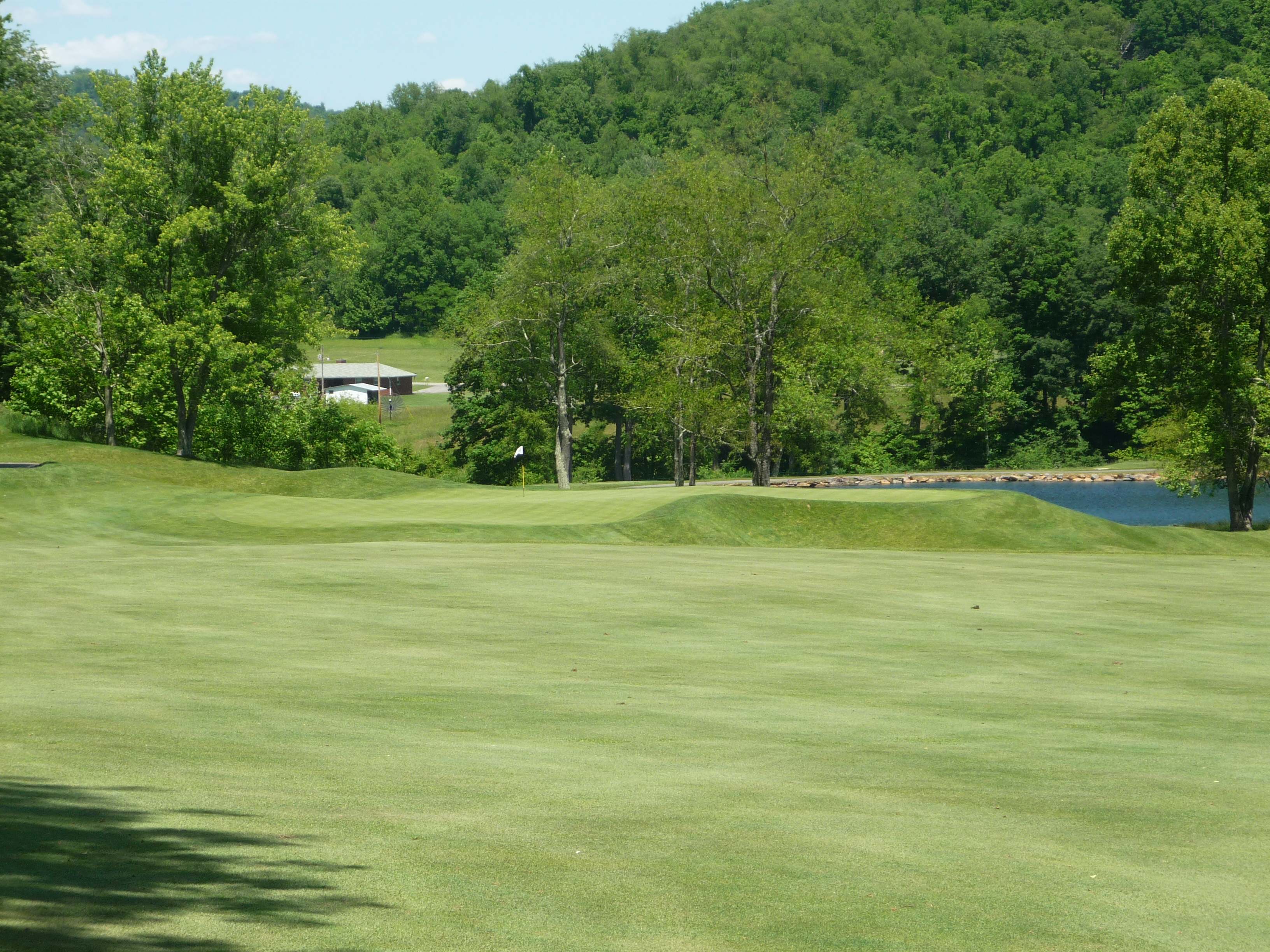
The green has a wavy quality to its slope. Any shot trying to carry the bunker needs to go a bit farther since the fringe goes deeper into the green at that location.
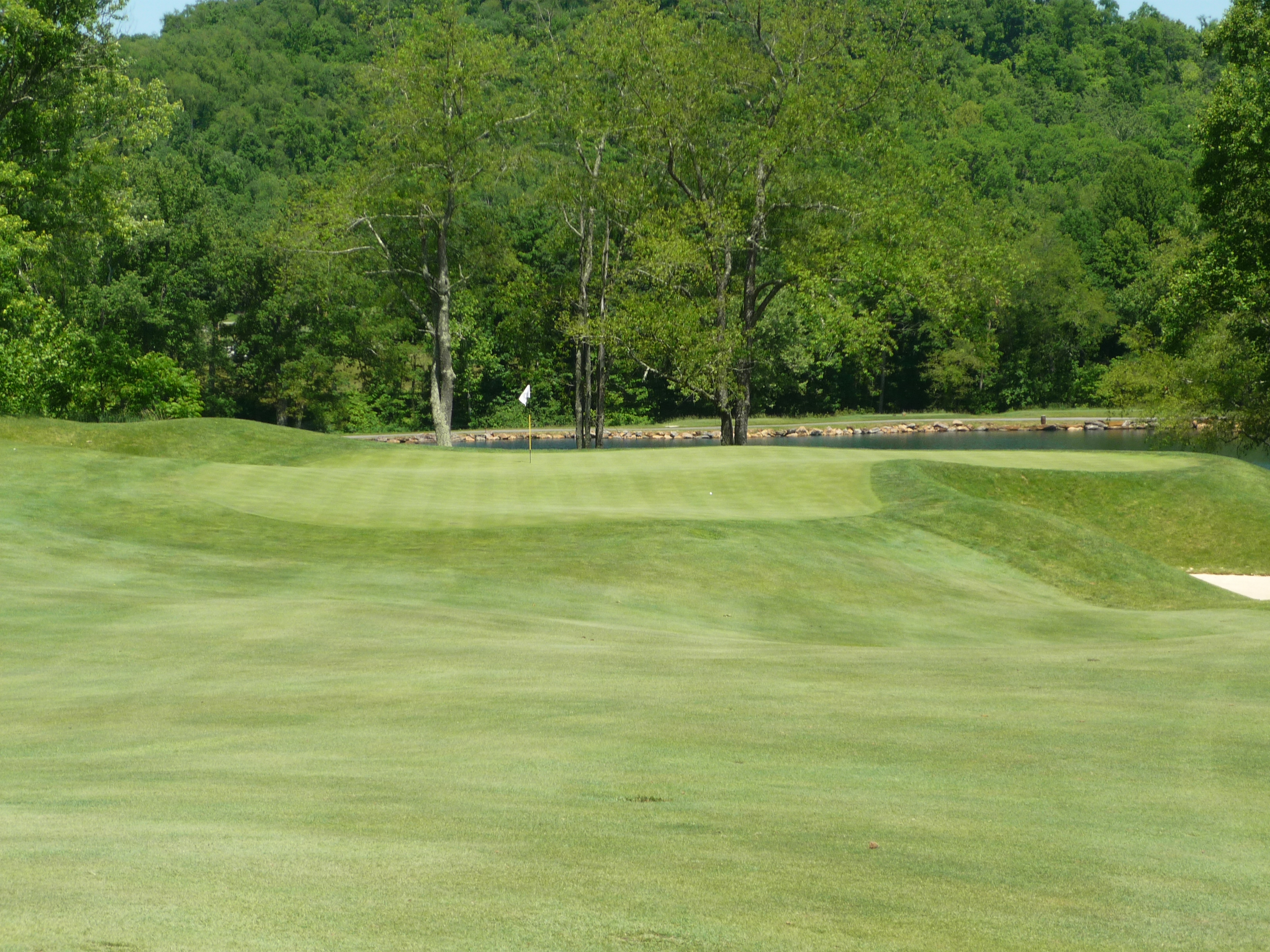
Hole 4 – 178 yards – Par 3
This is a stunning hole. There is obviously some bailout to the right, but every other line is do or die. This hole fits in well with the other famous Dye par threes. Depending on where the flag is located, club selection can change since the green is very deep.
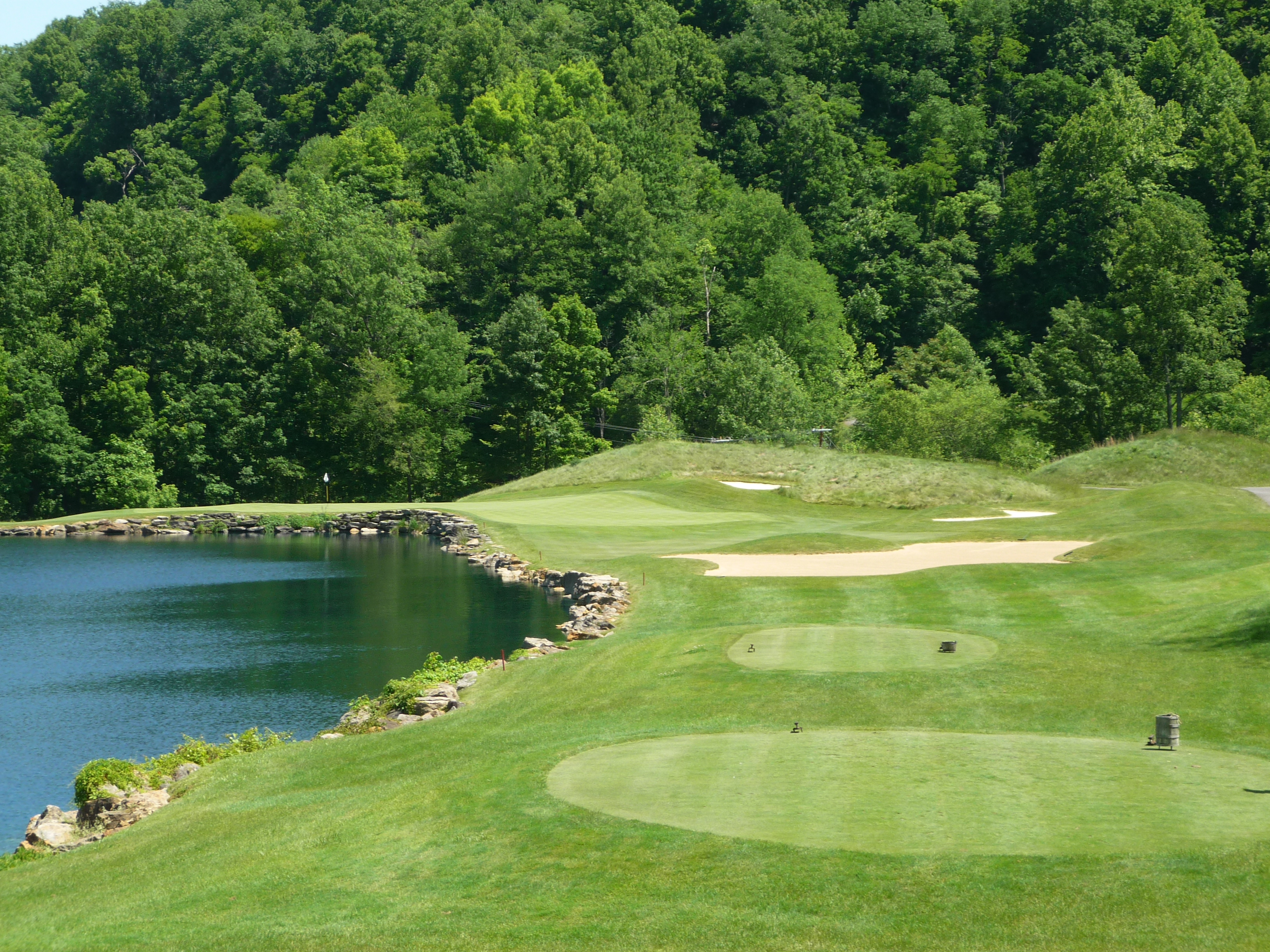
I thought the image in the photo below was very fitting. It is in the pond you see in the photo above. You can’t really make it out, but that mailbox is for suggestions on the course. Classic!
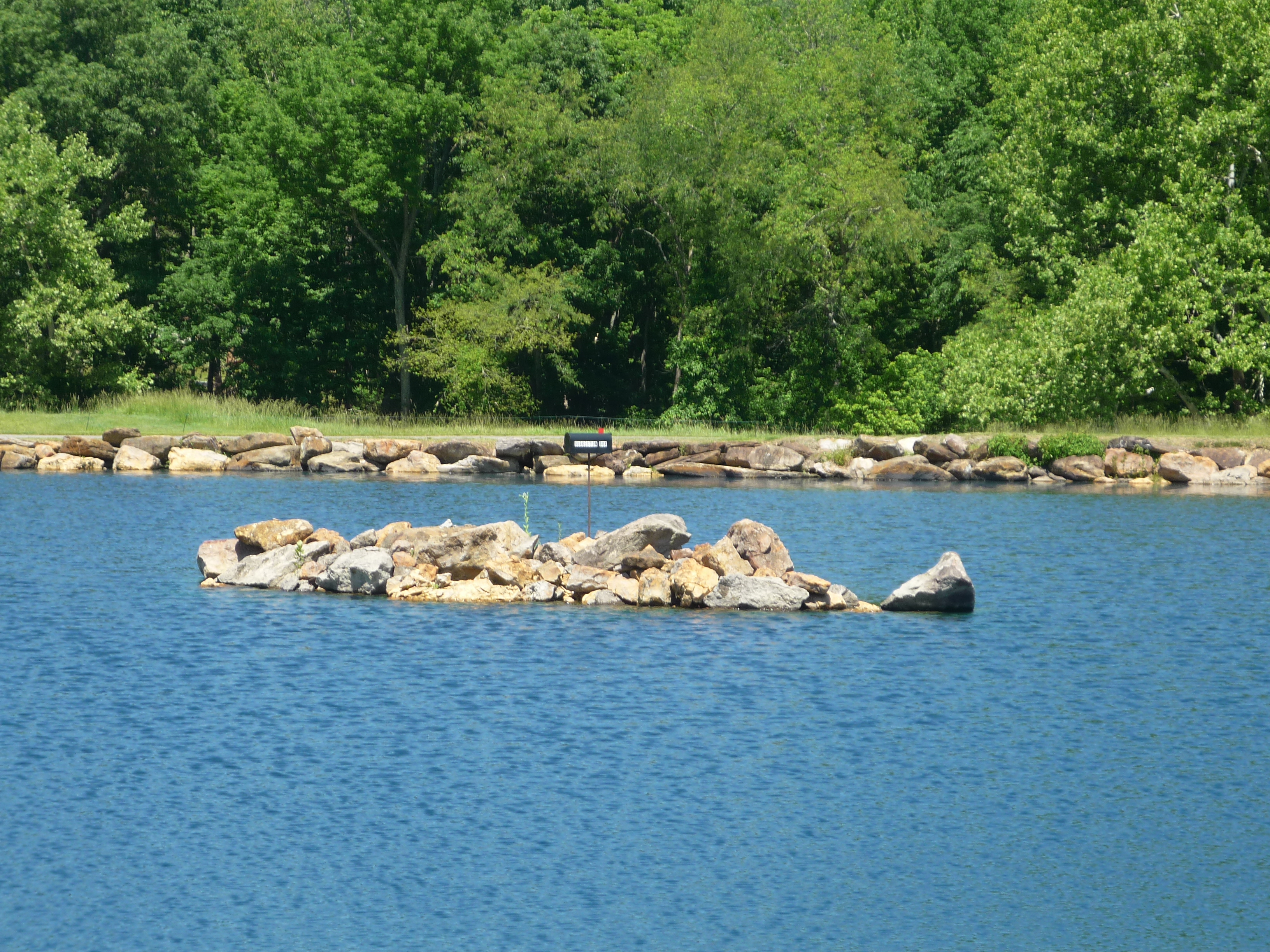
The wife was walking along with me on this round and you just know she was going to get a turtle picture if she could. Check this guy out.
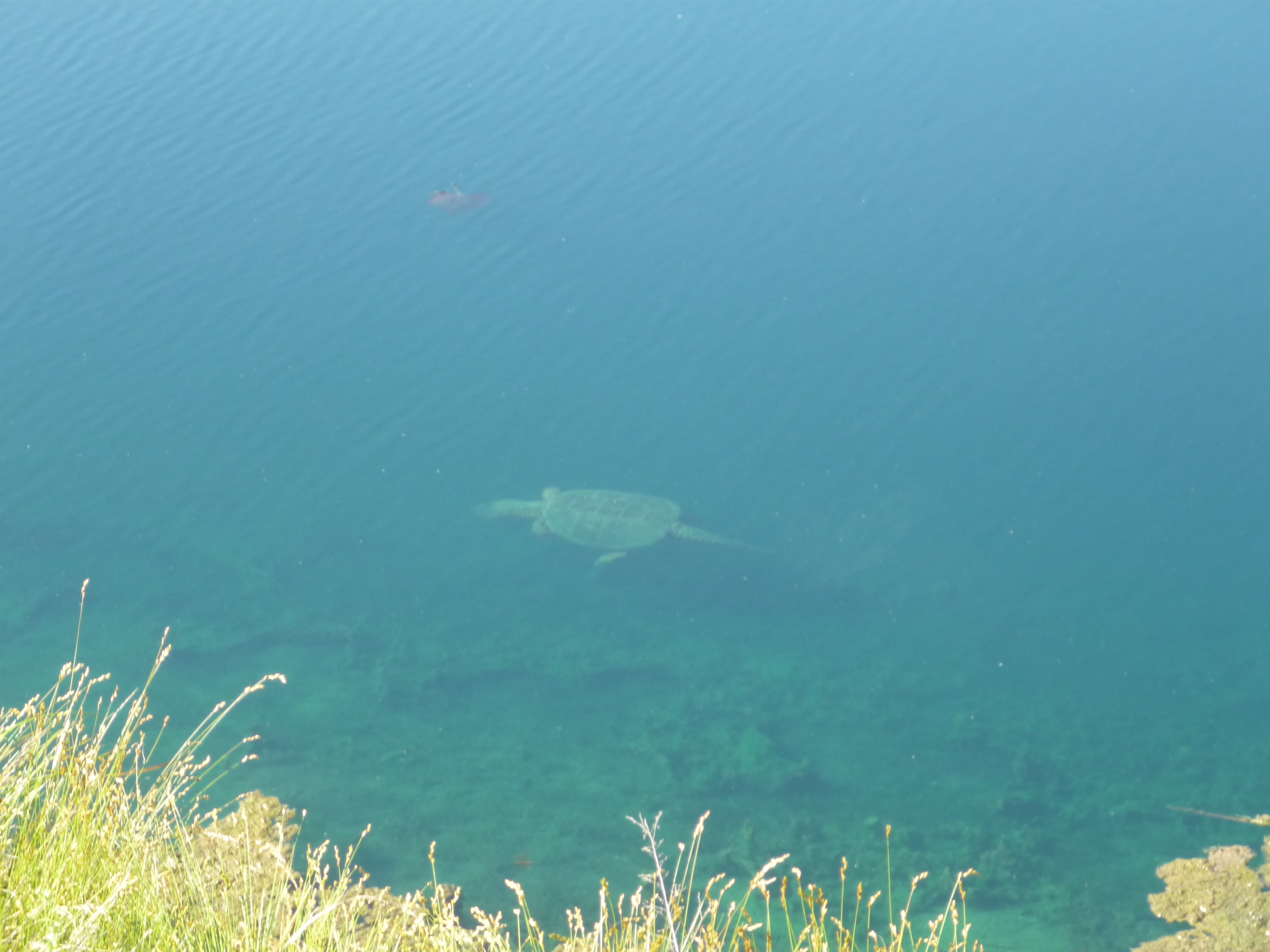
You can see just how deep the green is in this photo taken from the front edge. The putt seen here is about 40-50 feet.
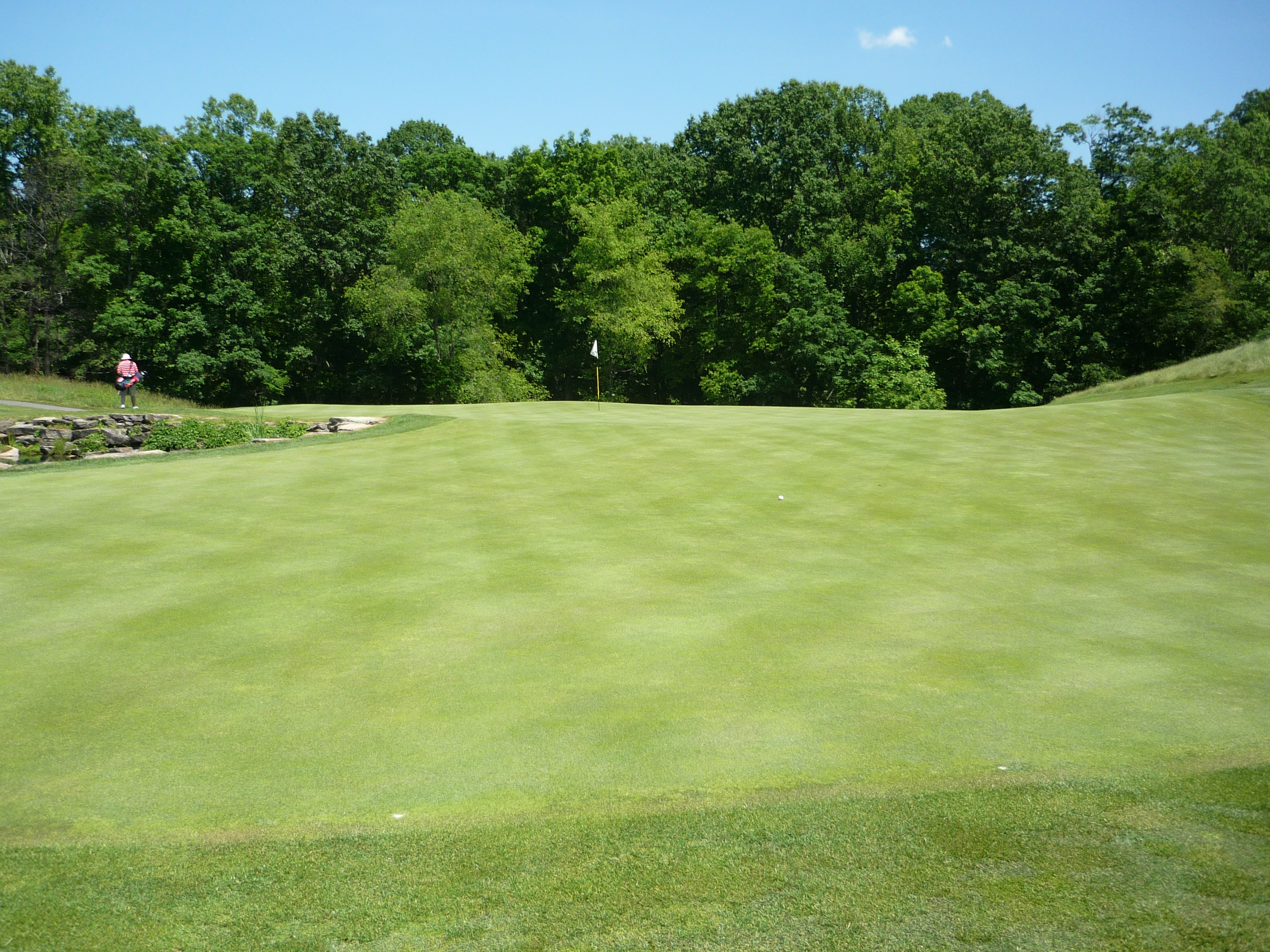
Hole 5 – 508 yards – Par 5
This is a great par five. I imagine the pros went for this green in two a lot. The hole bends to the right, but there is trouble all down that side. A good line is at the bunker straightaway in the distance.
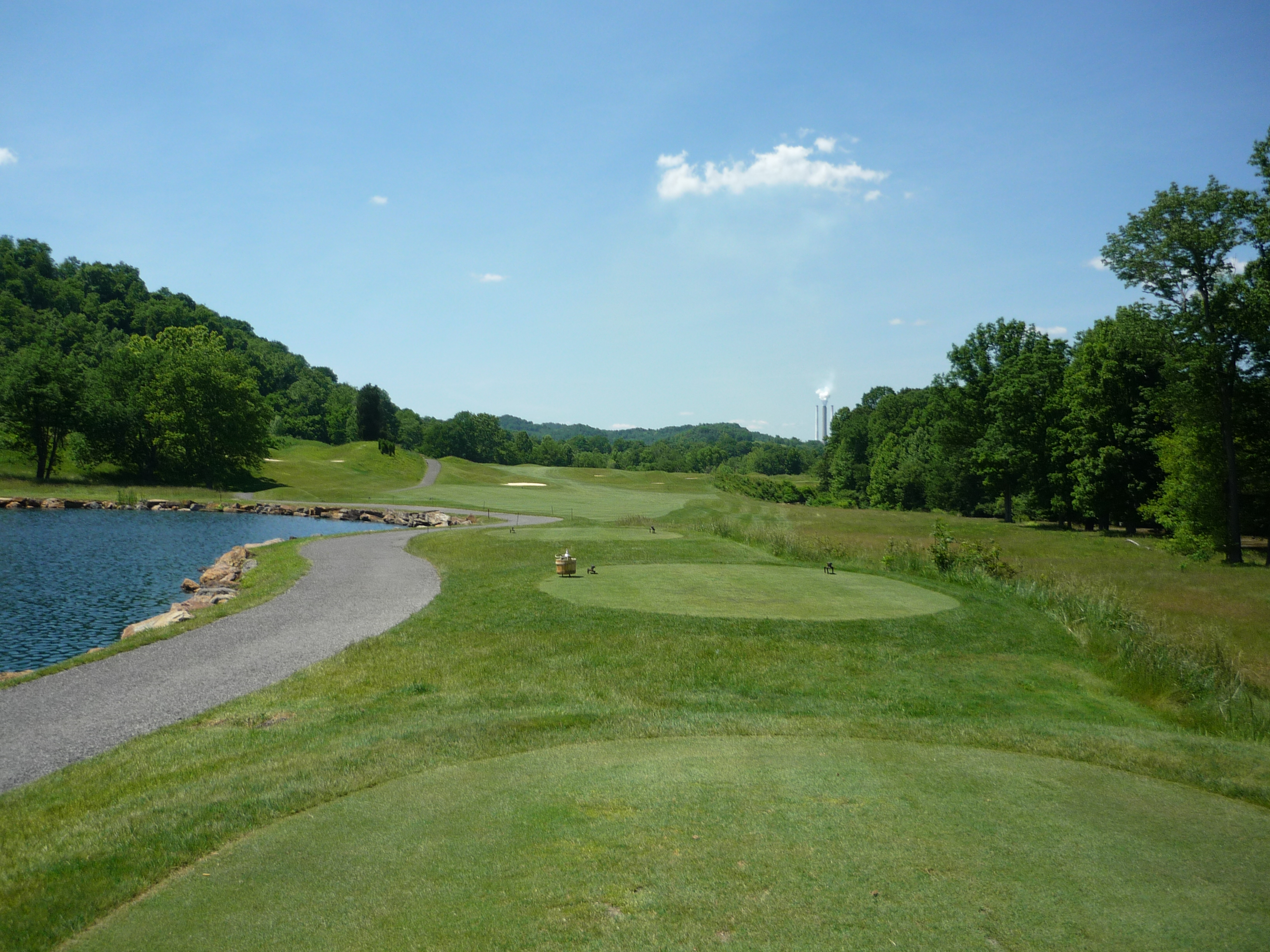
I didn’t hit the best drive so I decided to lay up. The shot plays uphill.
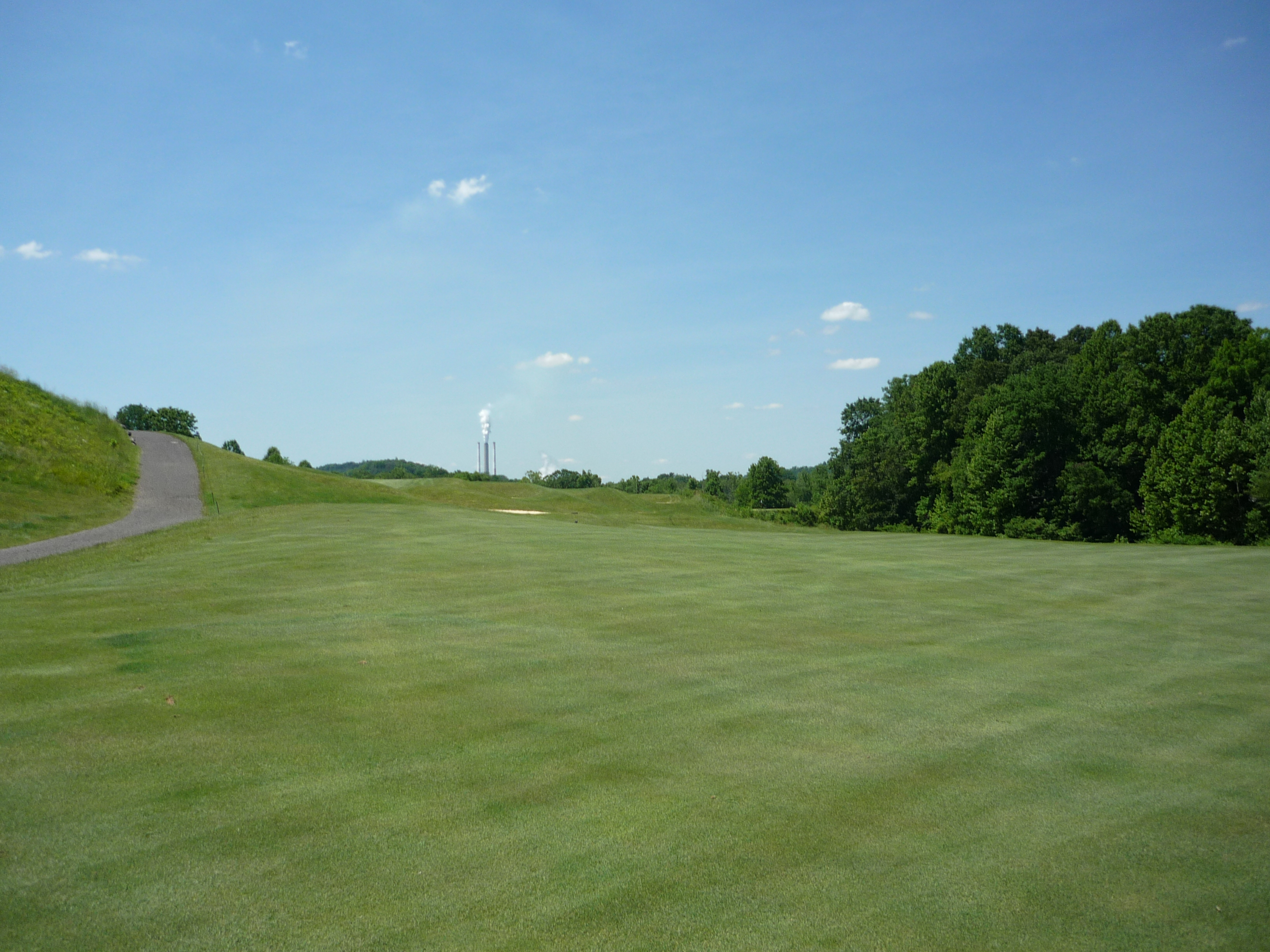
Hopefully, with a wedge in your hand this shot shouldn’t be too harrowing. However, the hazard does come right up to the green on the right side.
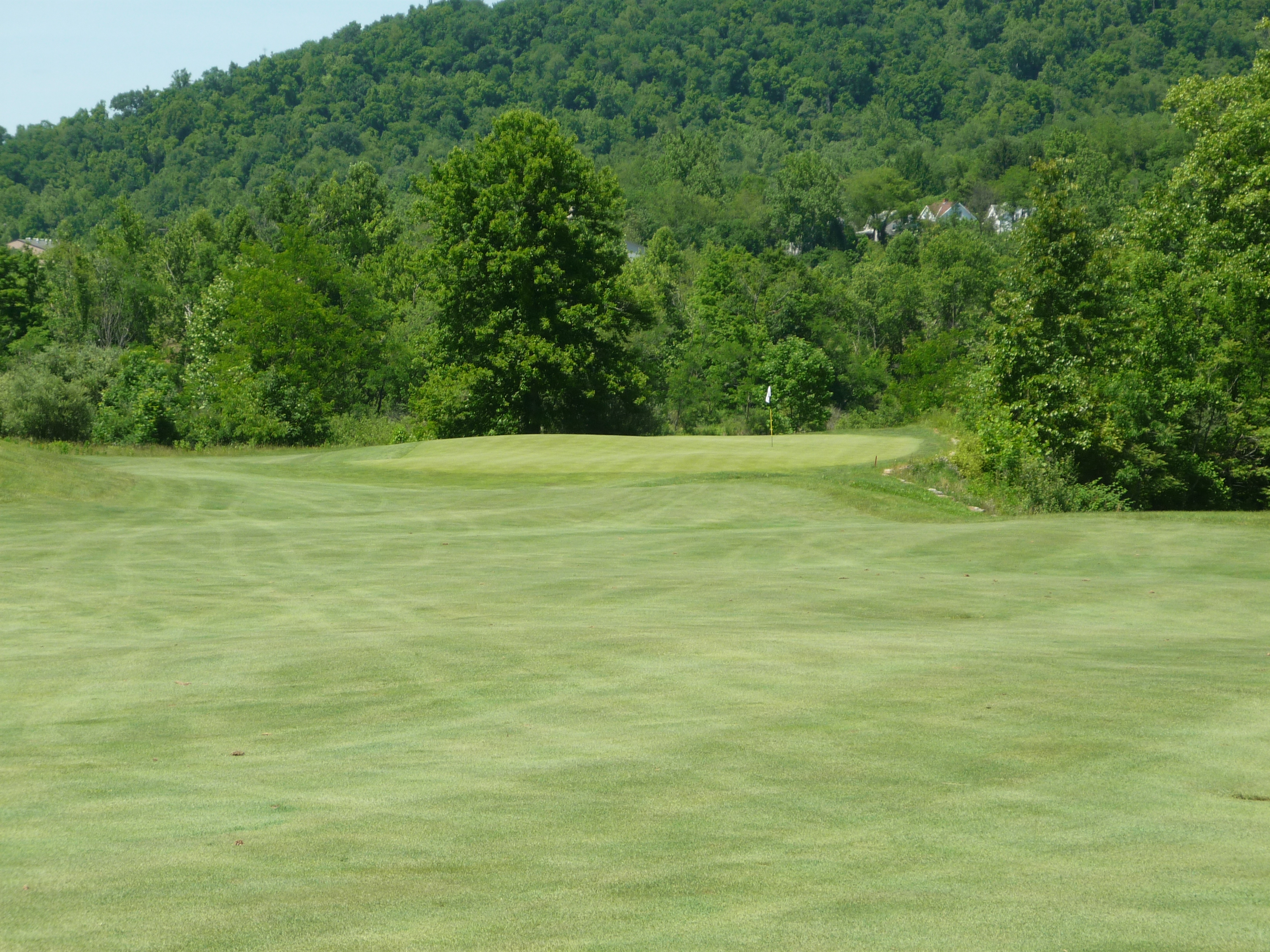
This green is small compared to what we have seen so far. This makes sense if it is built to accept wedges and short irons.
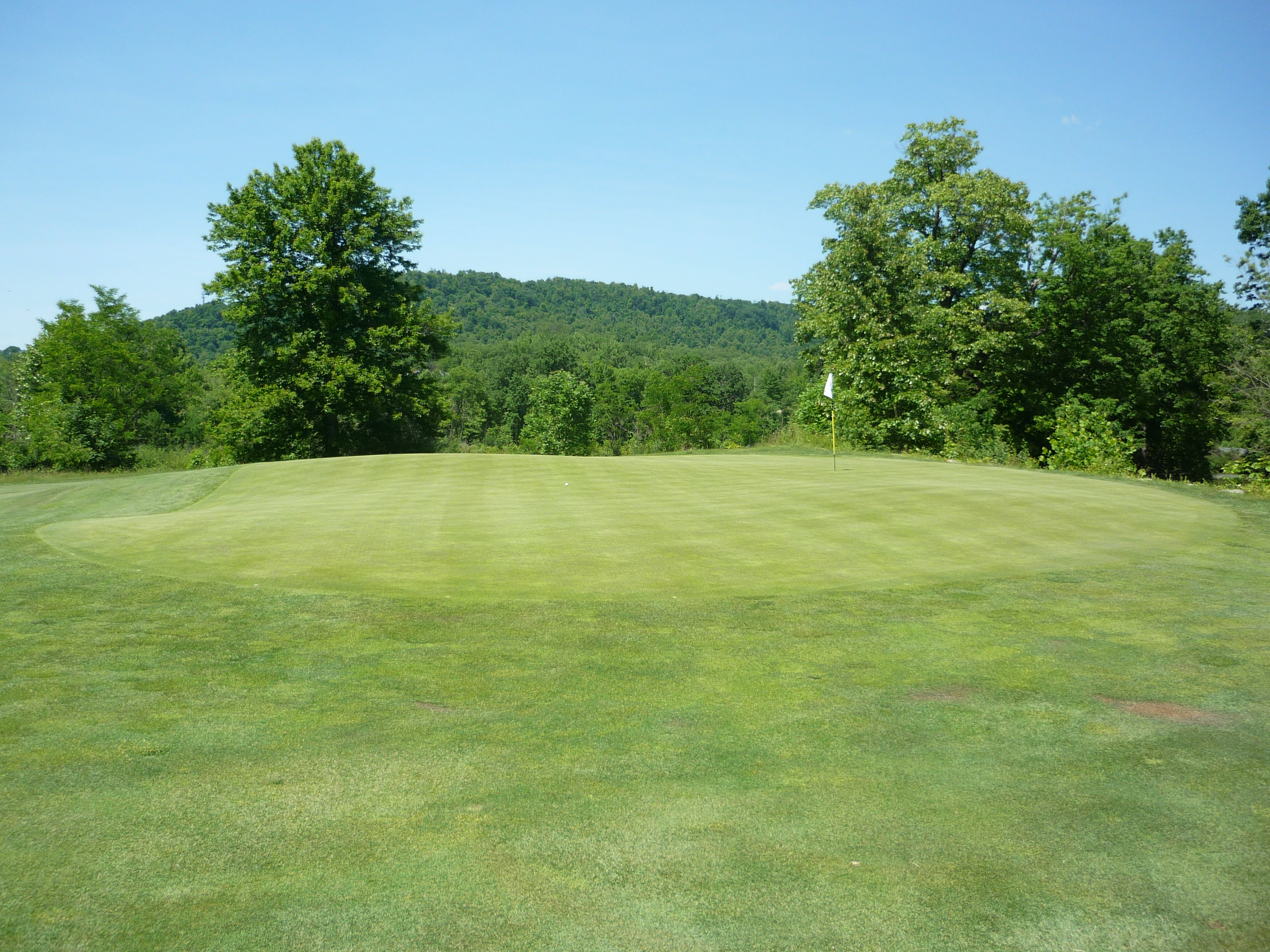
Hole 6 – 305 yards – Par 4
This is a nice, short hole up the hill. Another opportunity for pros to go for it. The creek goes all the way to the green. The fairway is plenty wide if you are choosing to lay up. It does slope a good deal to the left as you can see.
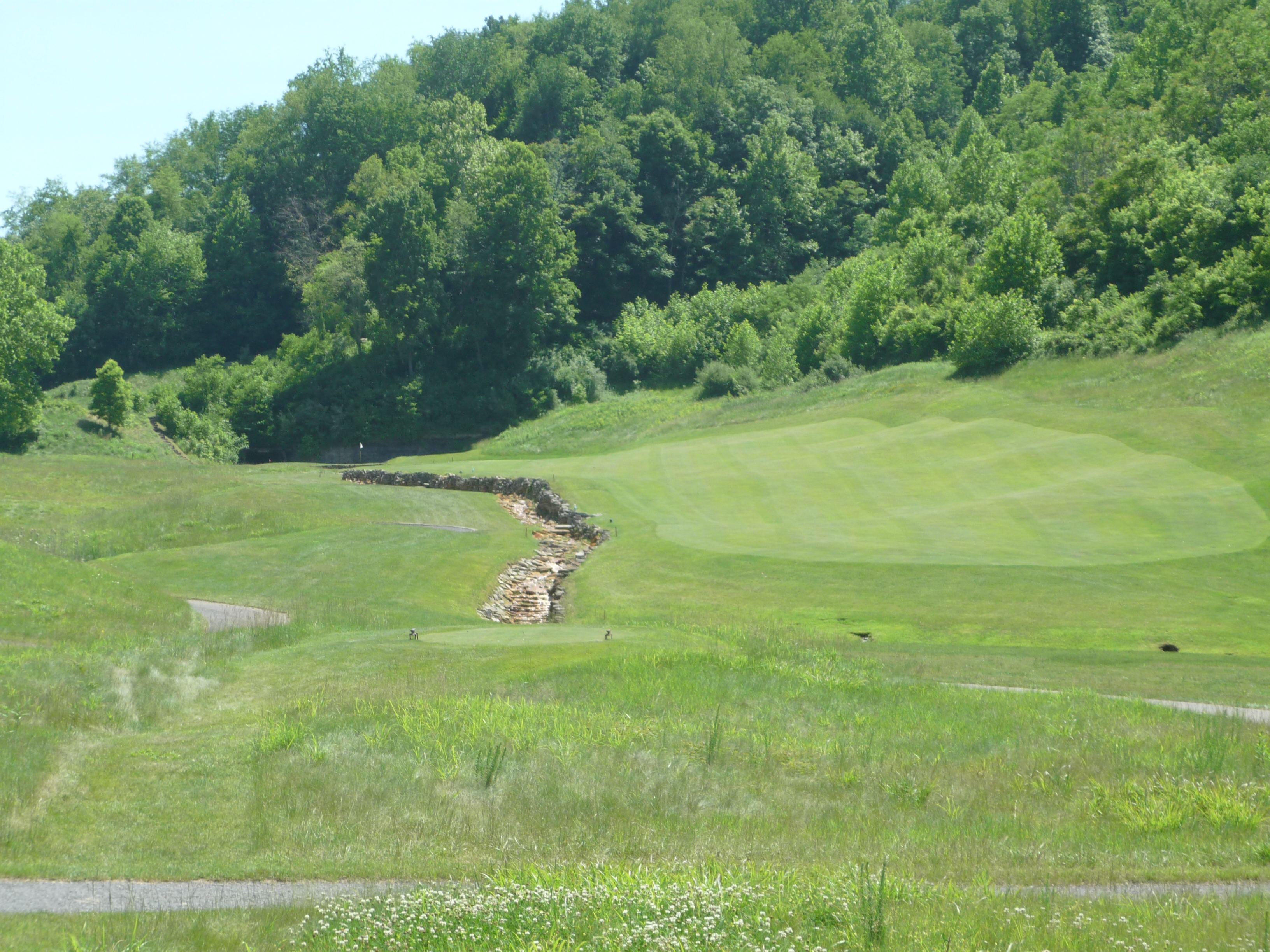
The second shot is seen here.
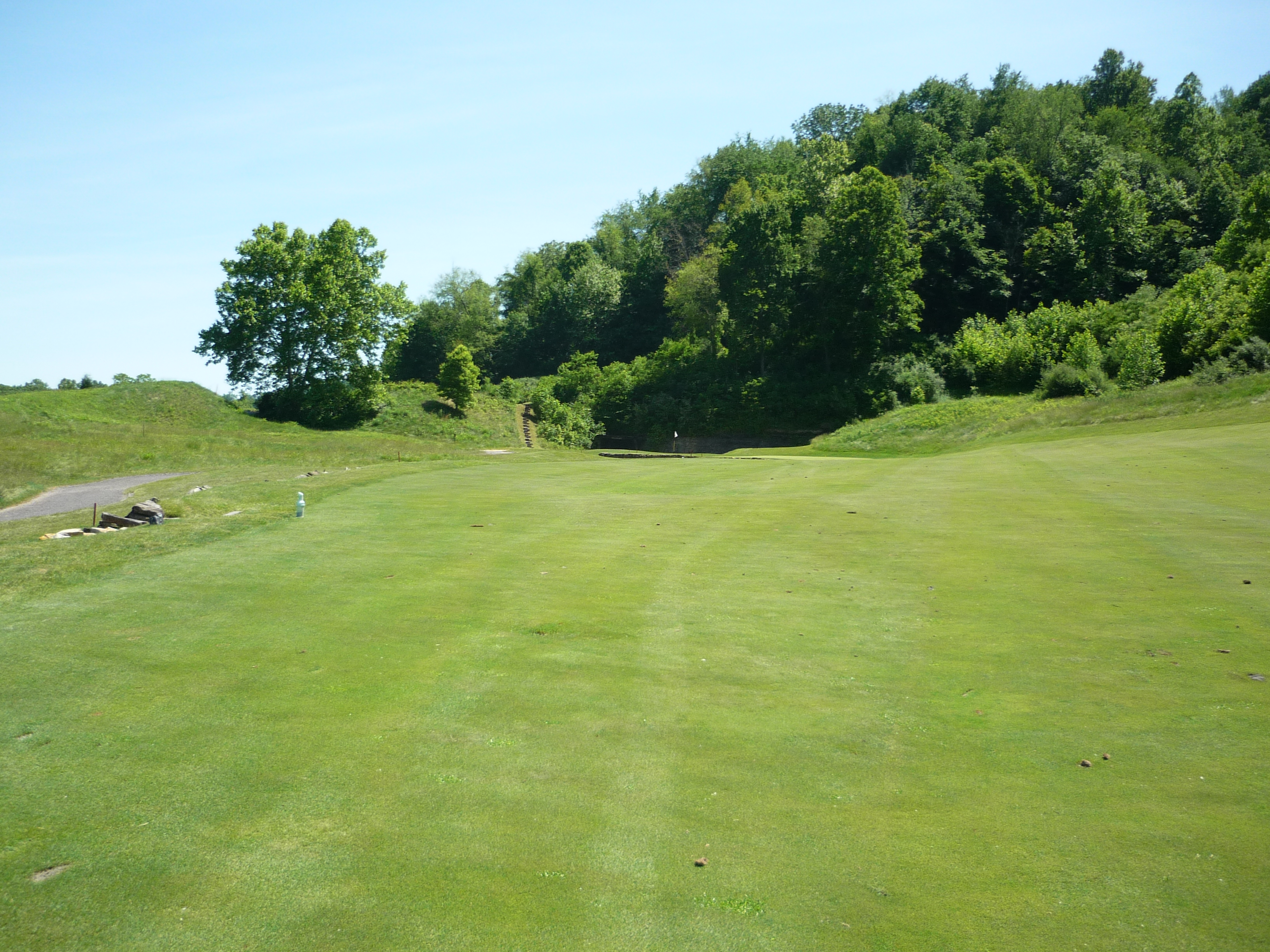
In this photo you can see that the creek can come into play depending on the pin location. Club selection from the fairway is important since it plays a good bit uphill.
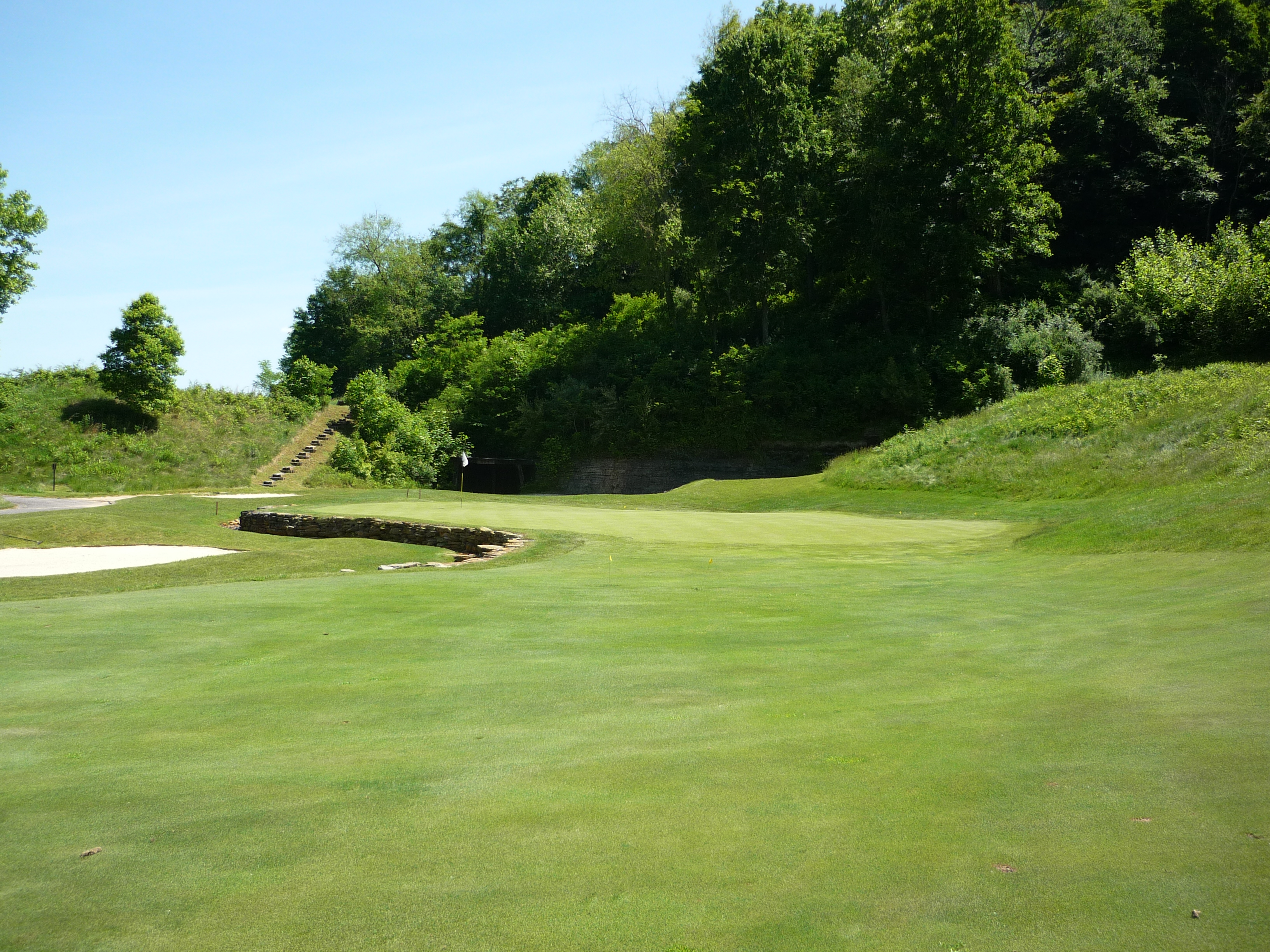
Hole 7 – 147 yards – Par 3
The coal mine theme continues on the way to the seventh. This tunnel is right off the back of the sixth green. This was a cool feature that you don’t see on many courses.
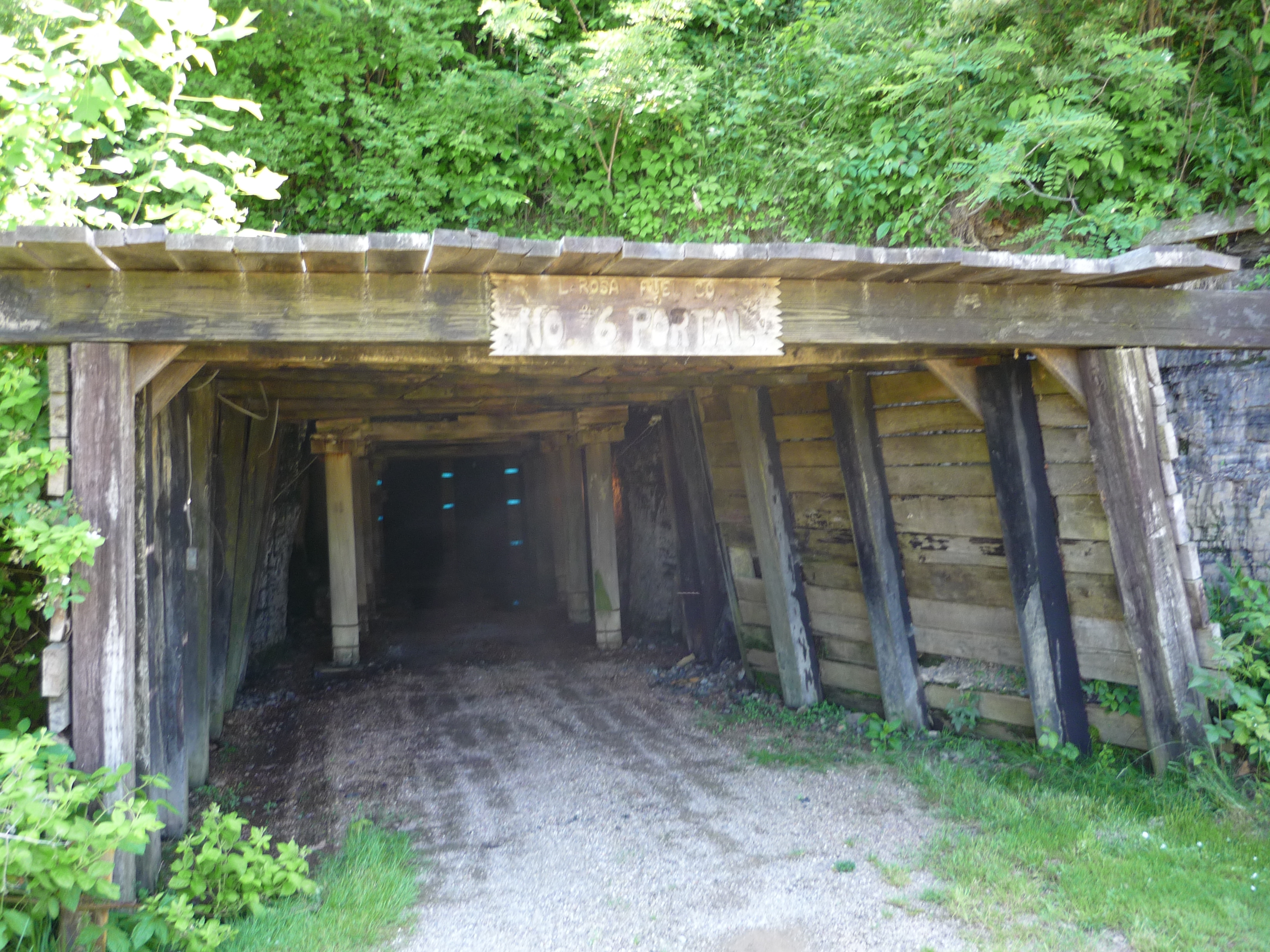
A shorter, but fun one-shot hole. I found it tougher to aim here since the green is a little elevated from it’s surroundings.
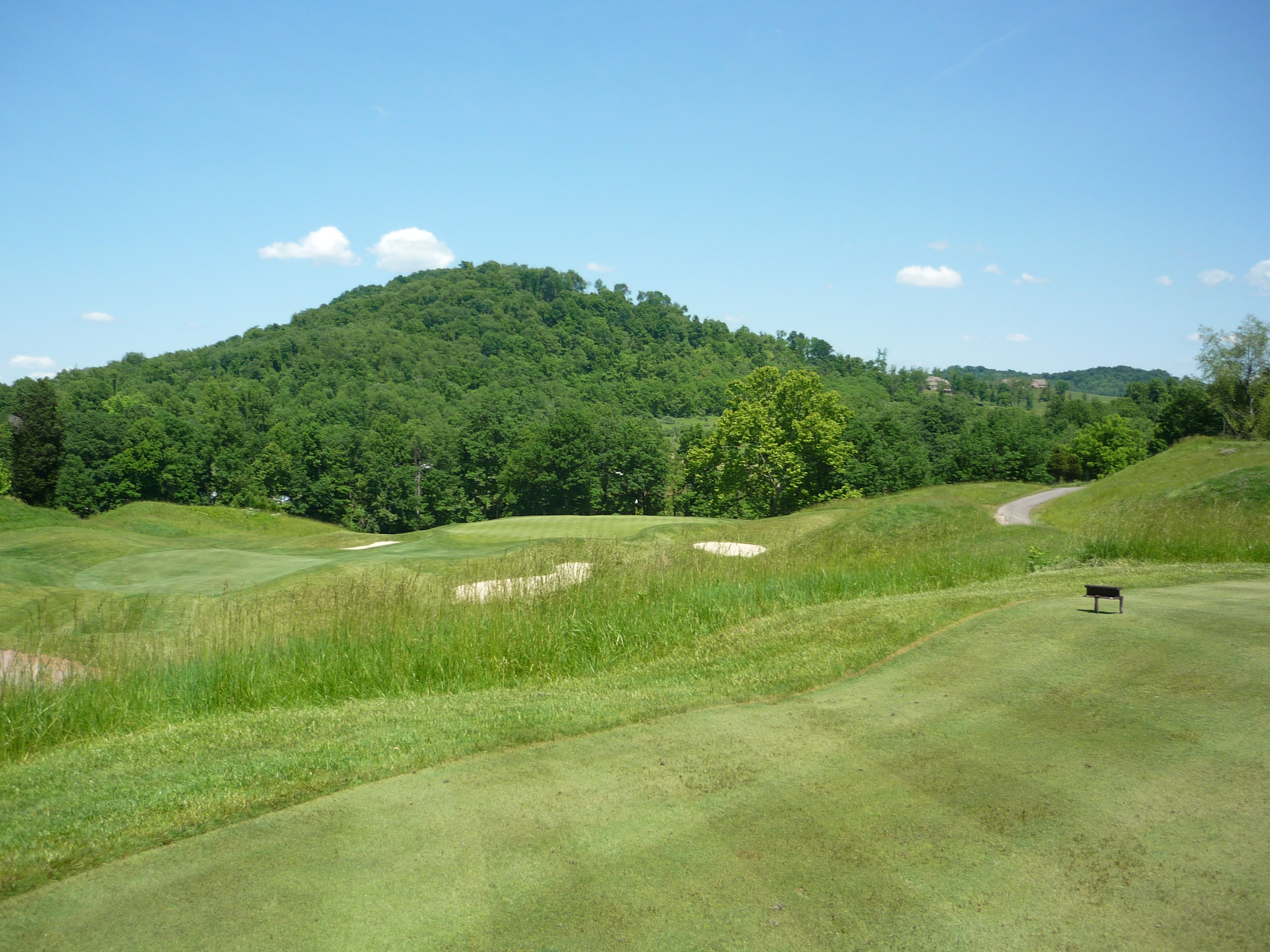
The green is pretty deep and has some undulation.
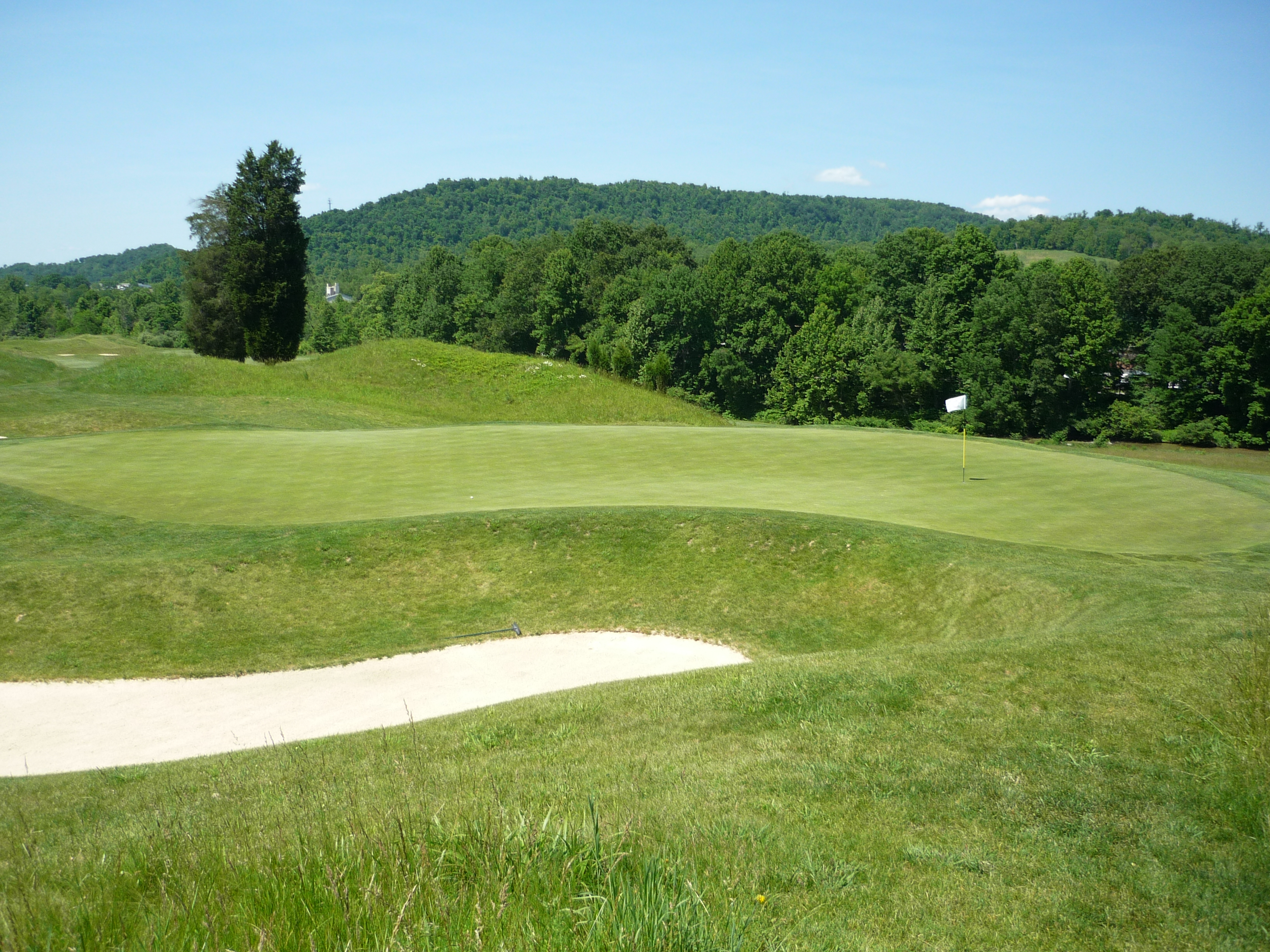
It is a cool looking hole when you gaze back to the tee. The mine shaft and railroad ties give it an interesting motif.
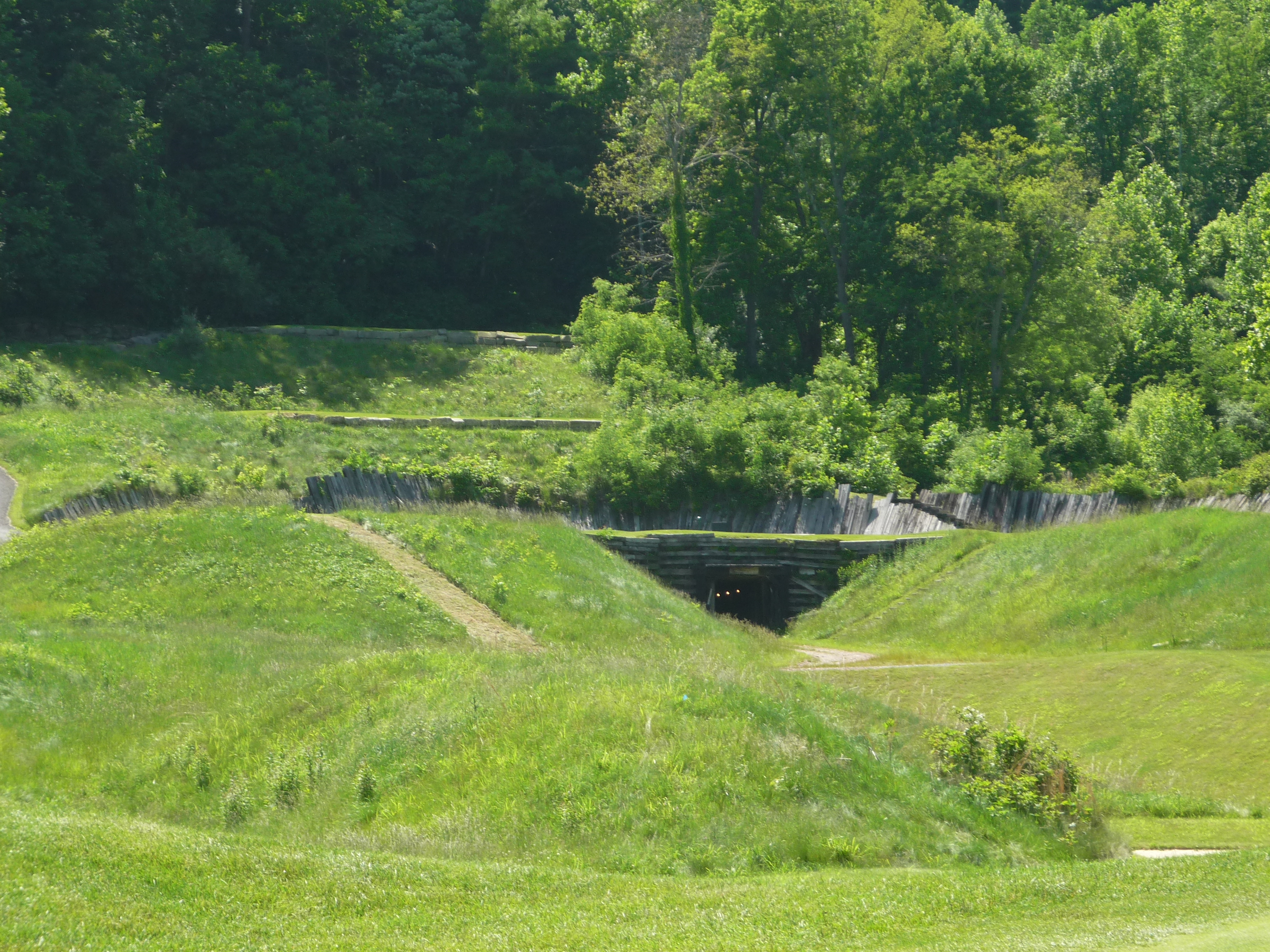
Hole 8 – 480 yards – Par 5
The eighth is reachable with a good drive. A busted drive over the middle bunker seen here is a great line.
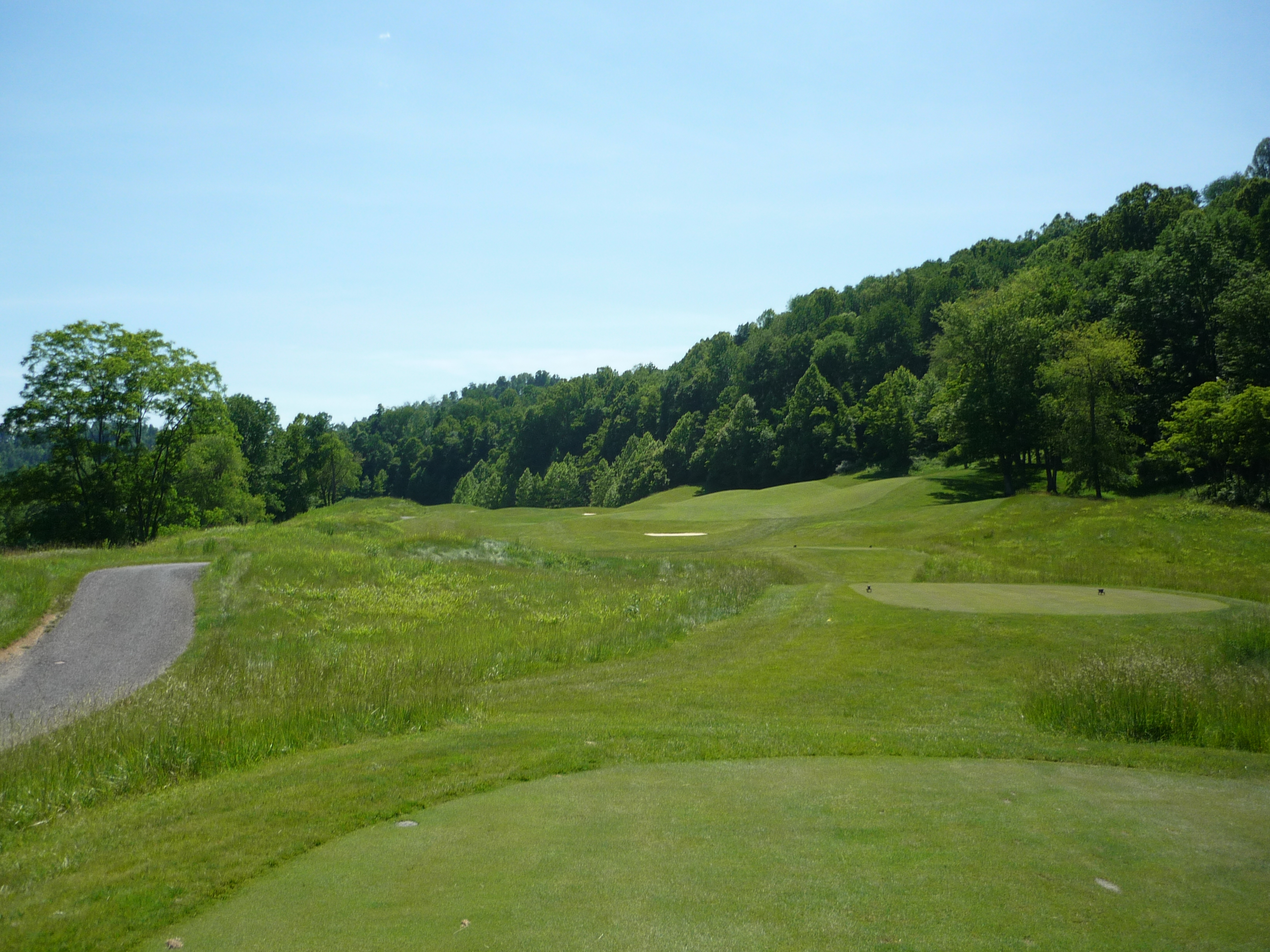
The second shot plays downhill to a blind green.
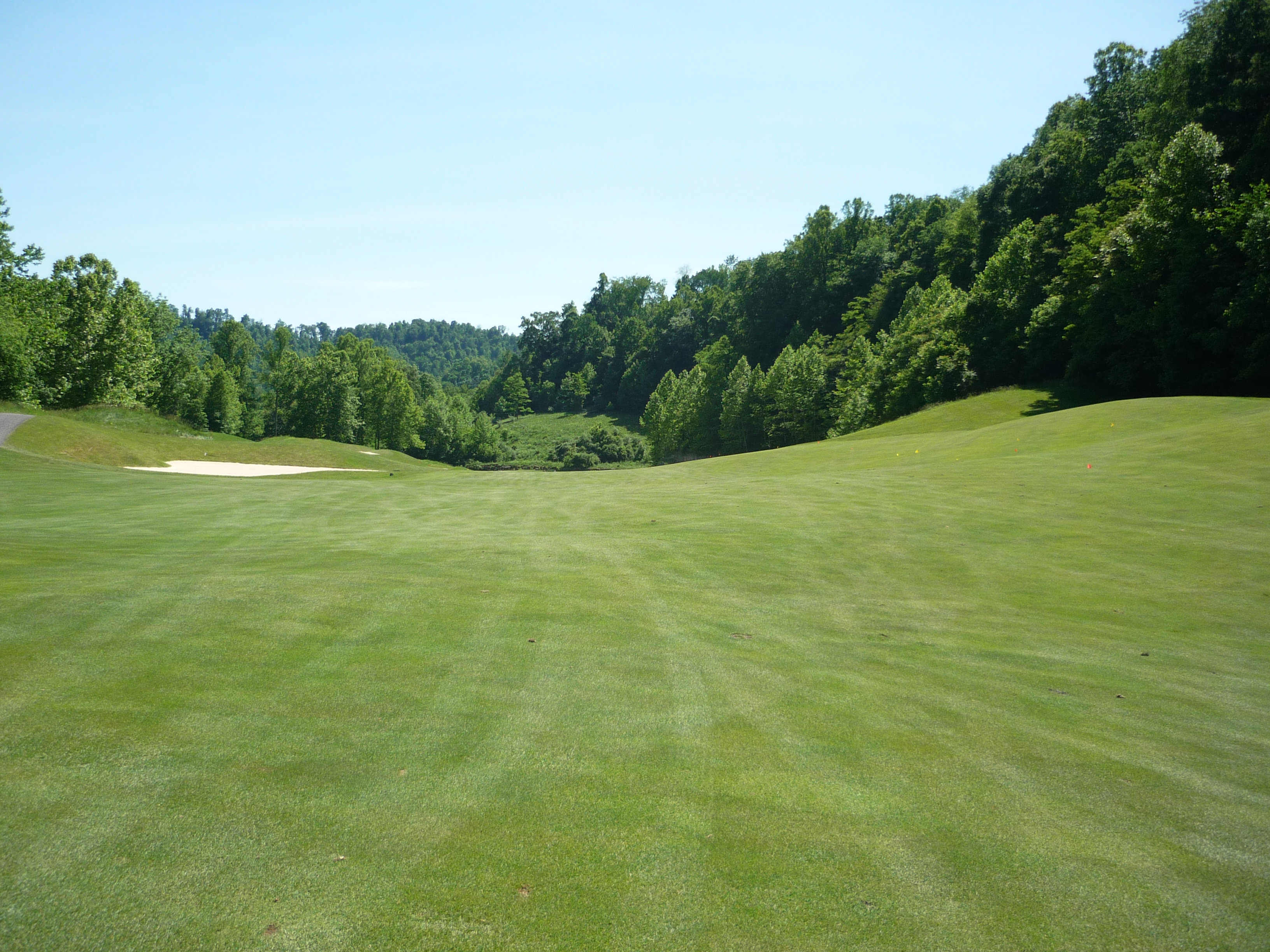
Here is a shot of what you are hitting into on your second stroke. There are plenty of bunkers to avoid.
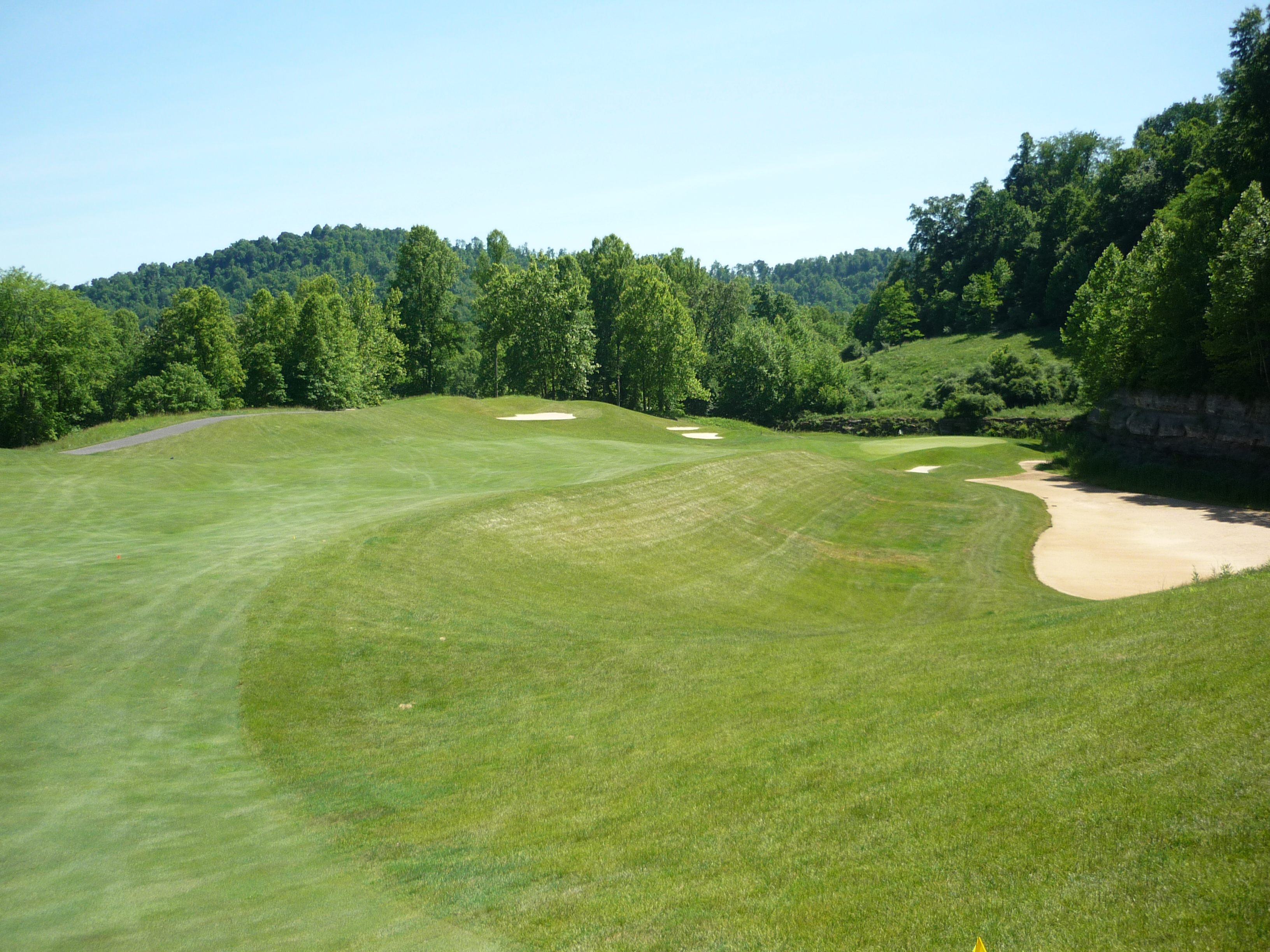
Here is a little more zoomed-in version.
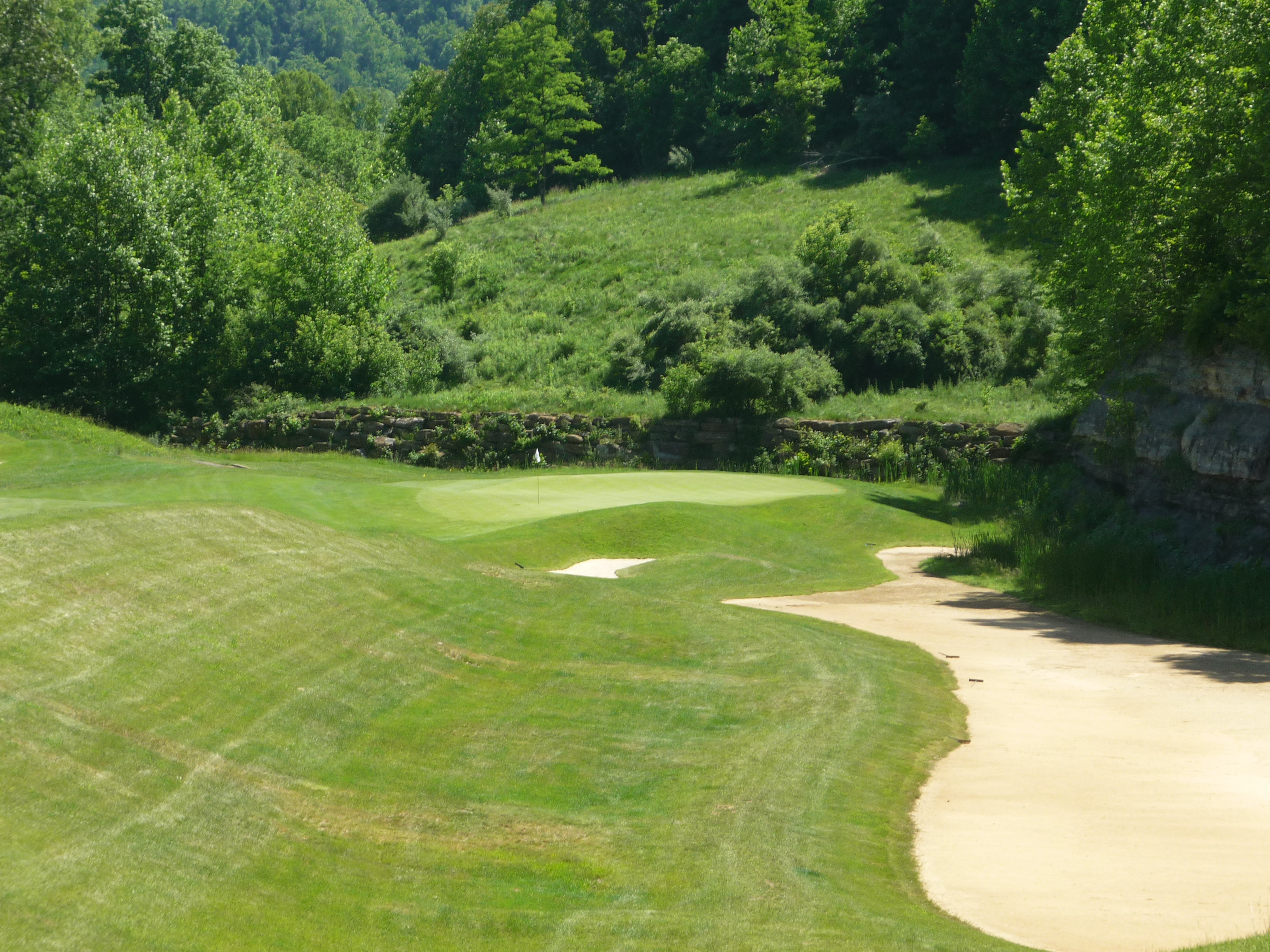
The green is very small and undulating. Any wedge shots will need to minimize spin and be precise on direction. The front of the green is below the putting surface quite a bit.
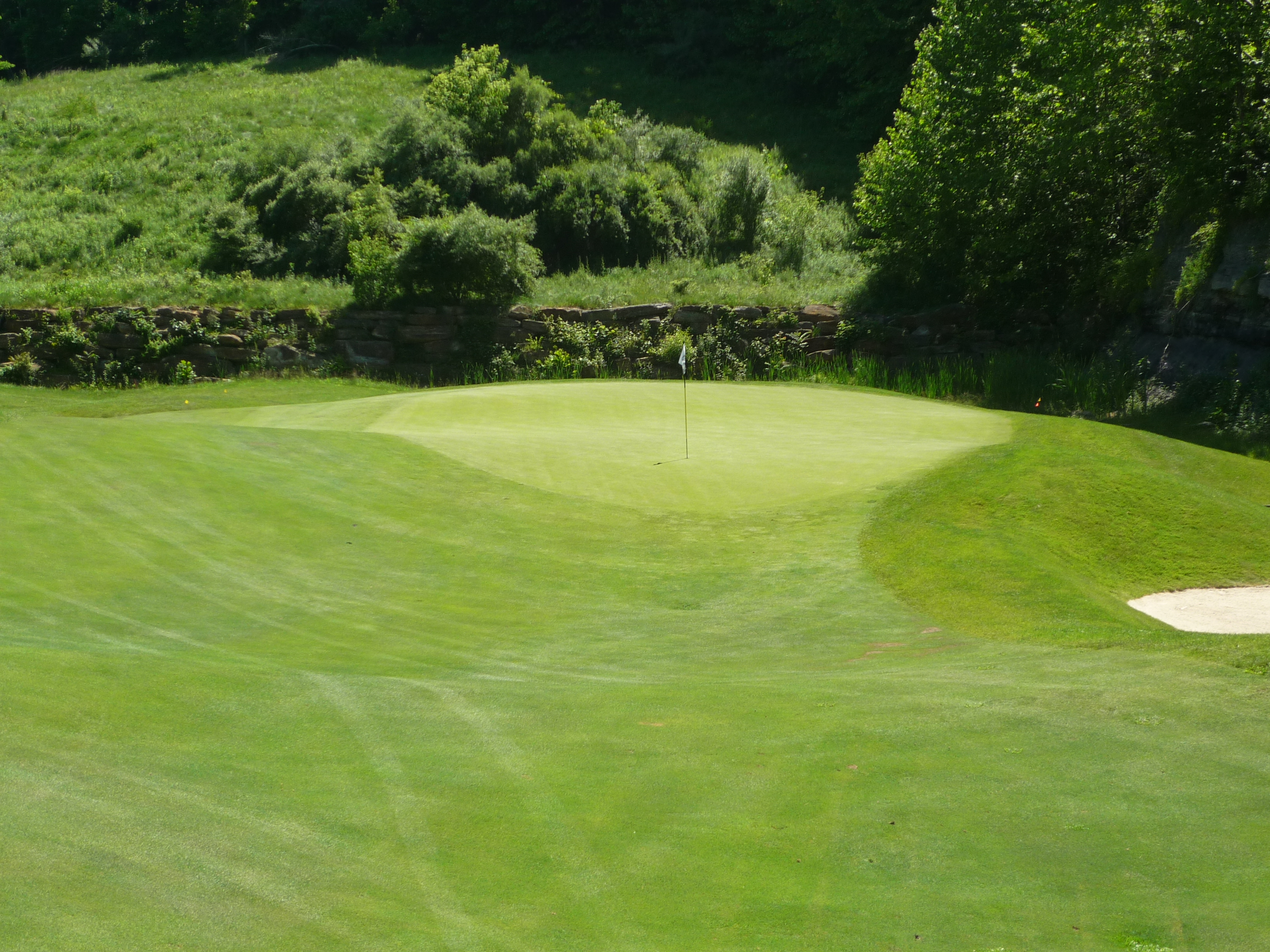
Hole 9 – 443 yards – Par 4
The front nine finishes with a brute of a hole. It does play from an elevated tee, which cuts off a little distance. The fairway is huge here so concentrate on what line you want to take.
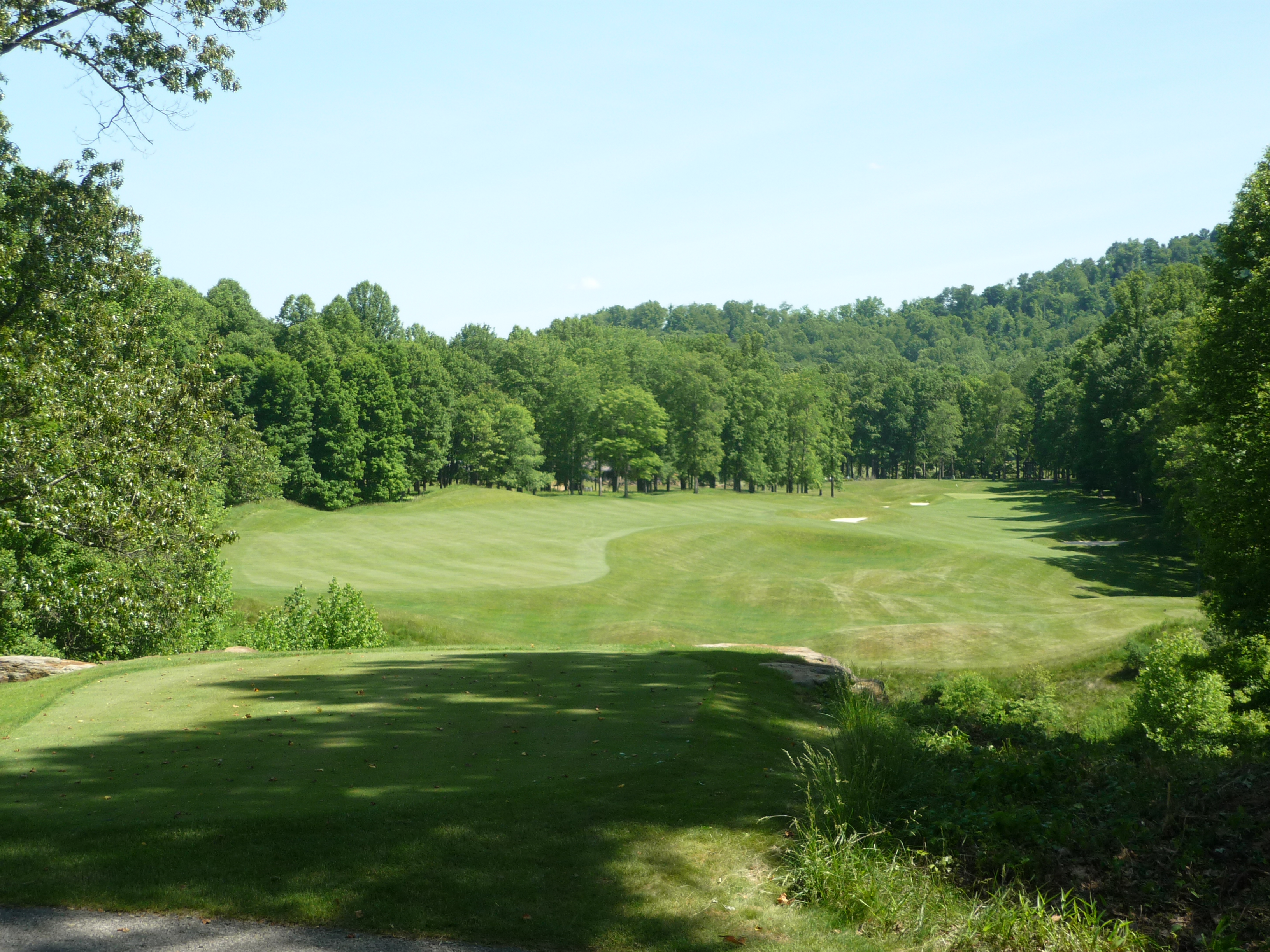
While the tee shot plays downhill, the approach shot takes some of that added distance back by going back up the hill. There are bunkers left of the green here.
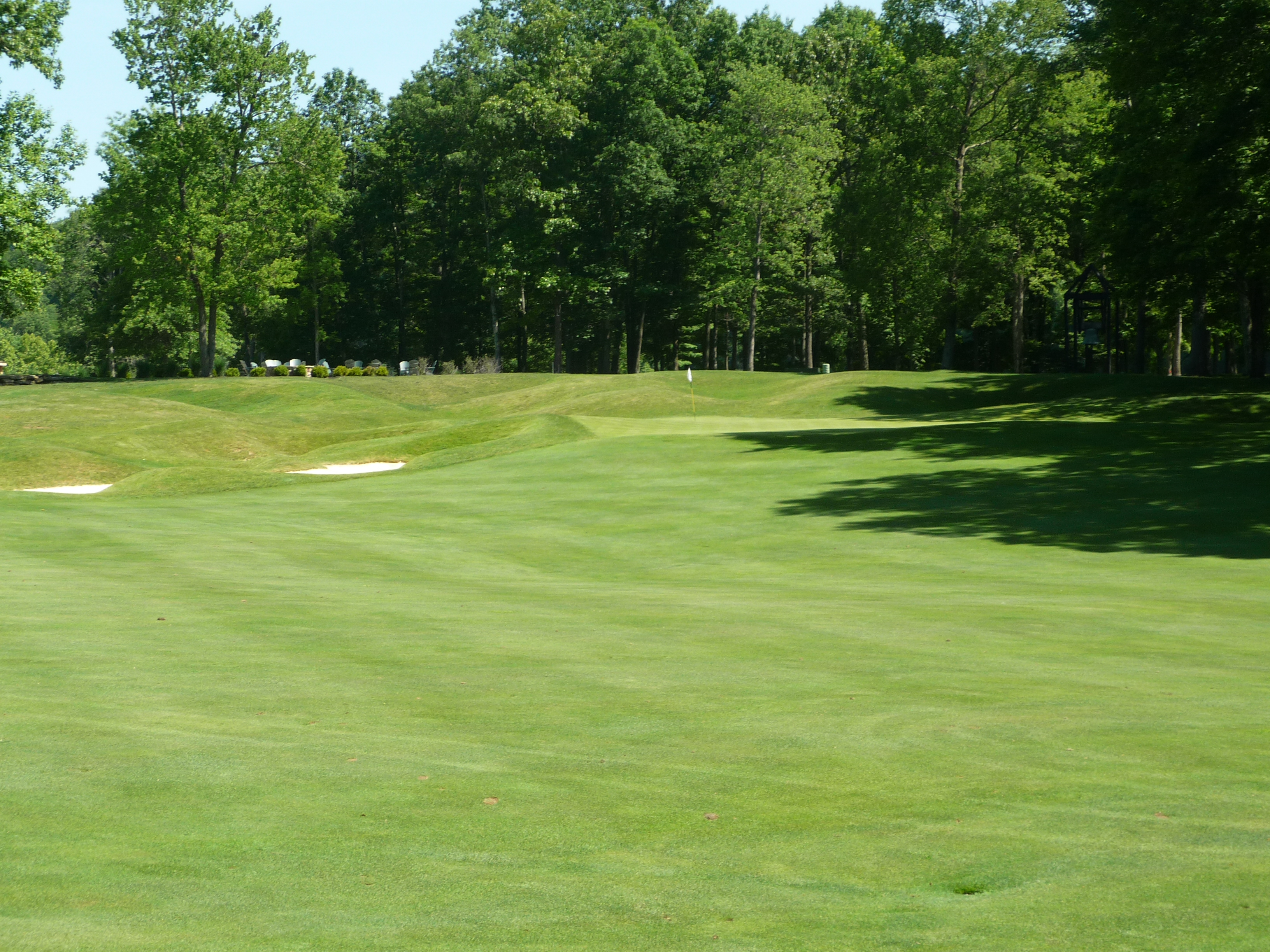
There is a big hump in the green you can see on the left of this photo. Proper placement of your second shot will leave a better chance for birdie.
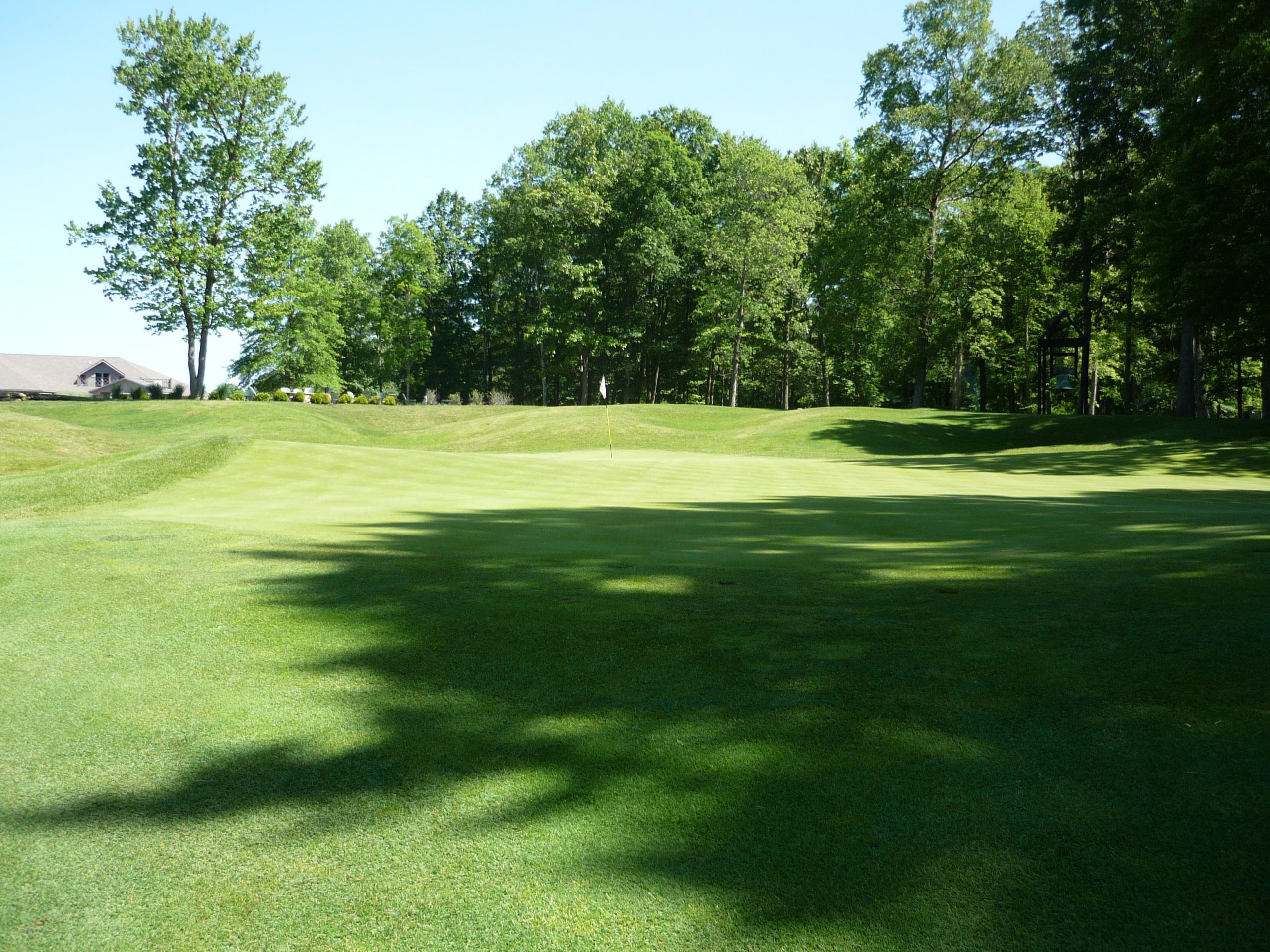
There is a cool bell located just off the green. There will be more of this later.
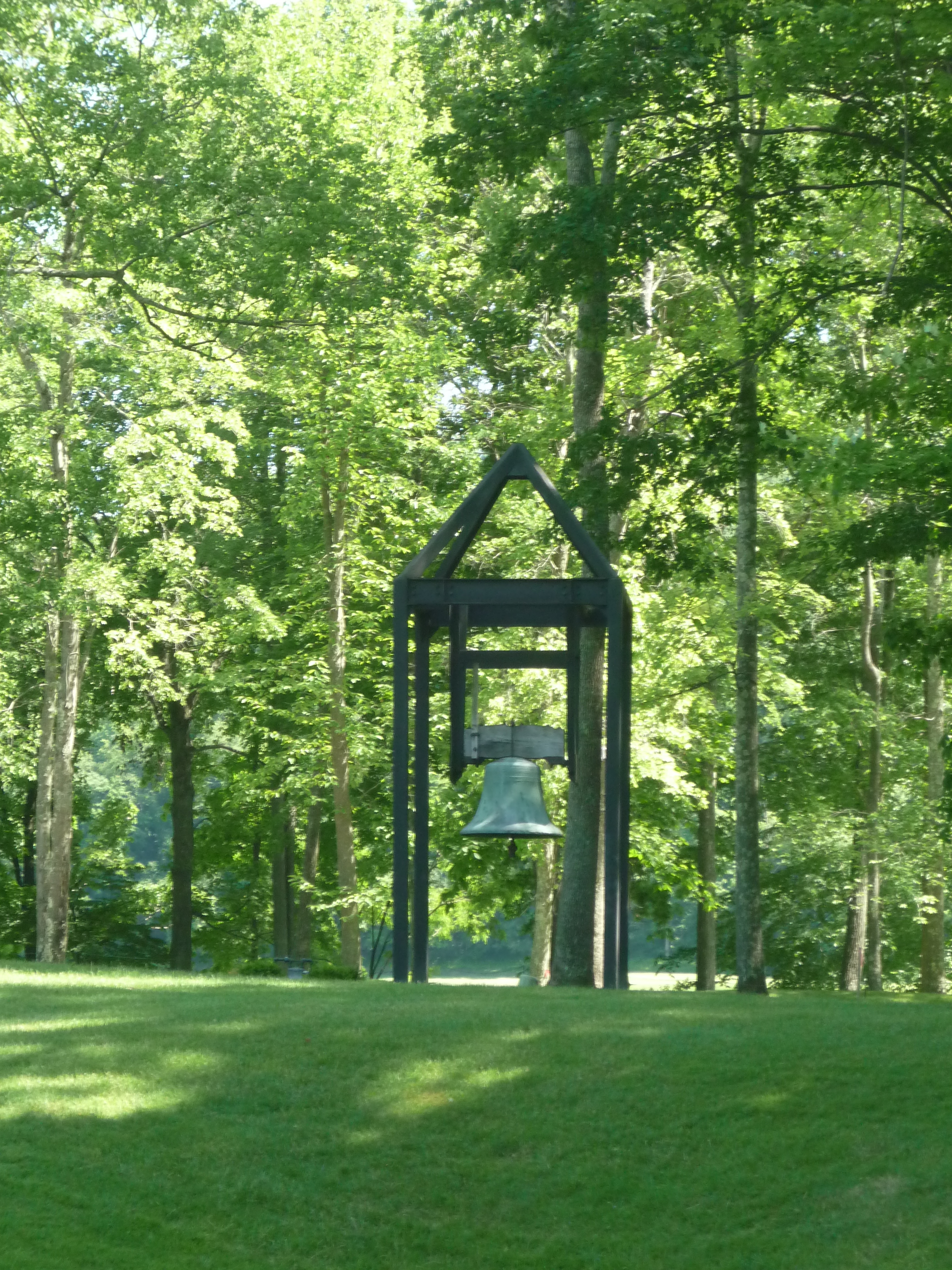
Hole 10 – 387 yards – Par 4
On to the back nine at Pete Dye Golf Club with a picture of the tee signs.
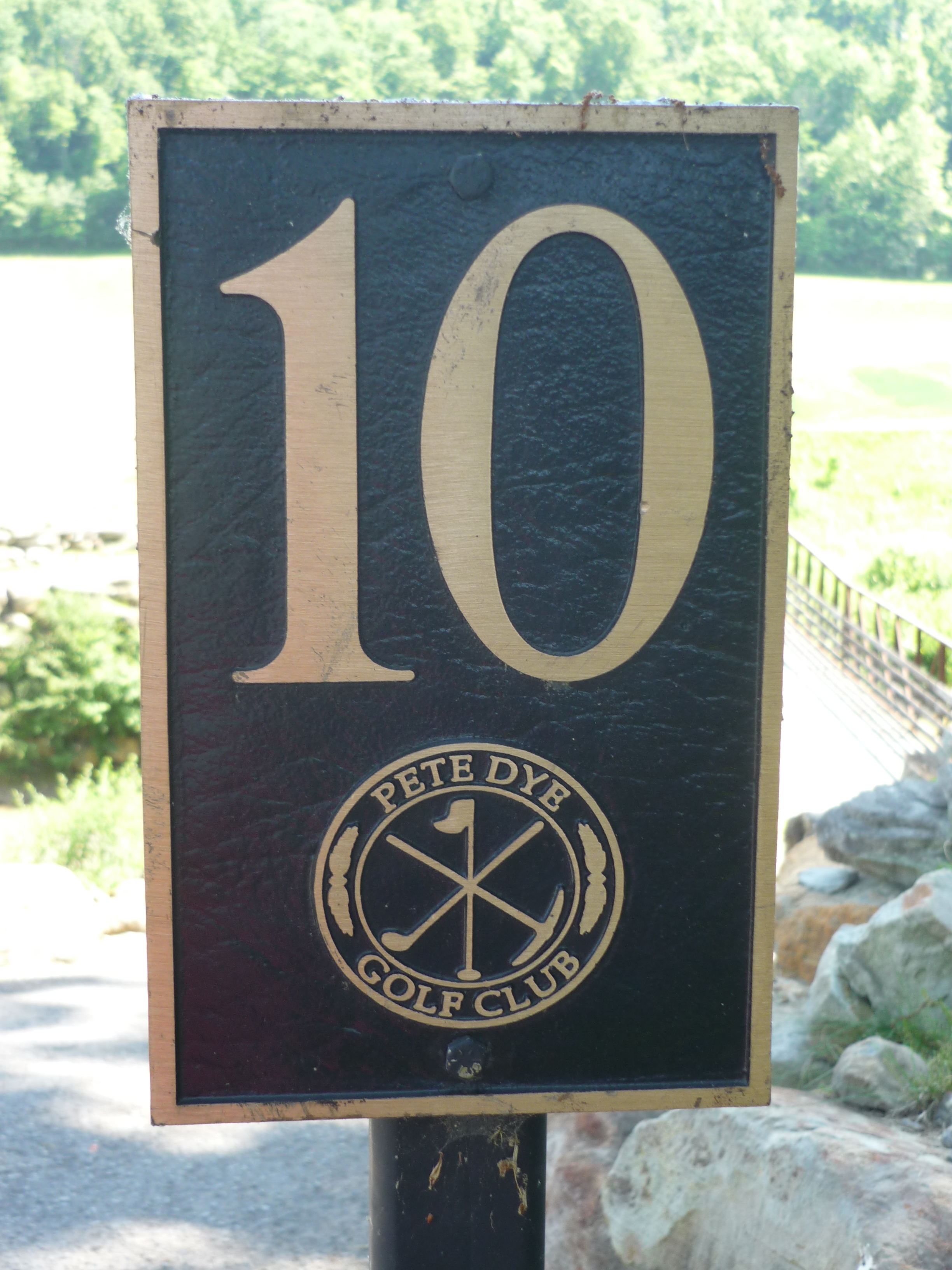
The tenth plays to a fairway that angles away and to the right from the tee.
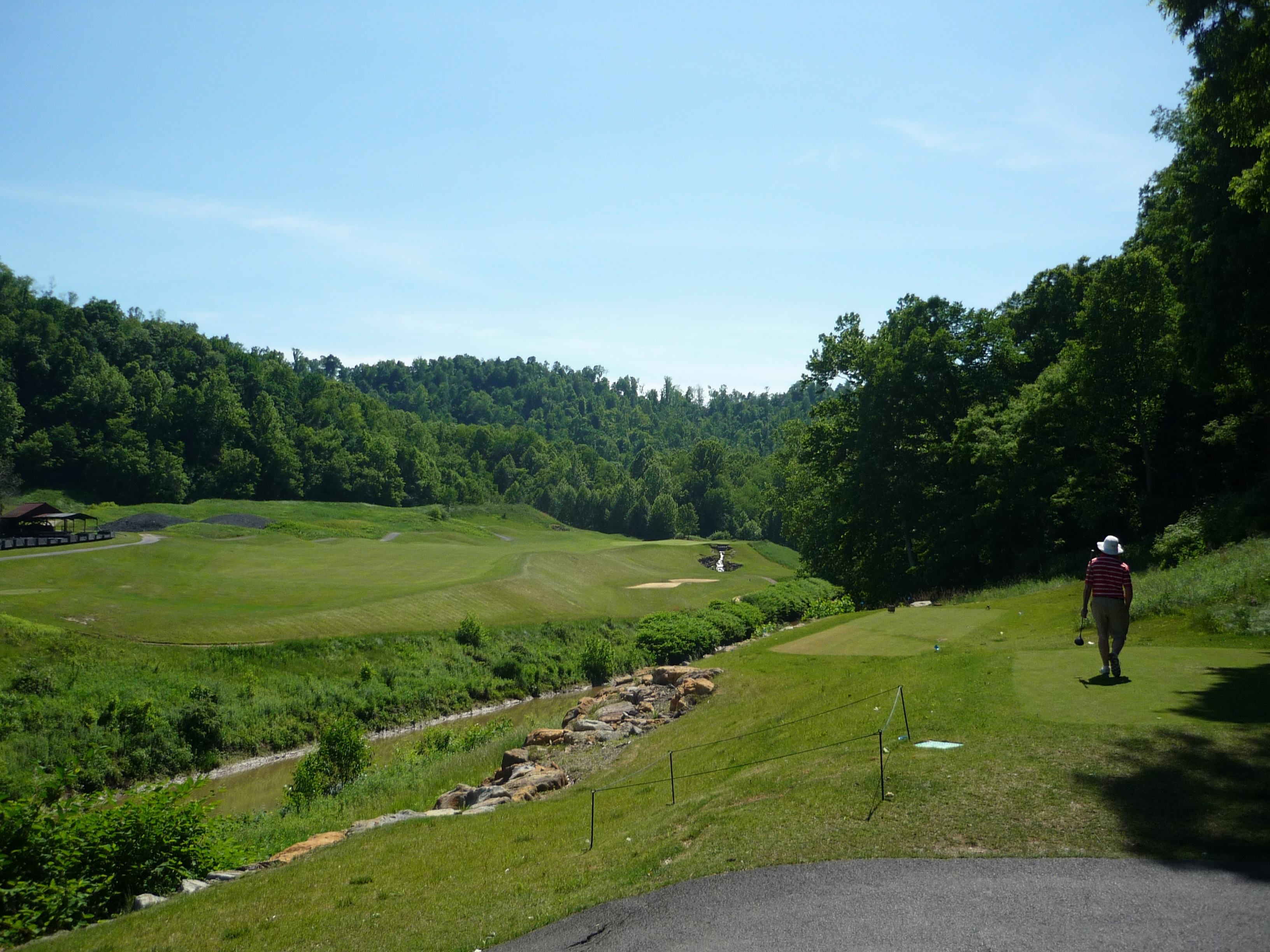
This sweet coal train sits to the left of the fairway.
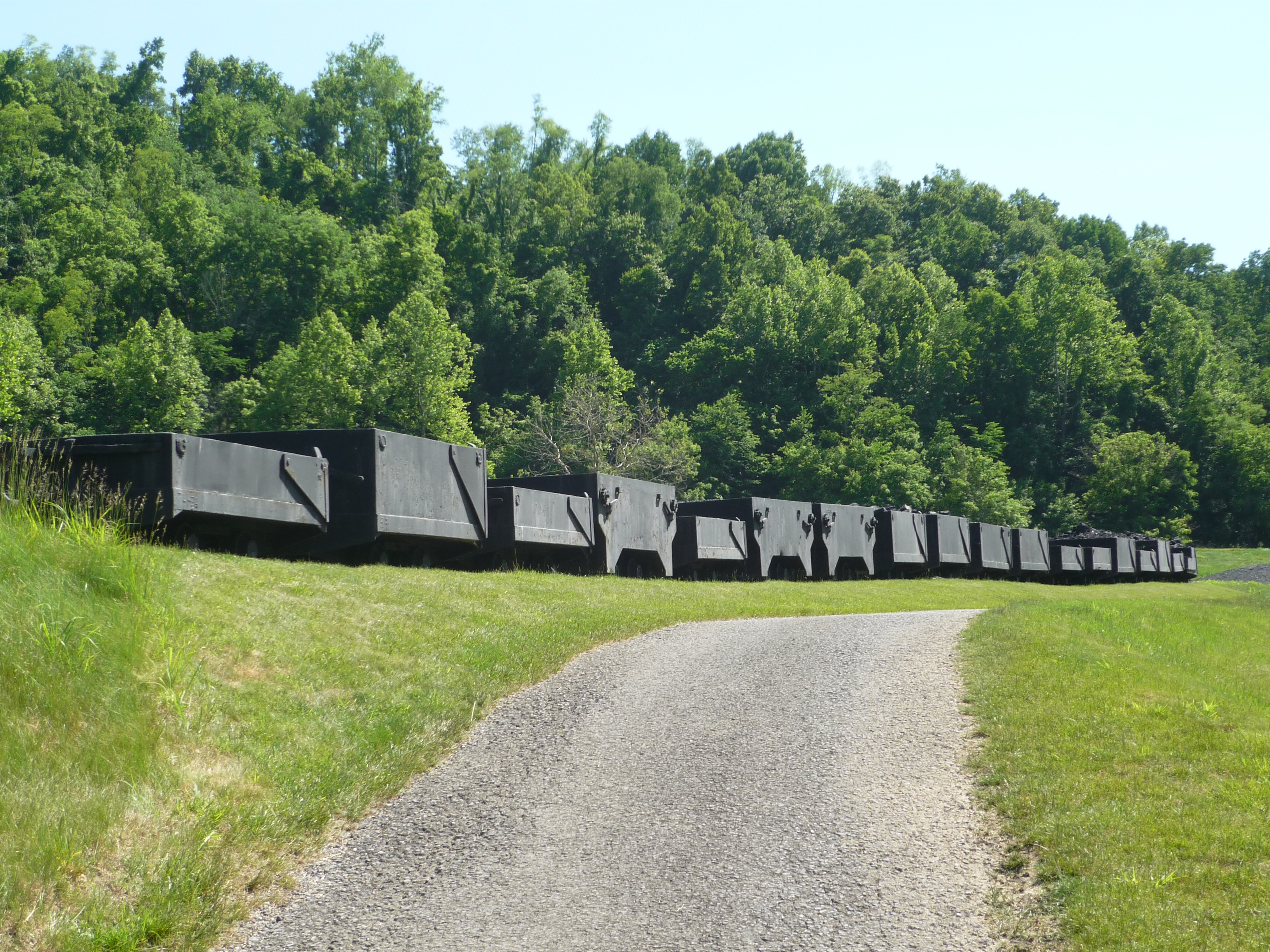
The green has a cool waterfall to the right of it. It is all-natural and they built around it
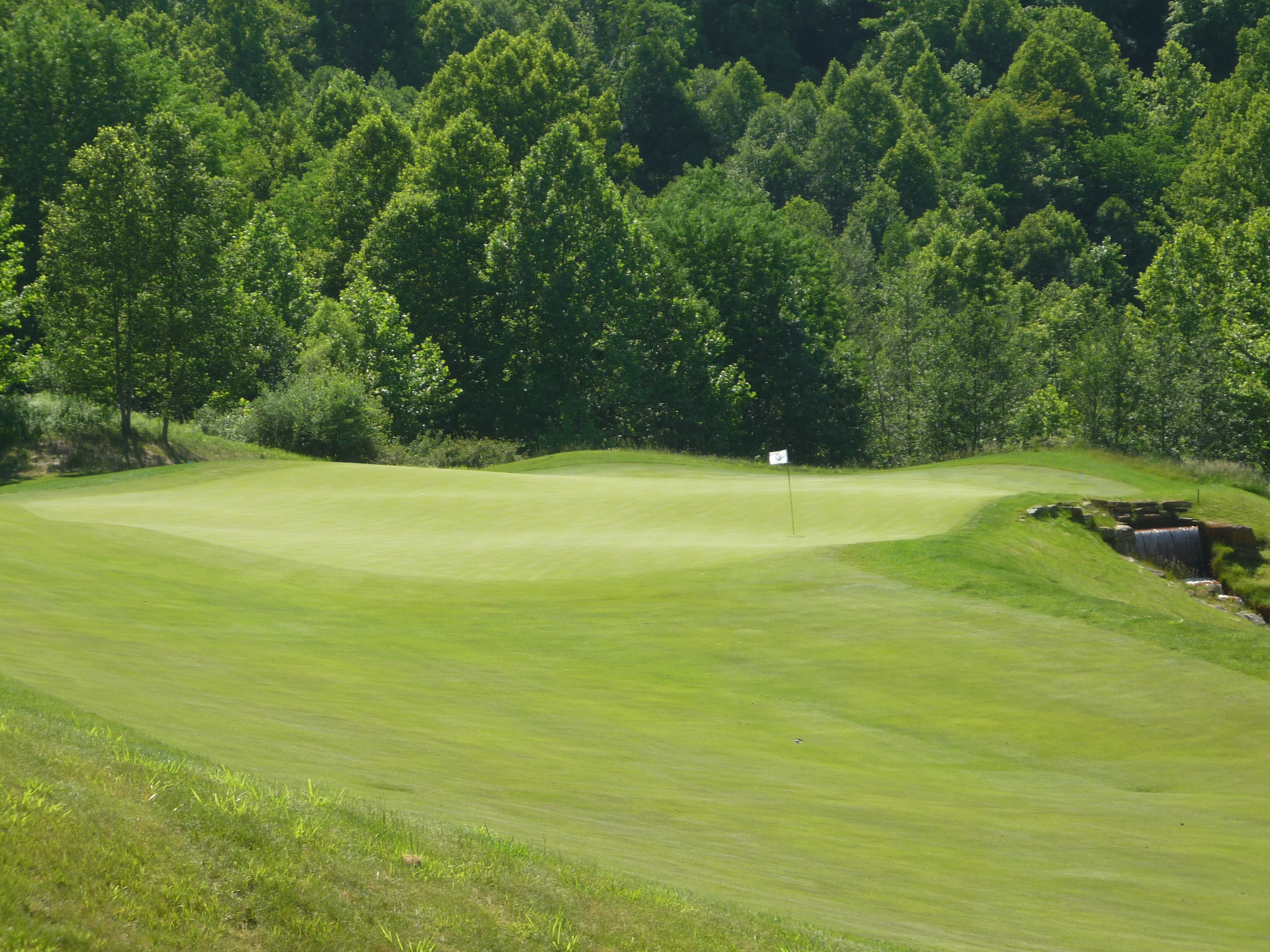
The green has a lot of slope from back to front.
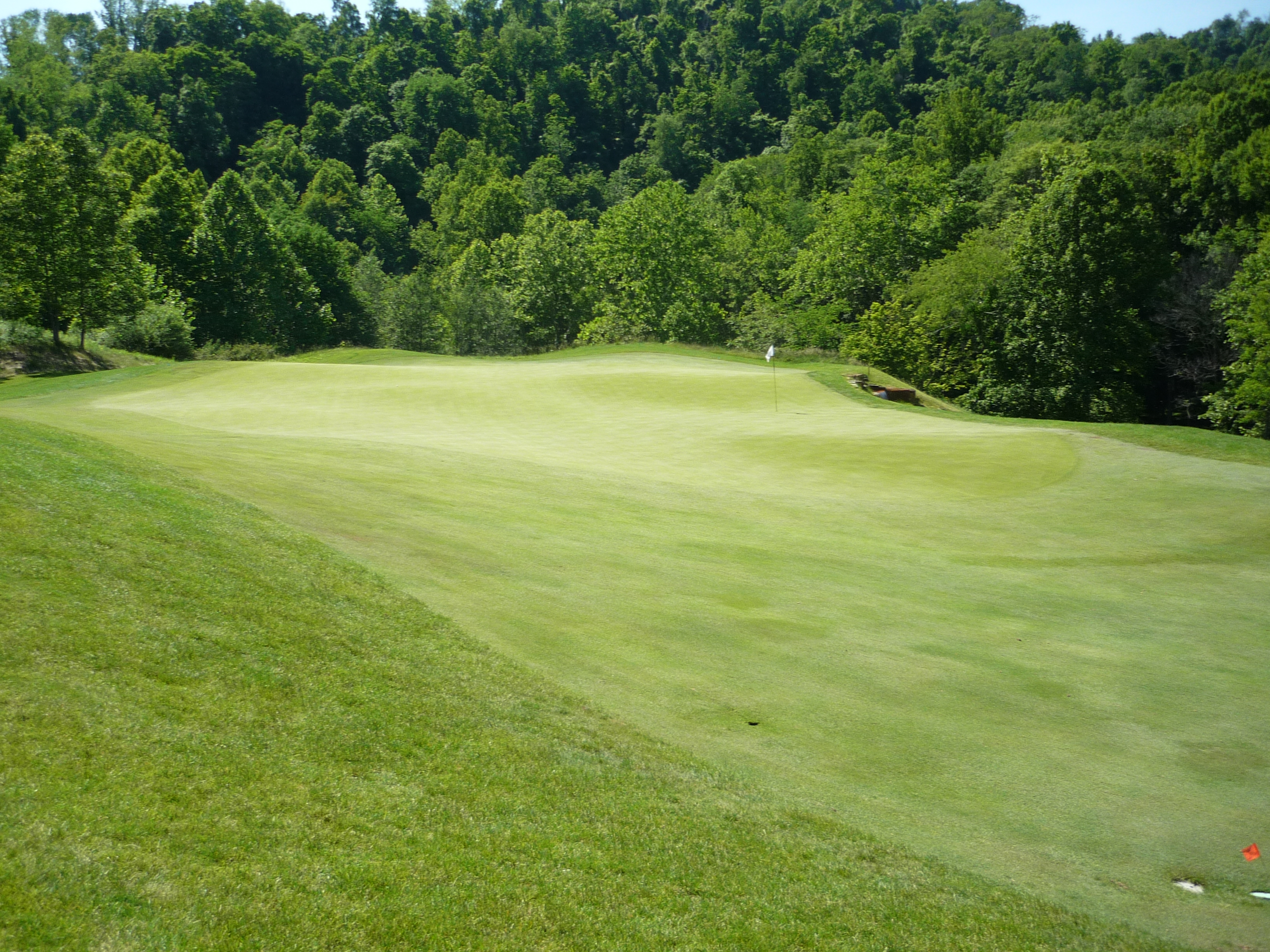
Hole 11 – 531 yards – Par 5
This is most likely a three-shot hole. Just pipe one up the fairway here.
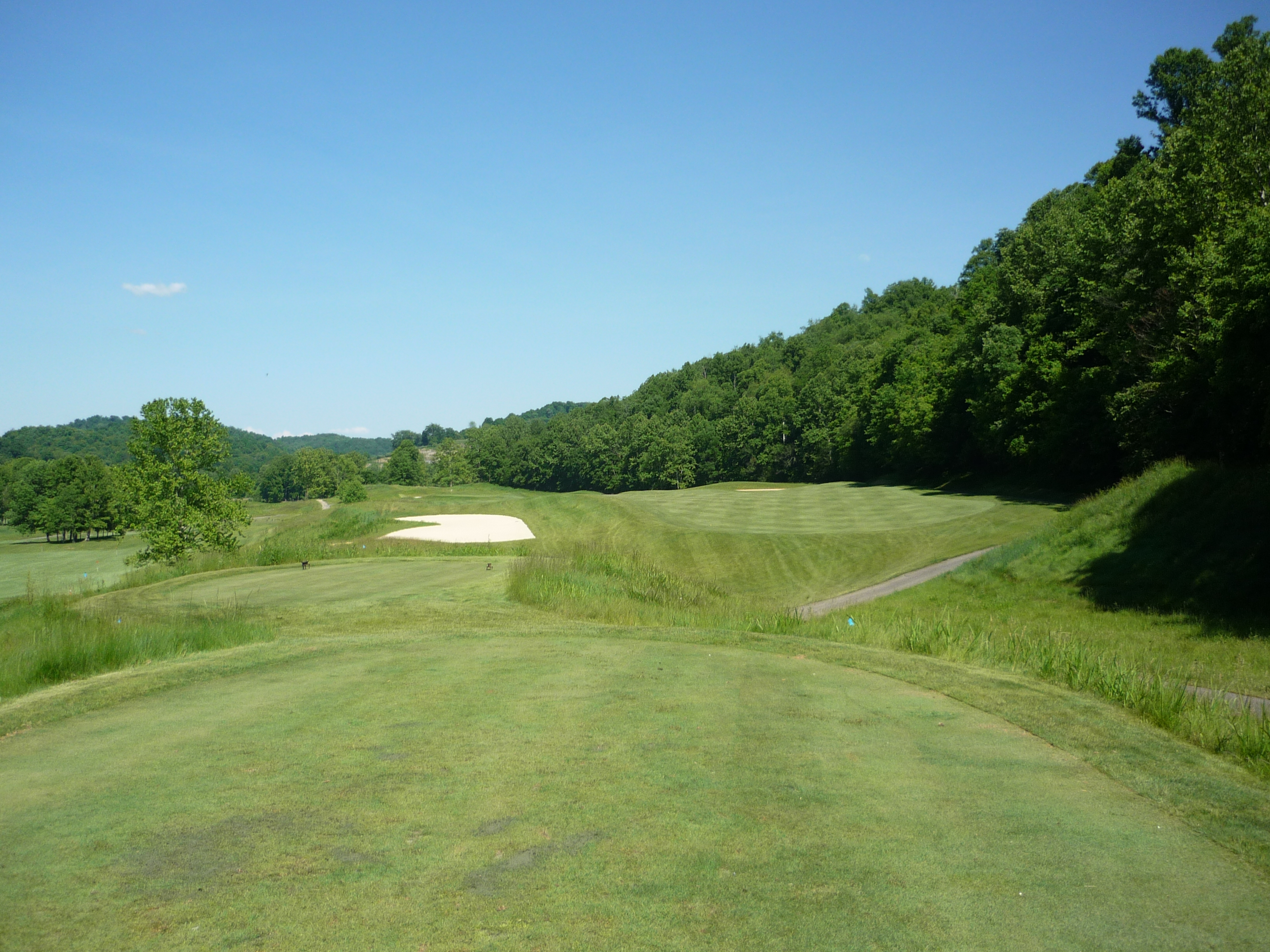
The second shot must avoid bunkers if you go for it or lay up.
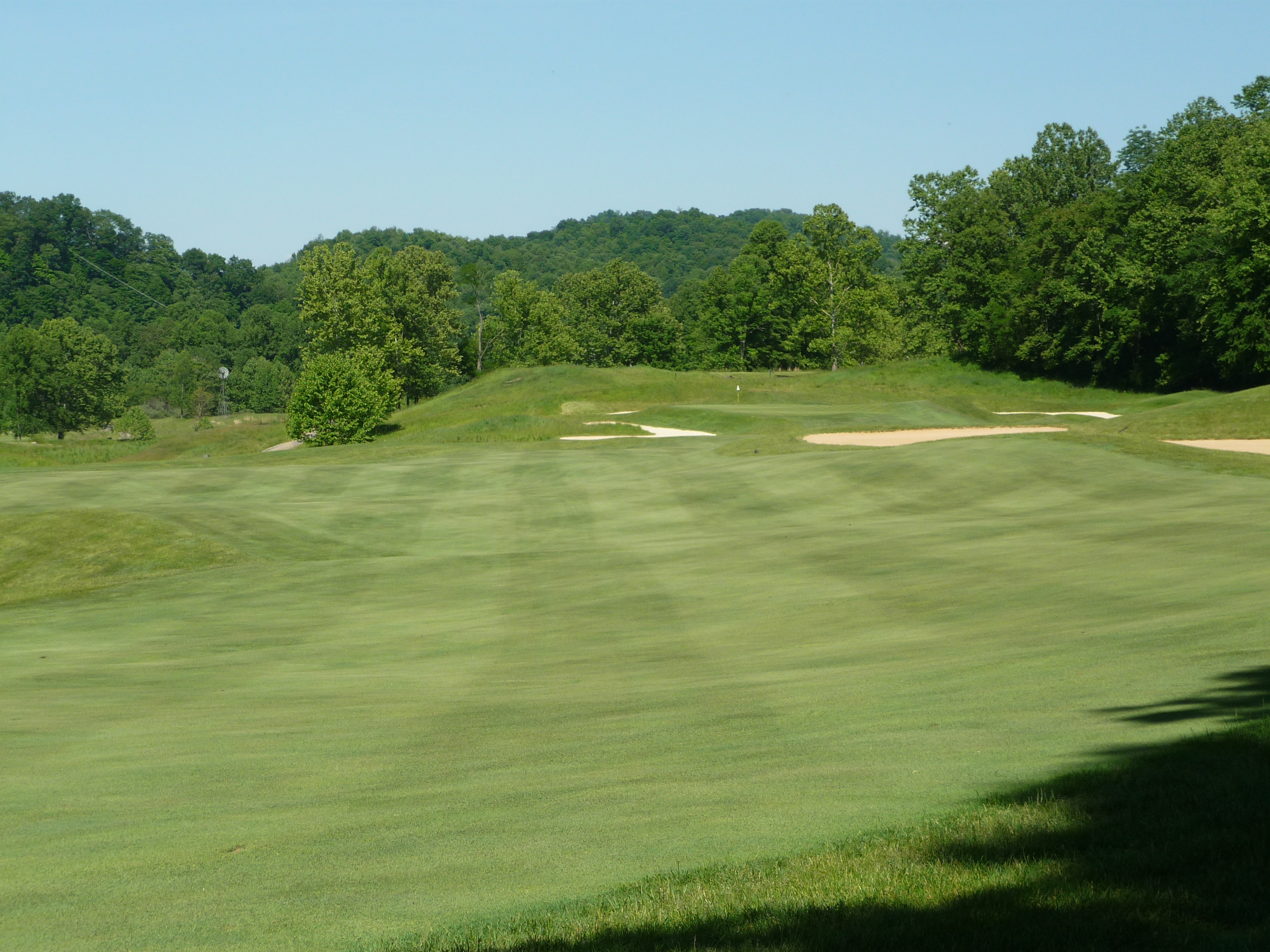
The third shot is seen here. The green is raised and guarded by two bunkers on the left side.

You can see the slope of the green on the right side. It’s almost two full tiers.
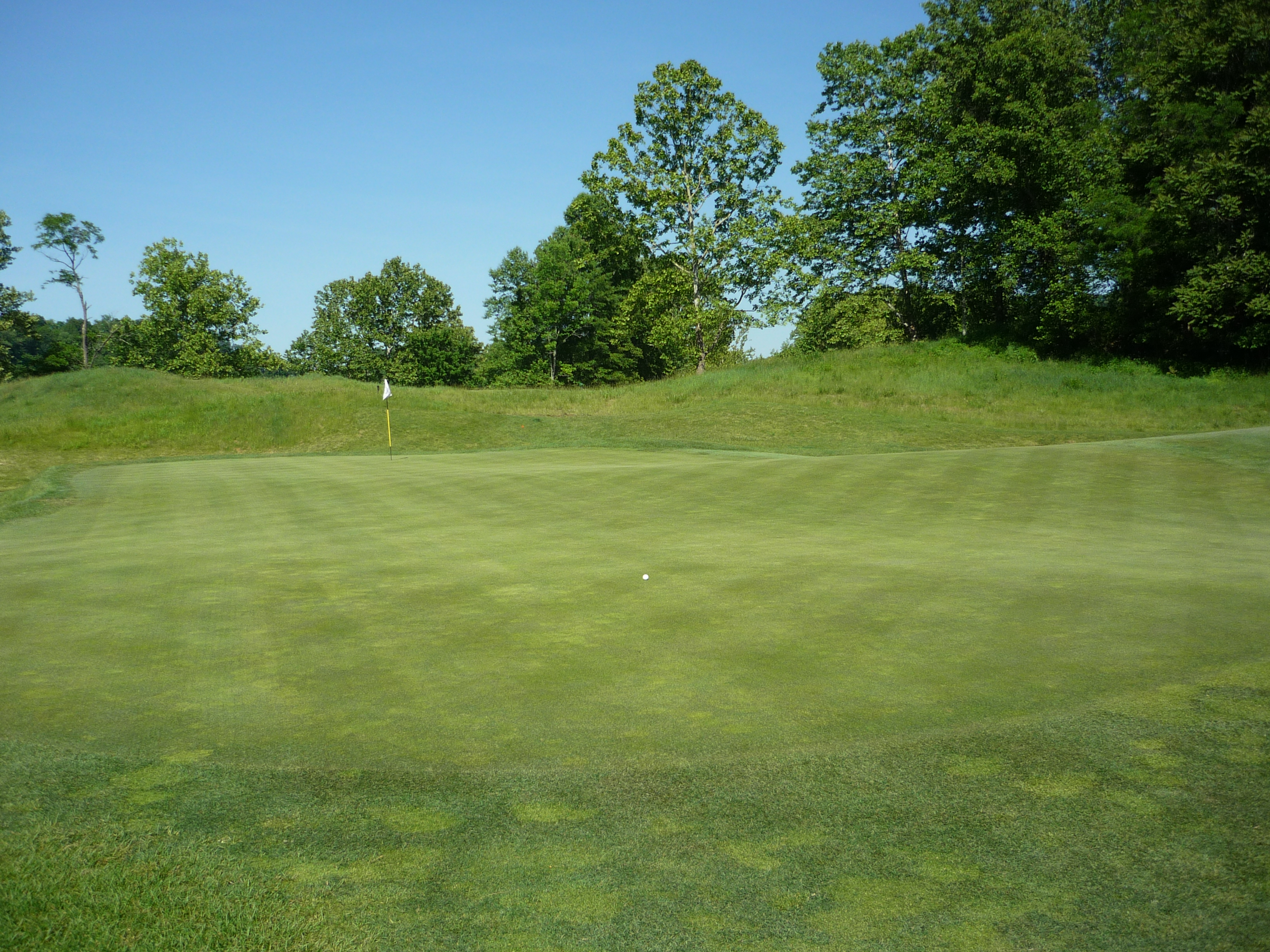
Hole 12 – 315 yards – Par 4
This course has some great short par fours.
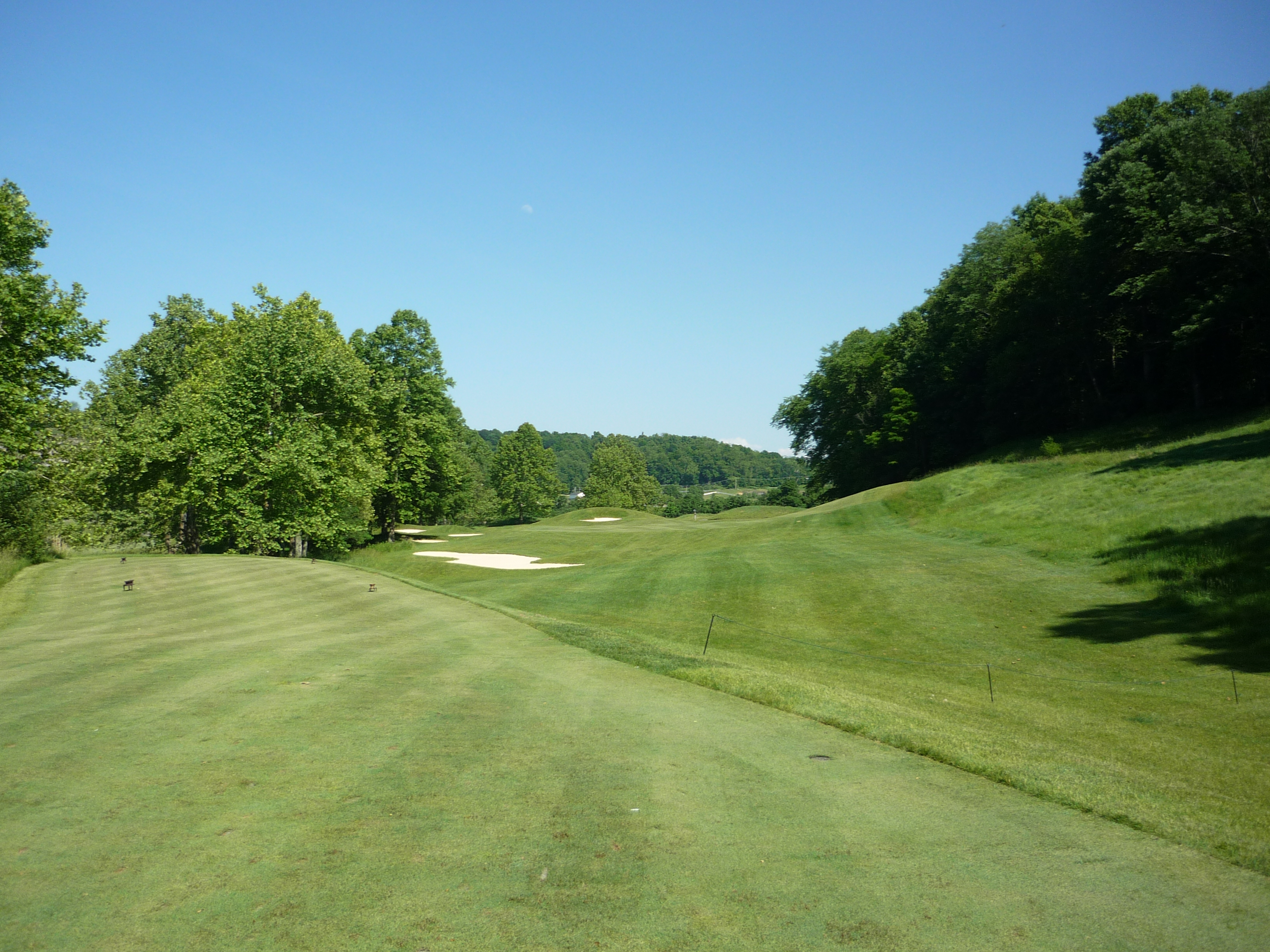
The second shot plays through some grassy mounds. Hopefully you have a short iron in your hands.
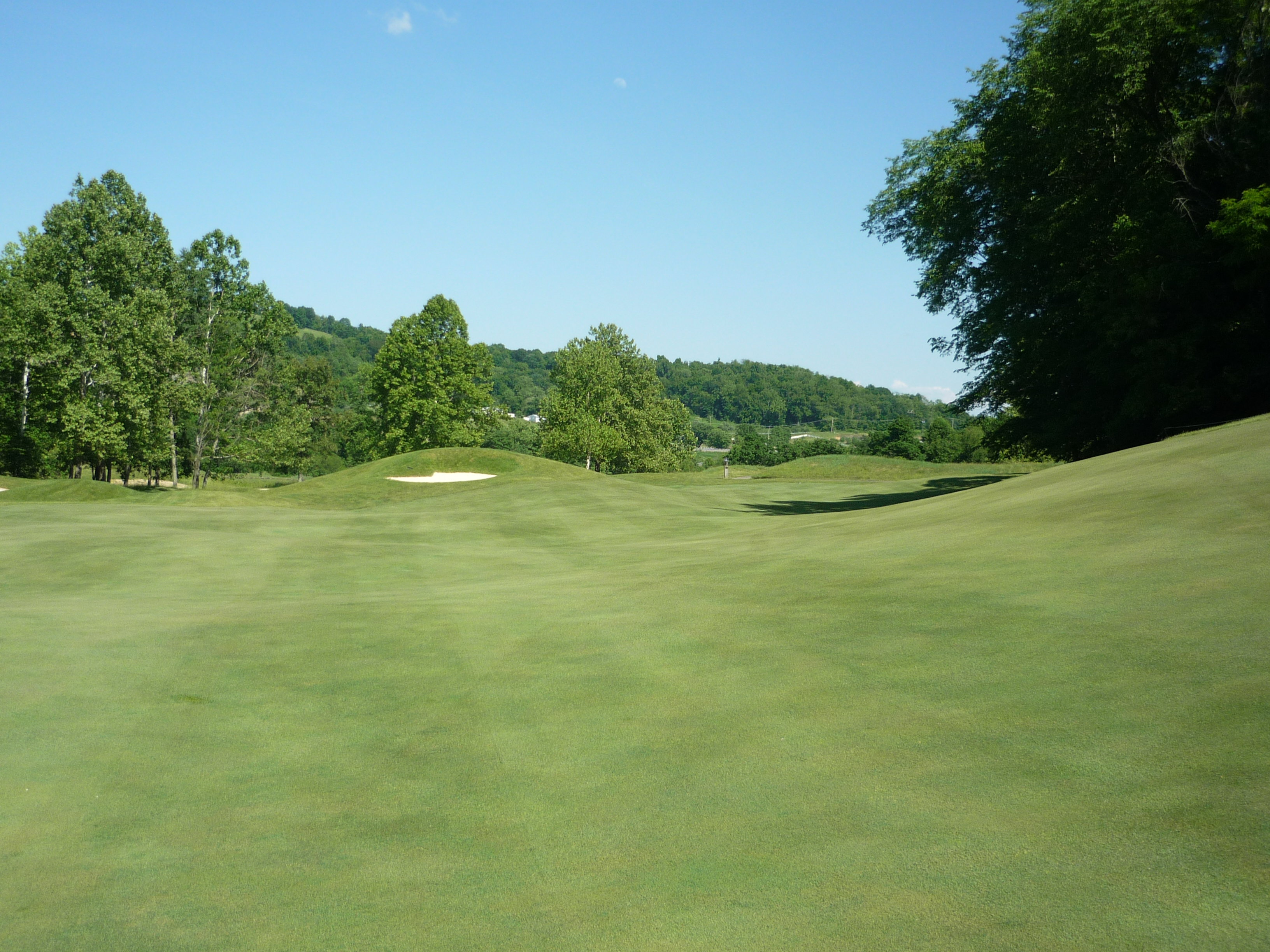
Here is a little zoomed in shot of the approach.
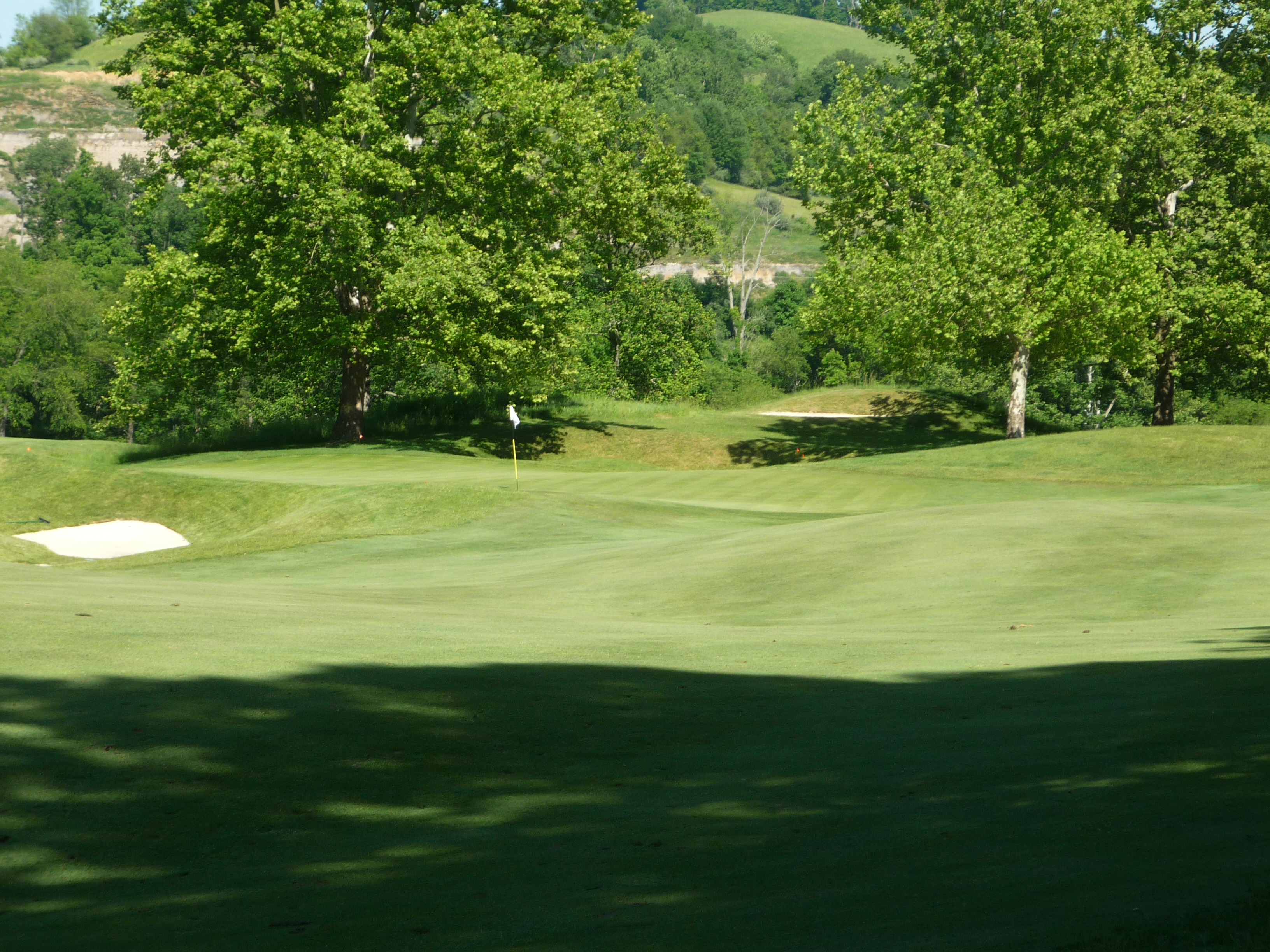
The green is very undulating as you can see here on the right side of the green is a bowl shape. The whole green slants left to right.
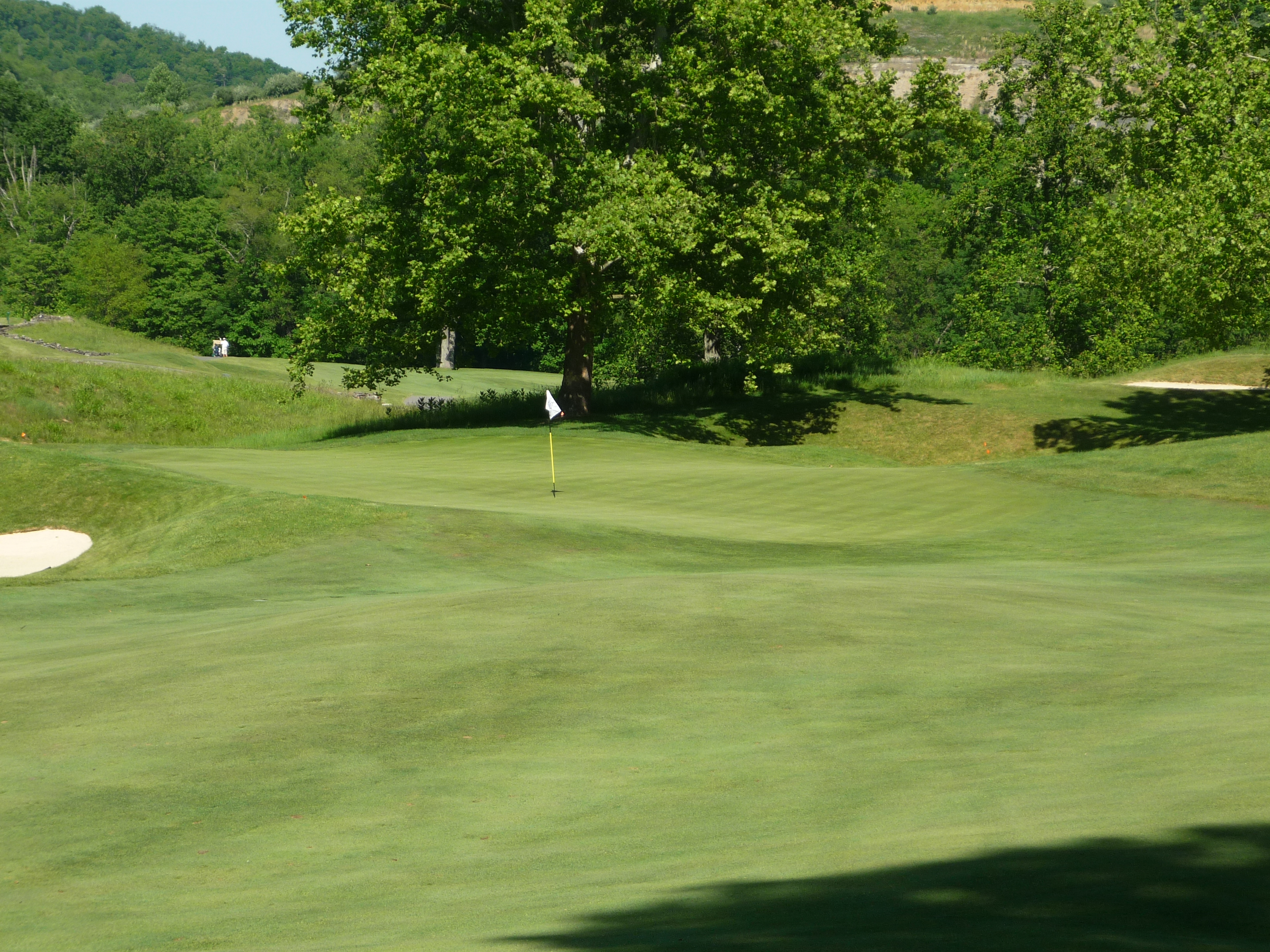
I told you there would be another bell. This one has a heartfelt message from the architect to his dad. This warmed my soul in the middle of the round.
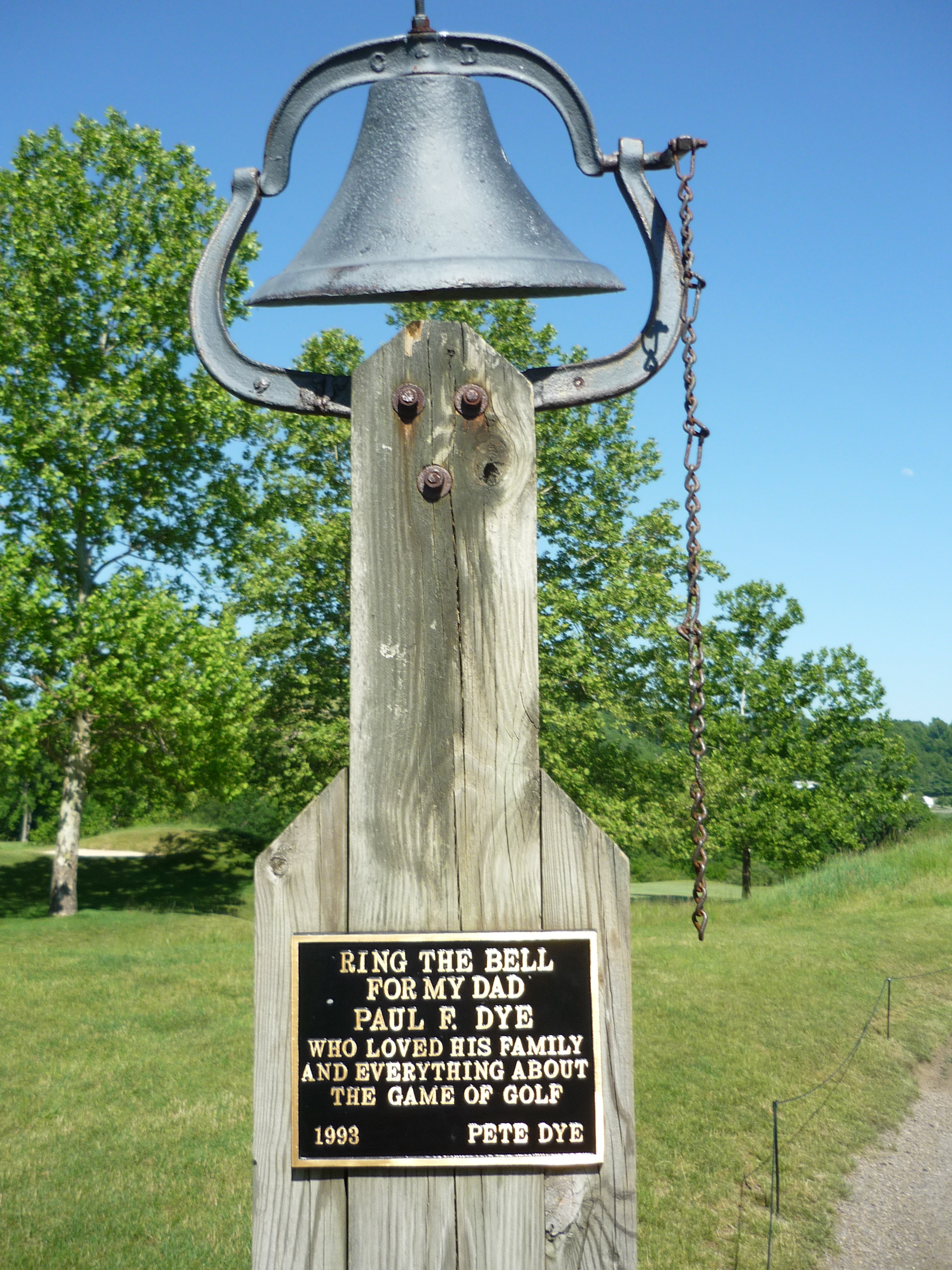
Hole 13 – 162 yards – Par 3
This is a mid-length par three that plays over a bit of a depression filled with some large bunkers. The green angles away and to the left of the tee.
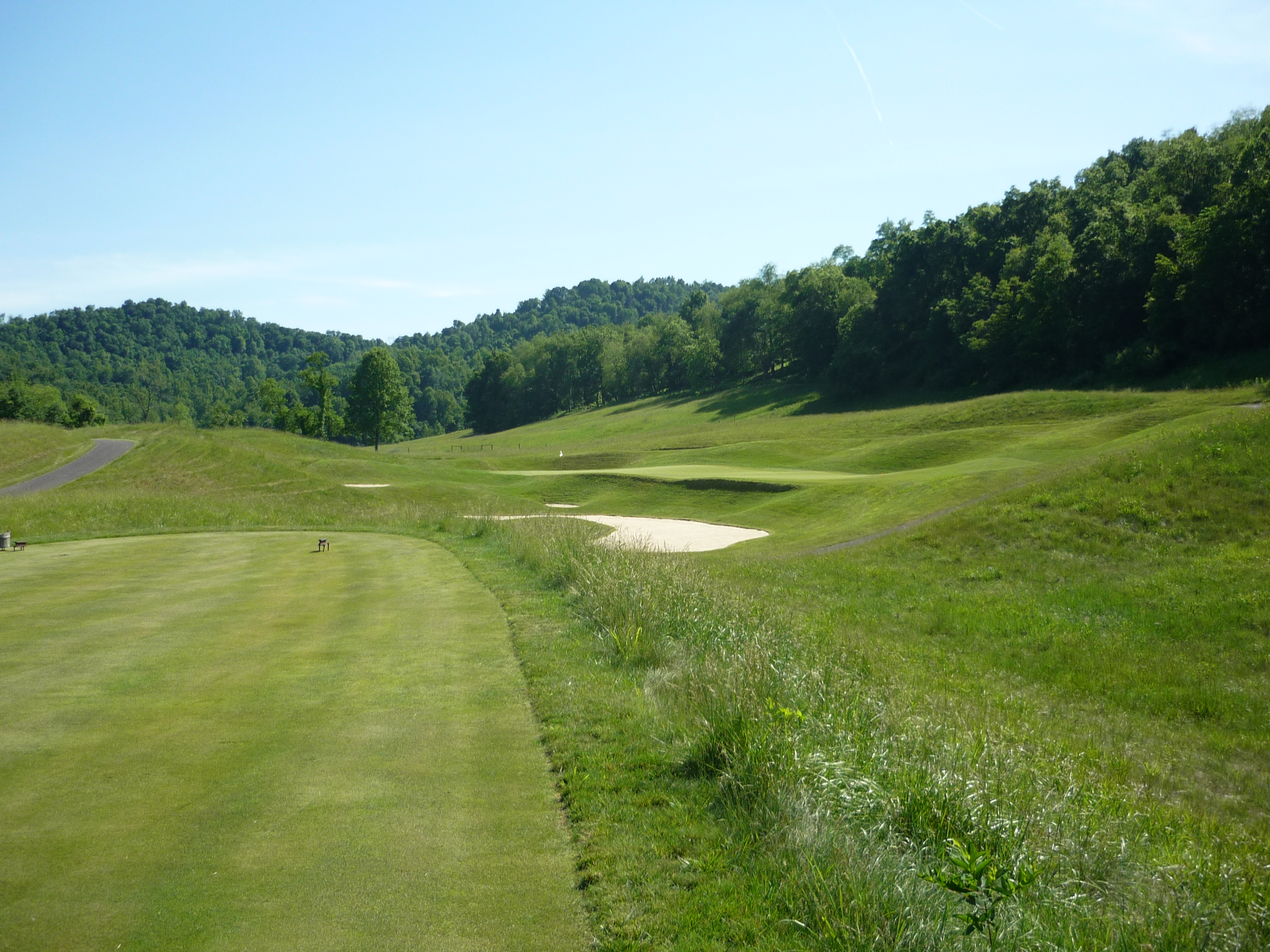
The green’s slope is evident in the photo below. The pin position needs to be noted since the putting surface is quite deep.
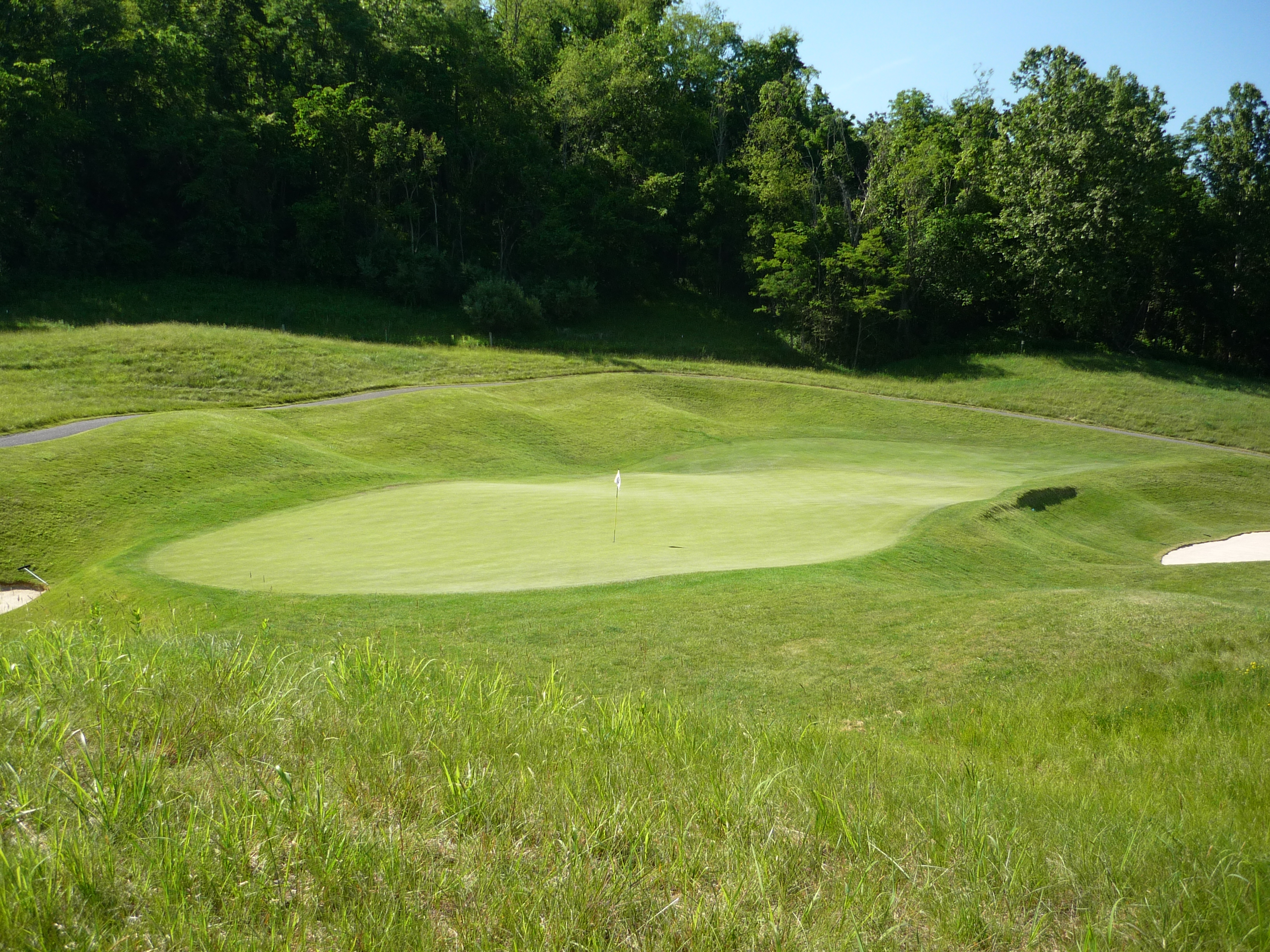
Here is a closer look from behind the green which highlights the undulation.
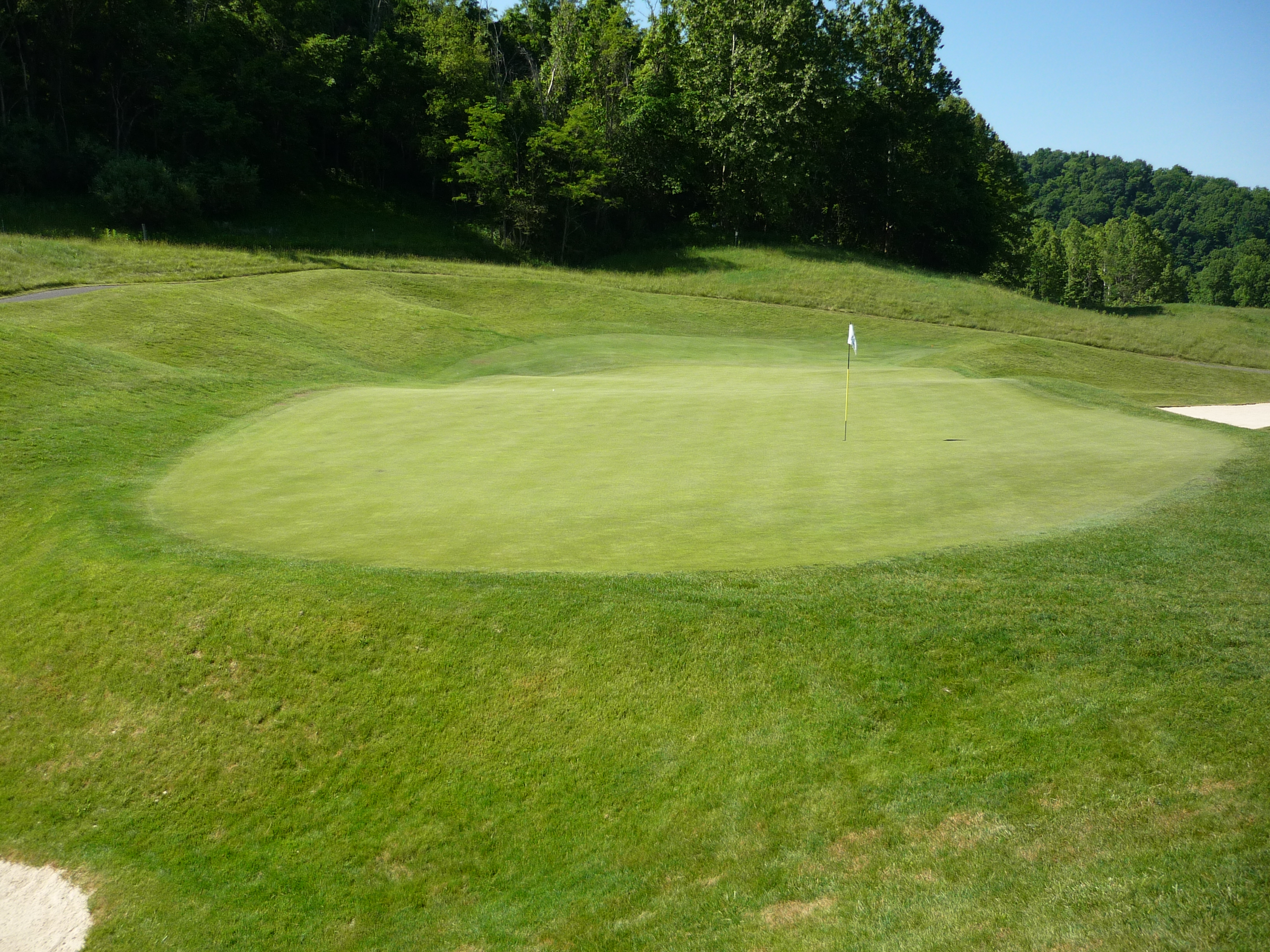
Hole 14 – 434 yards – Par 4
After two shorter holes, we have a brute of a par four. Not too much thought here, just pound on the driver.
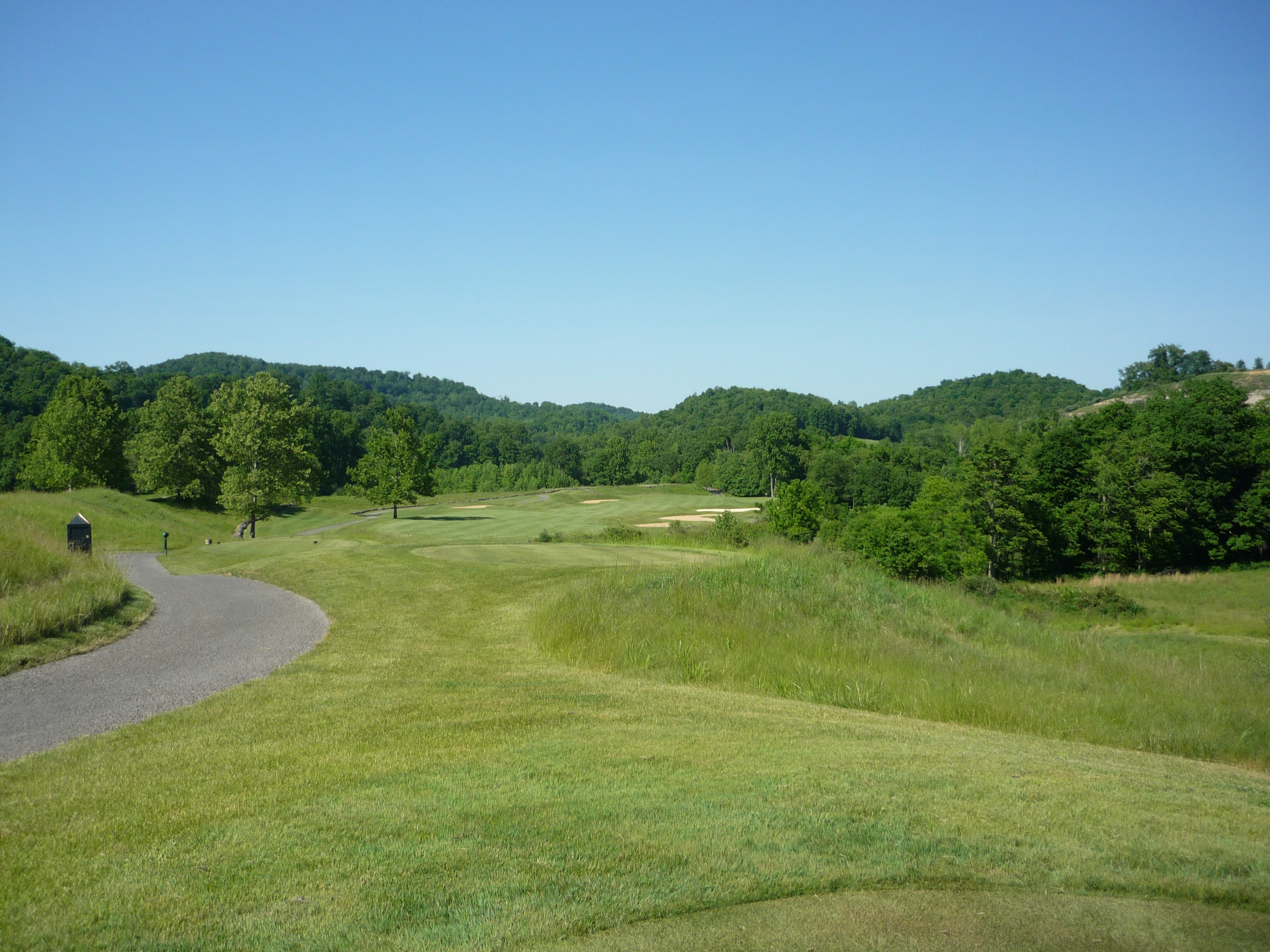
The second shot plays to an open green. The bunkers are not as close to the green as they appear.
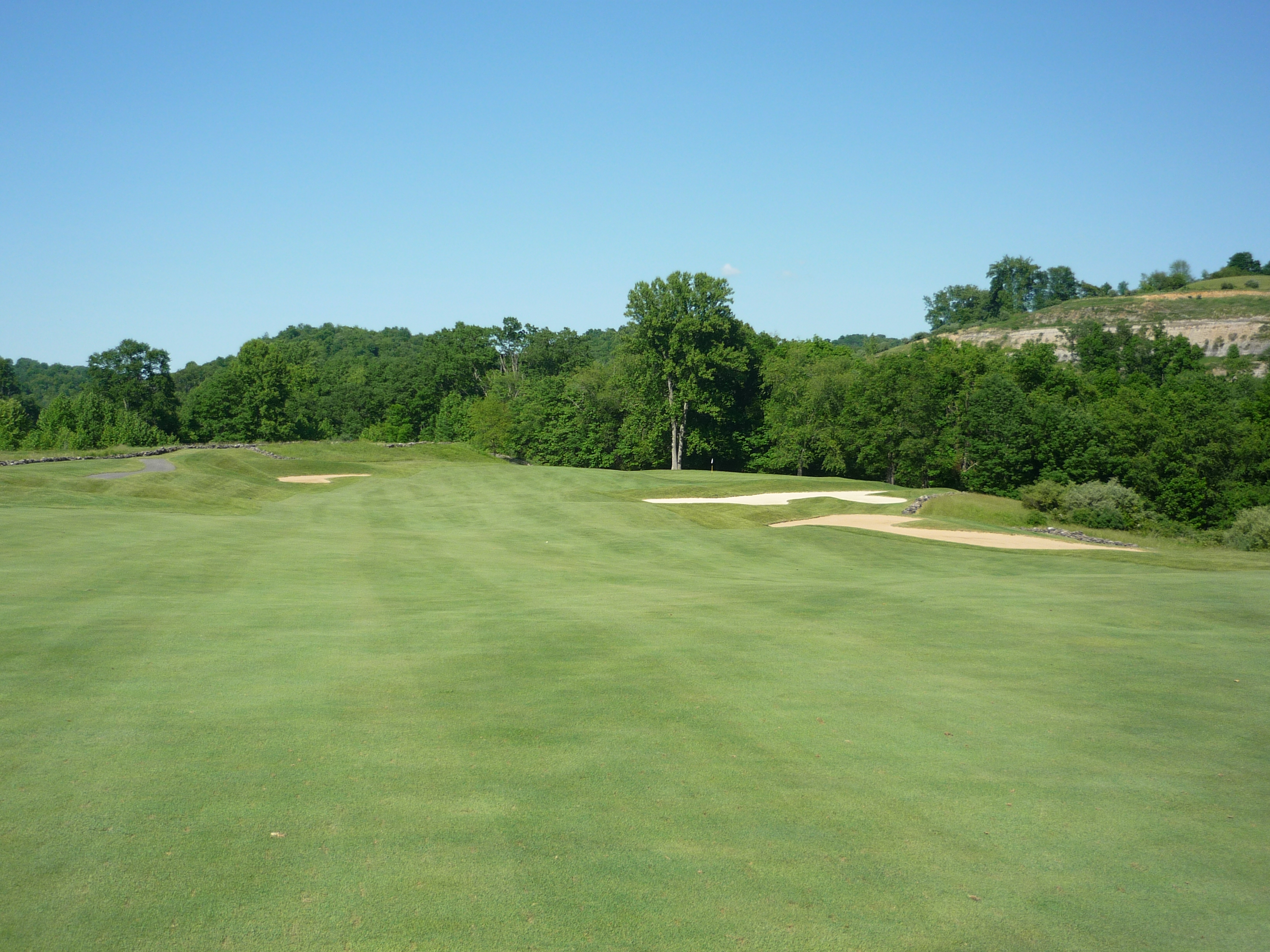
This is one of the flatter putting surfaces on the course. There is still a little punchbowl area in the front of the green.
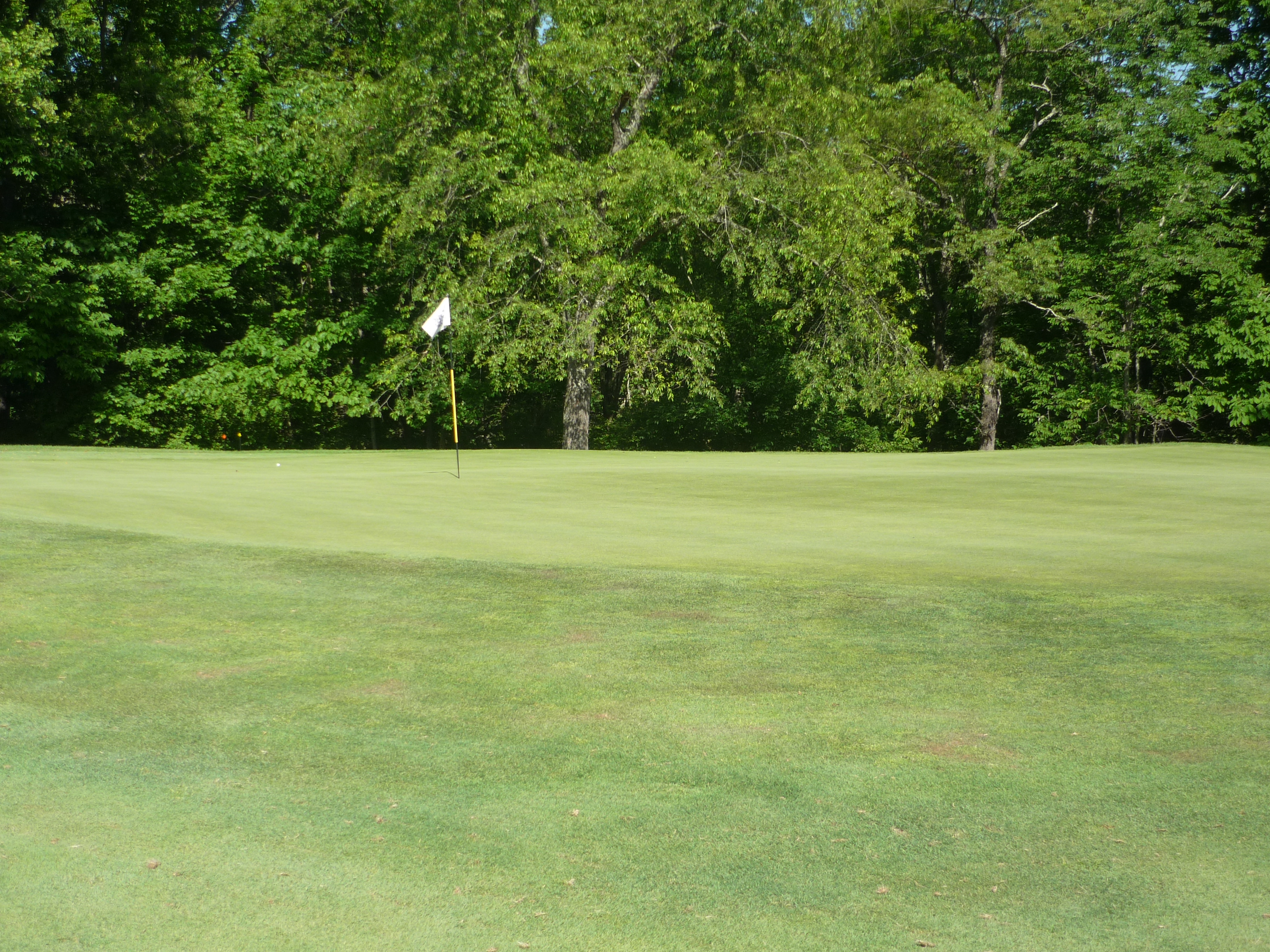
Hole 15 – 494 yards – Par 5
This is a great hole. It’s reachable in two, but the drive can be intimidating if you miss to the right. The best play is a fade up the middle, but make sure not to overdo it!
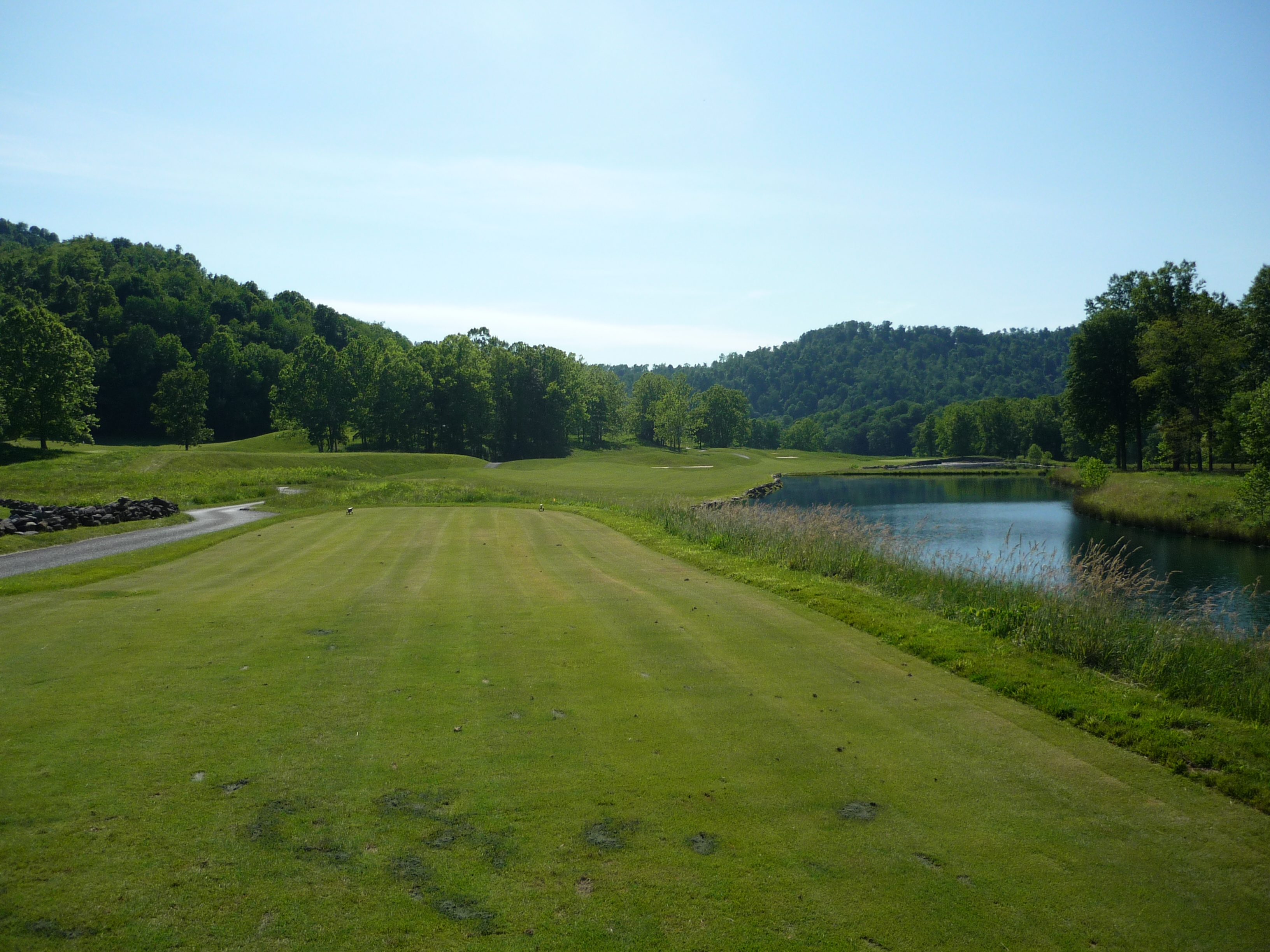
The second shot gives you a decision to make. If you decide to go for it, you must think about the hazard that abuts the green and anything headed to the right must carry all the way to the surface.
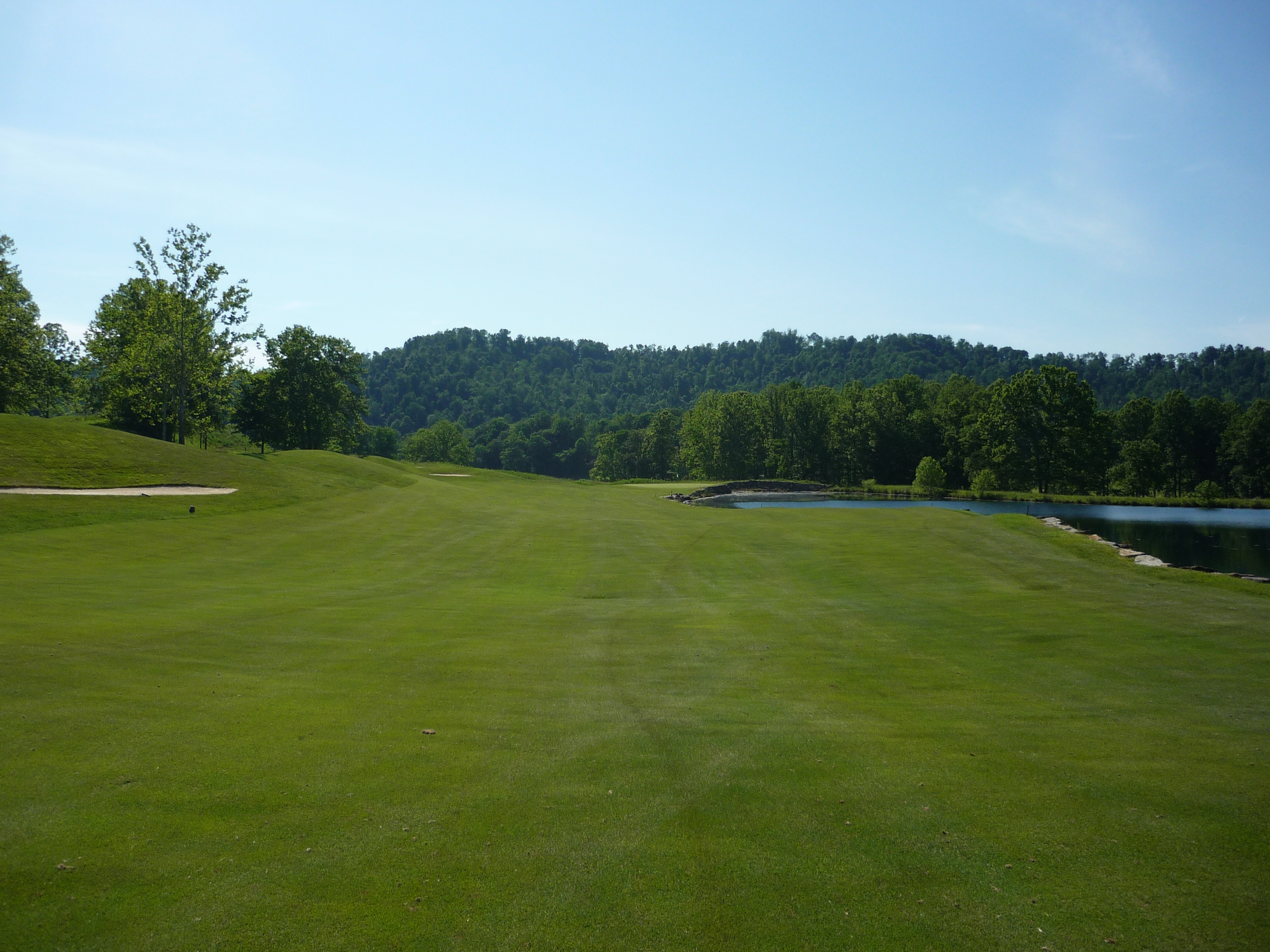
The third shot is much easier.
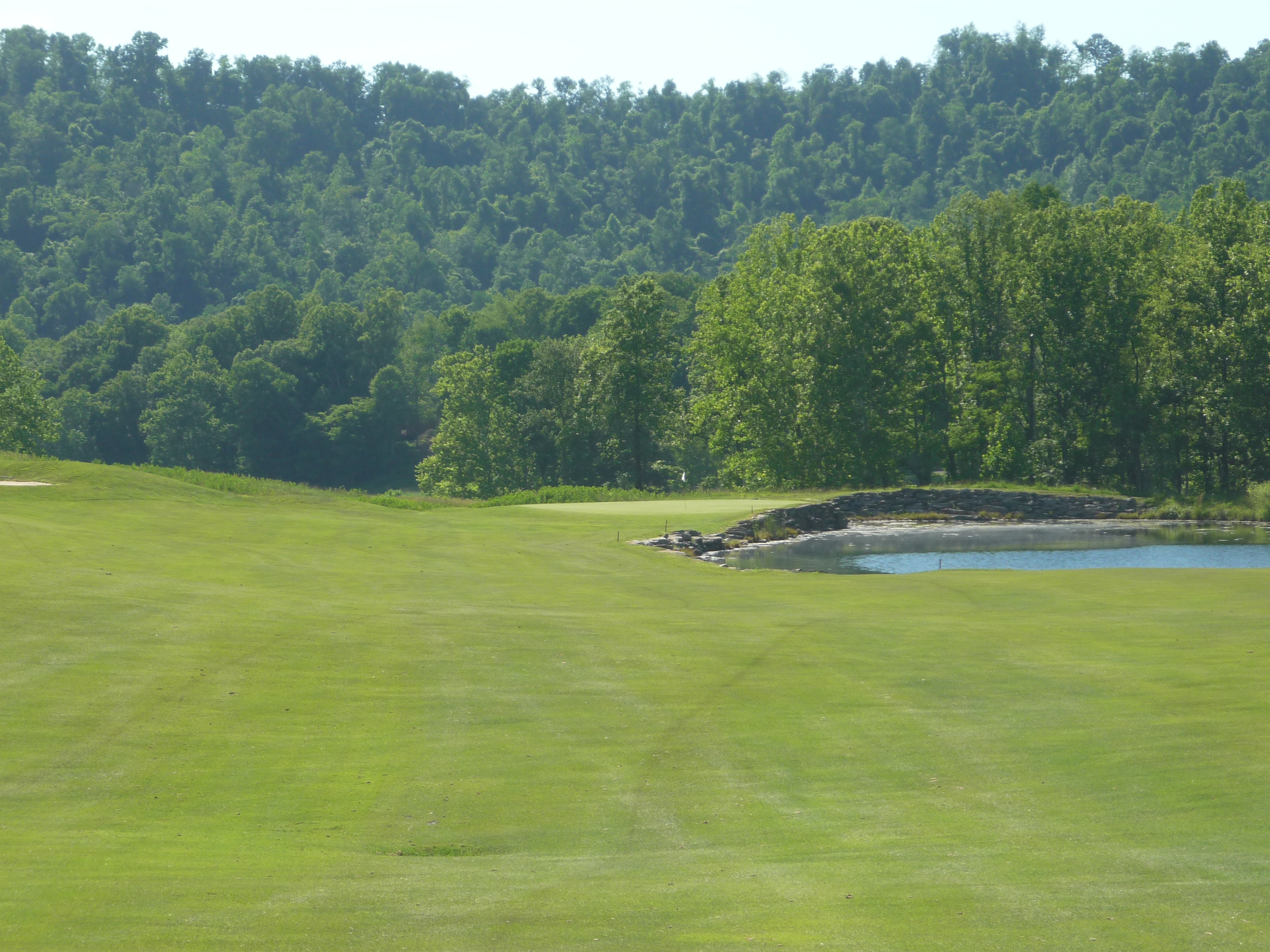
You can see below just how close the hazard is to the fairway and green.

Another of the few flat greens here at Pete Dye Golf Club.
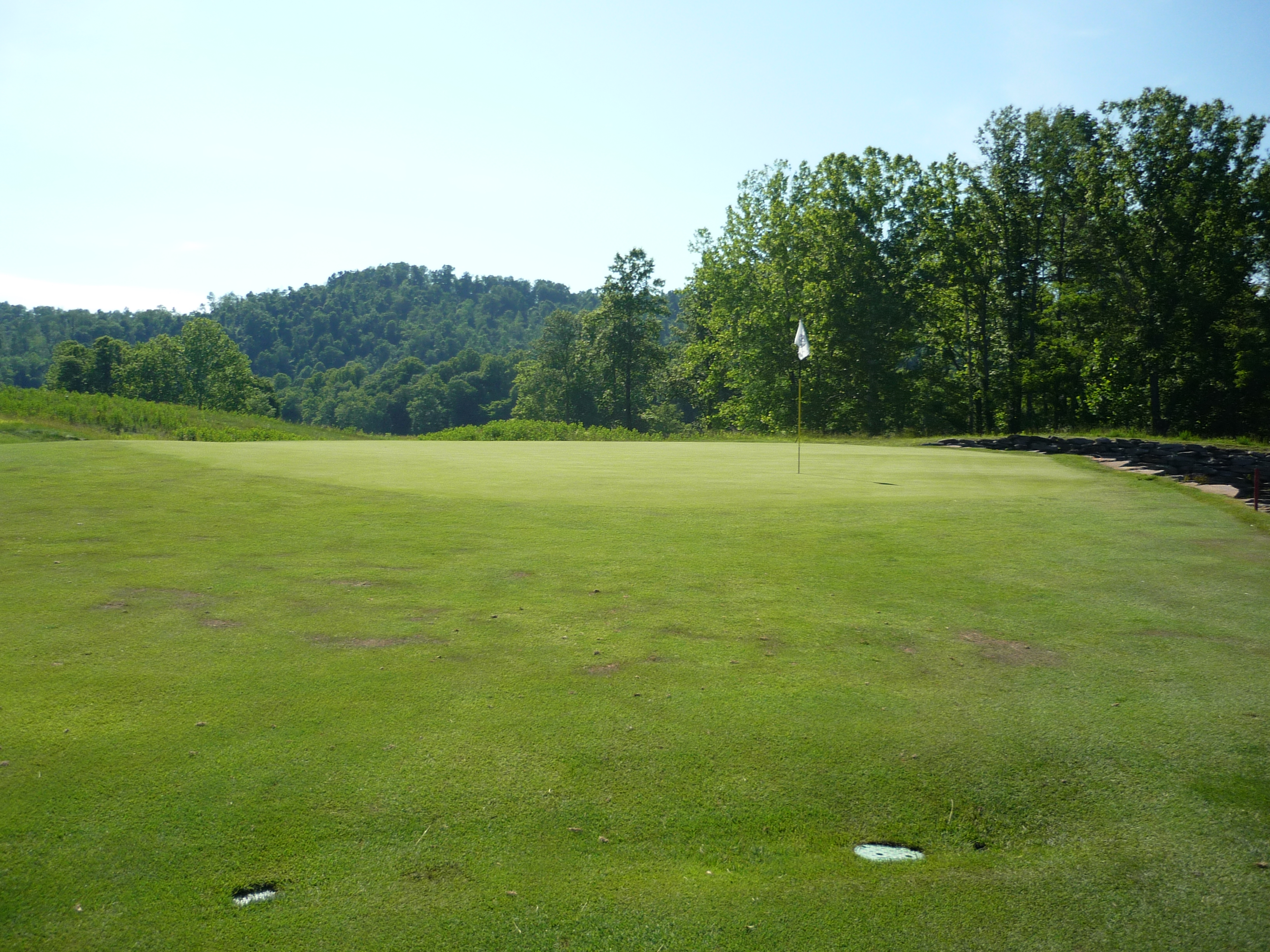
Hole 16 – 177 yards – Par 3
I loved this hole. The tee shot plays downhill to a massive green. The large bunker to the right of the green can be seen easily. The trees to the back of the green were keeping it shaded on this day.
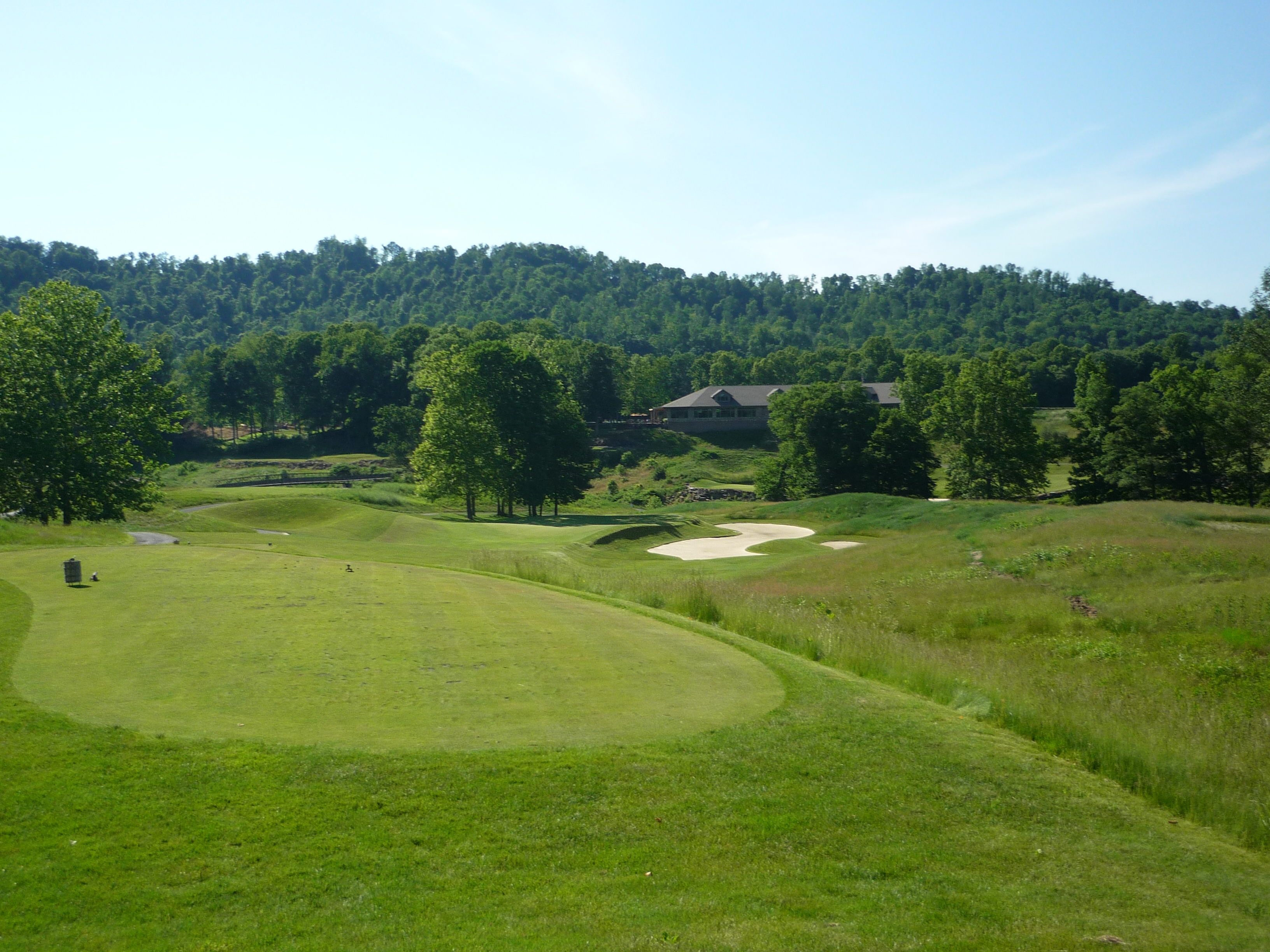
I said the green was large. From the front of the green, you can barely see the pin. The putt plays over a large hill and requires great touch.
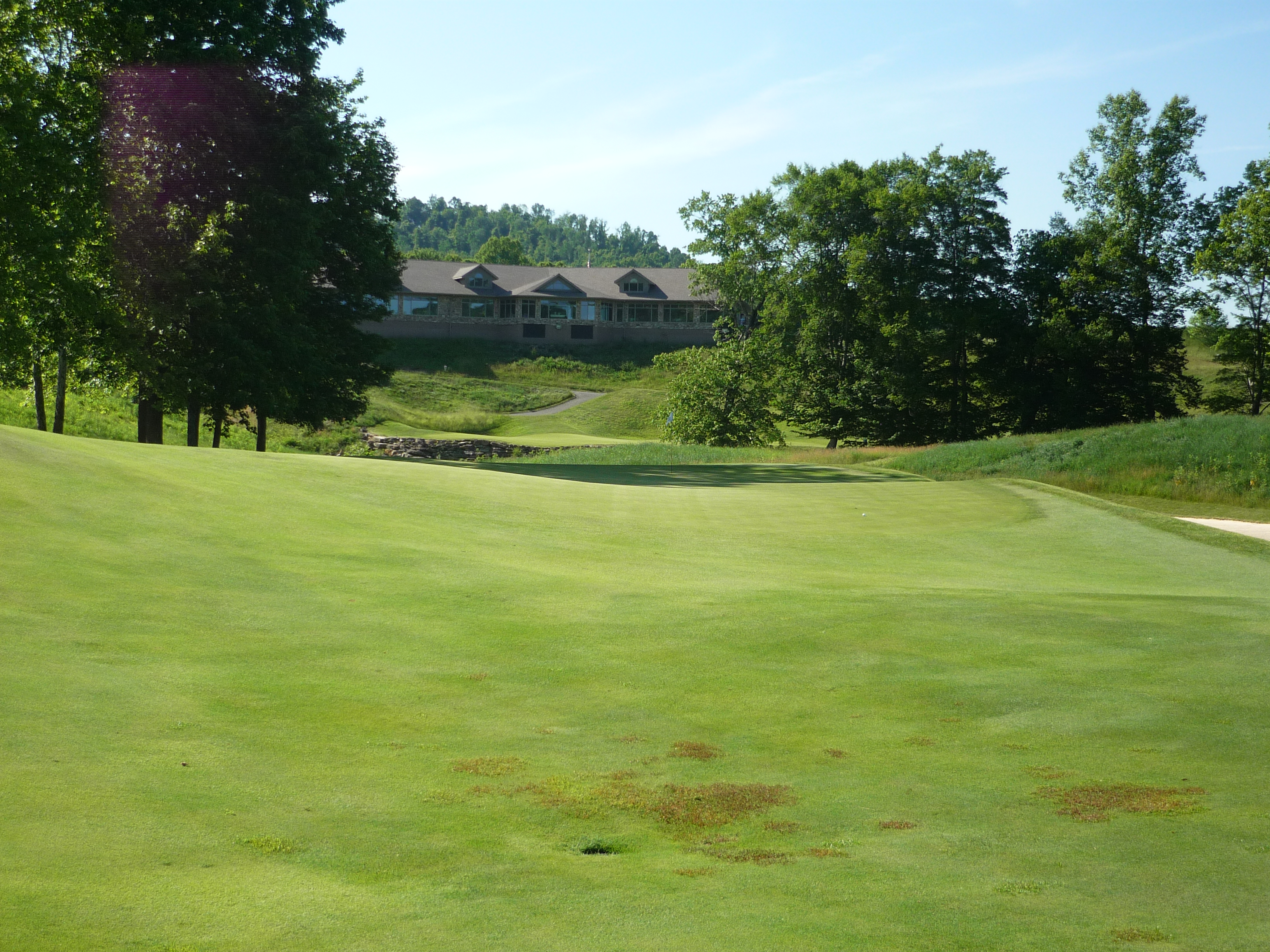
Hole 17 – 345 yards – Par 4
This is not a long hole, but you must think about what you want to hit. You can definitely carry the bunkers.
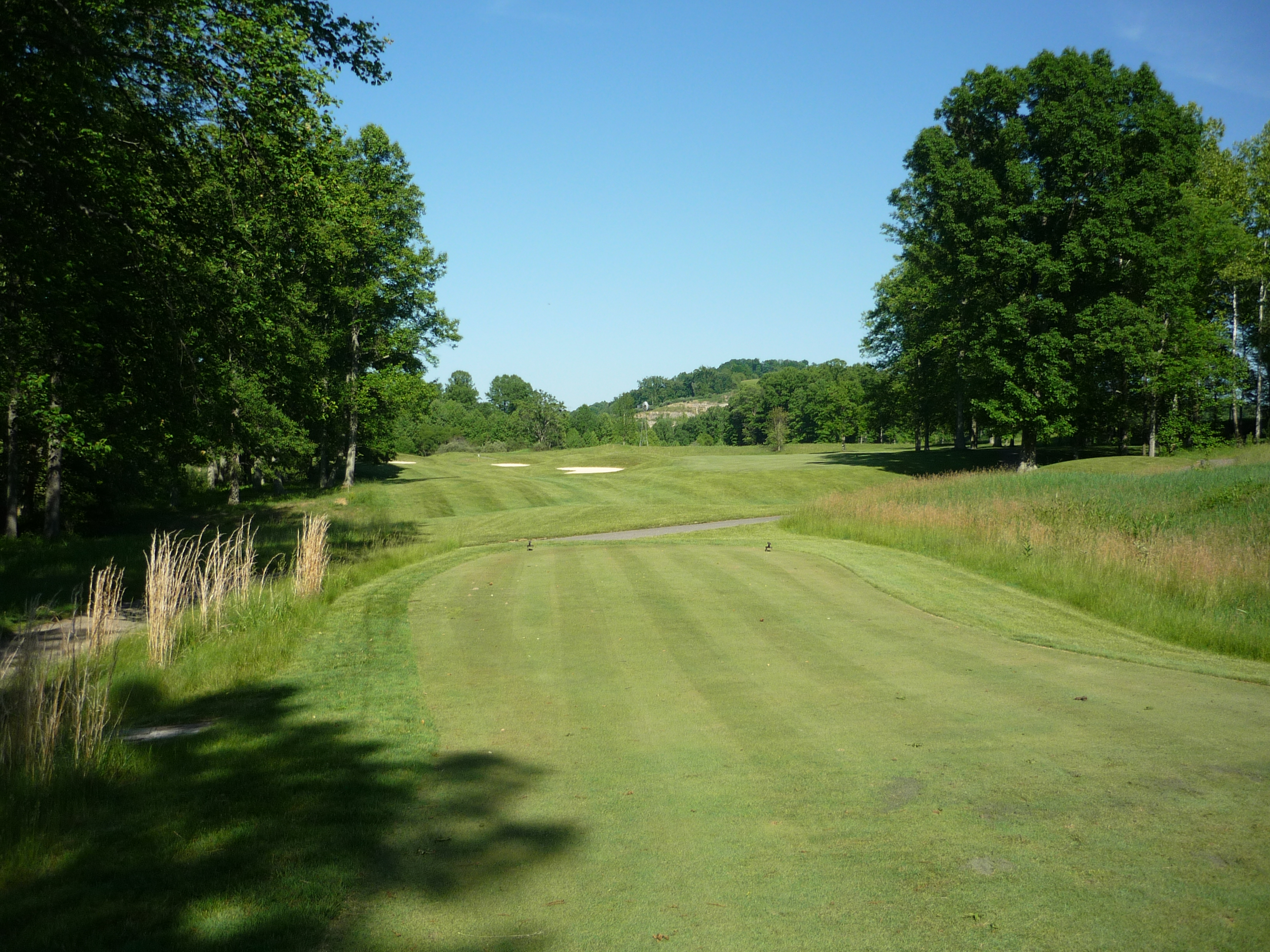
The second plays to a raised green.
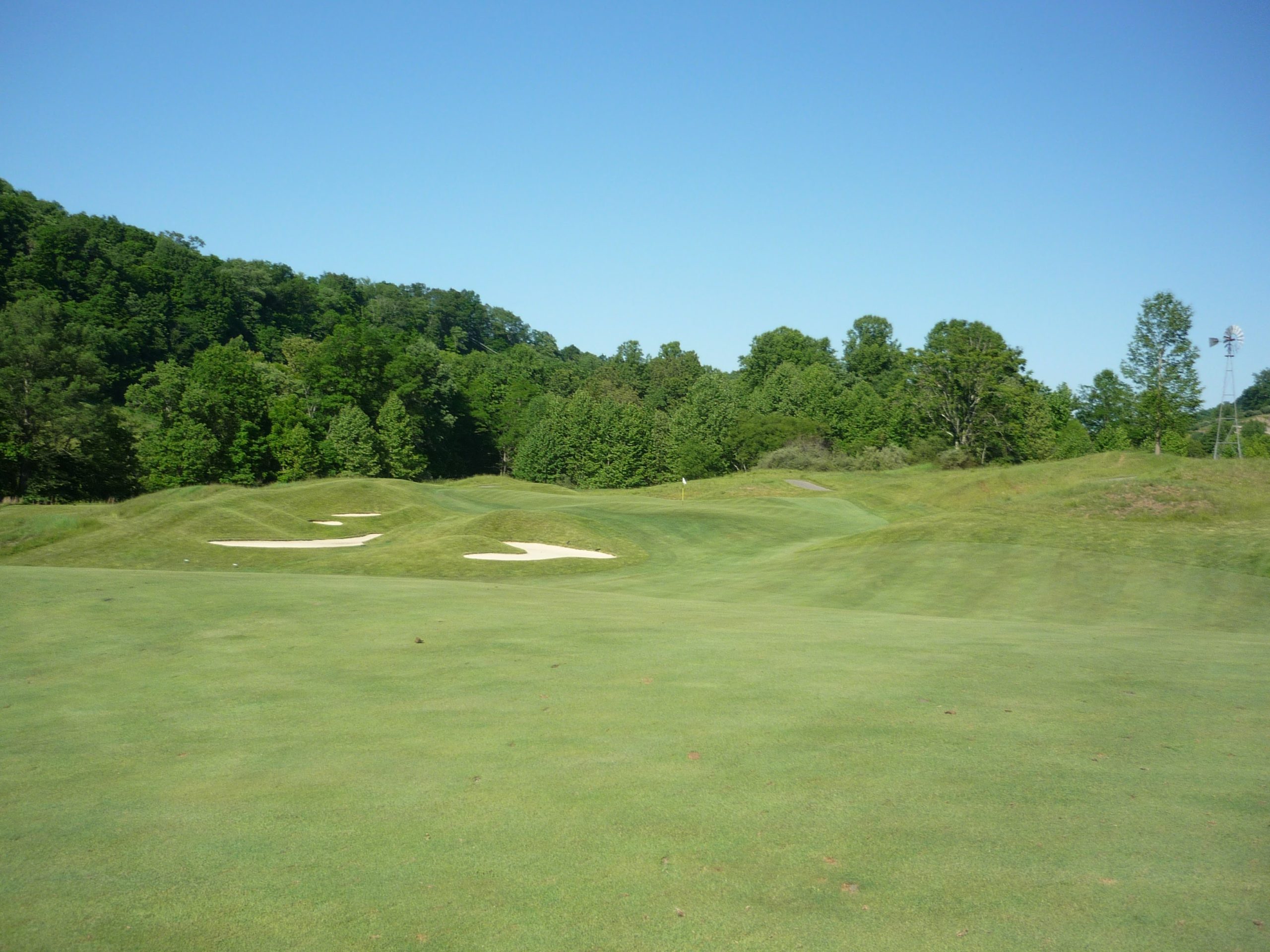
I had read that the seventeenth green is controversial. I can see why. Look at all the mounding. It is very possible to hit a seemingly good looking shot here and have it roll off the green. I am not a fan of holes like that because I think good shots should be rewarded. However, this is really the only silliness on this otherwise great course.
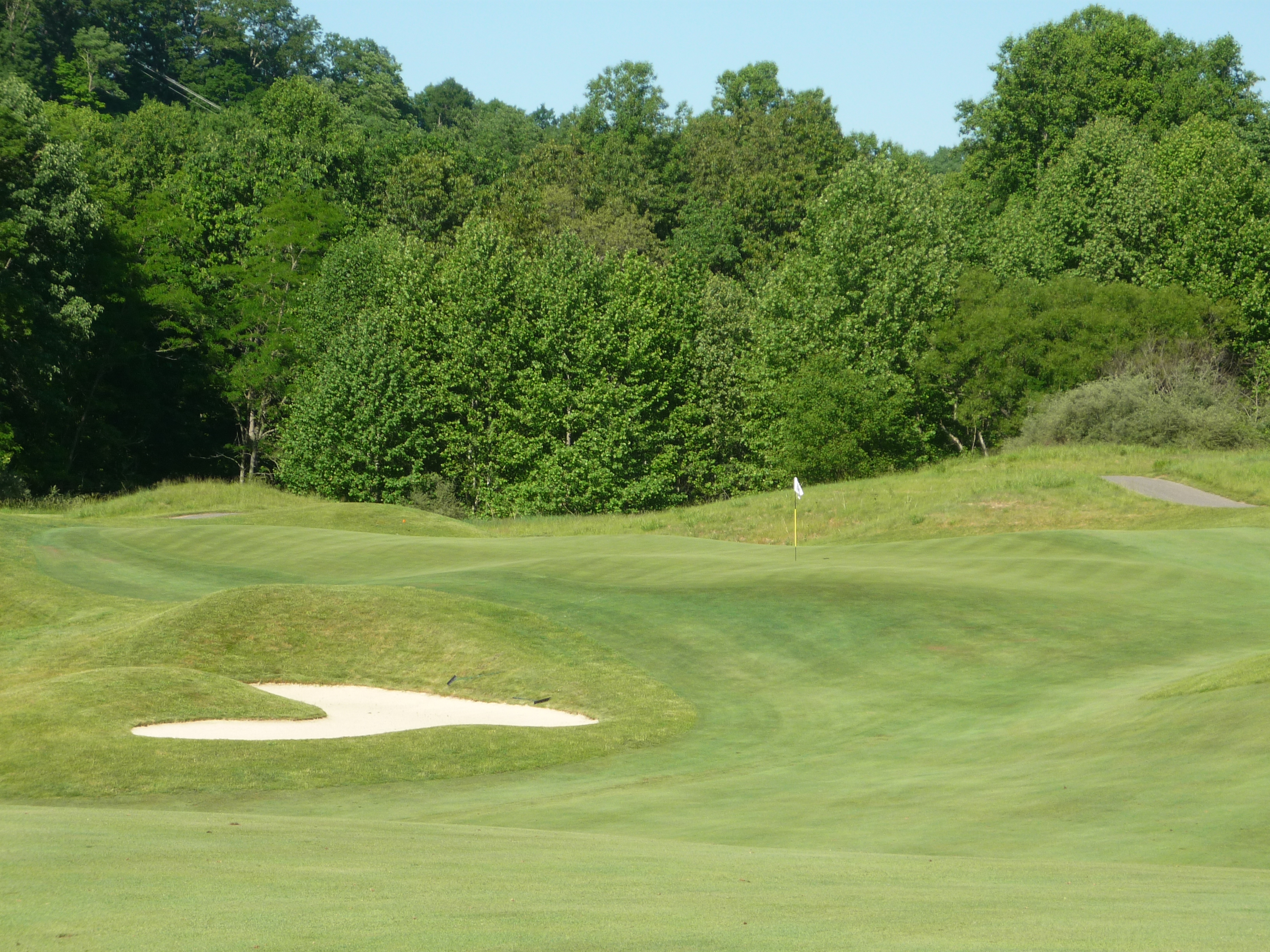
You can see the green a little clearer here. It really pays to hit the ball in the middle of the green to avoid all the slope.
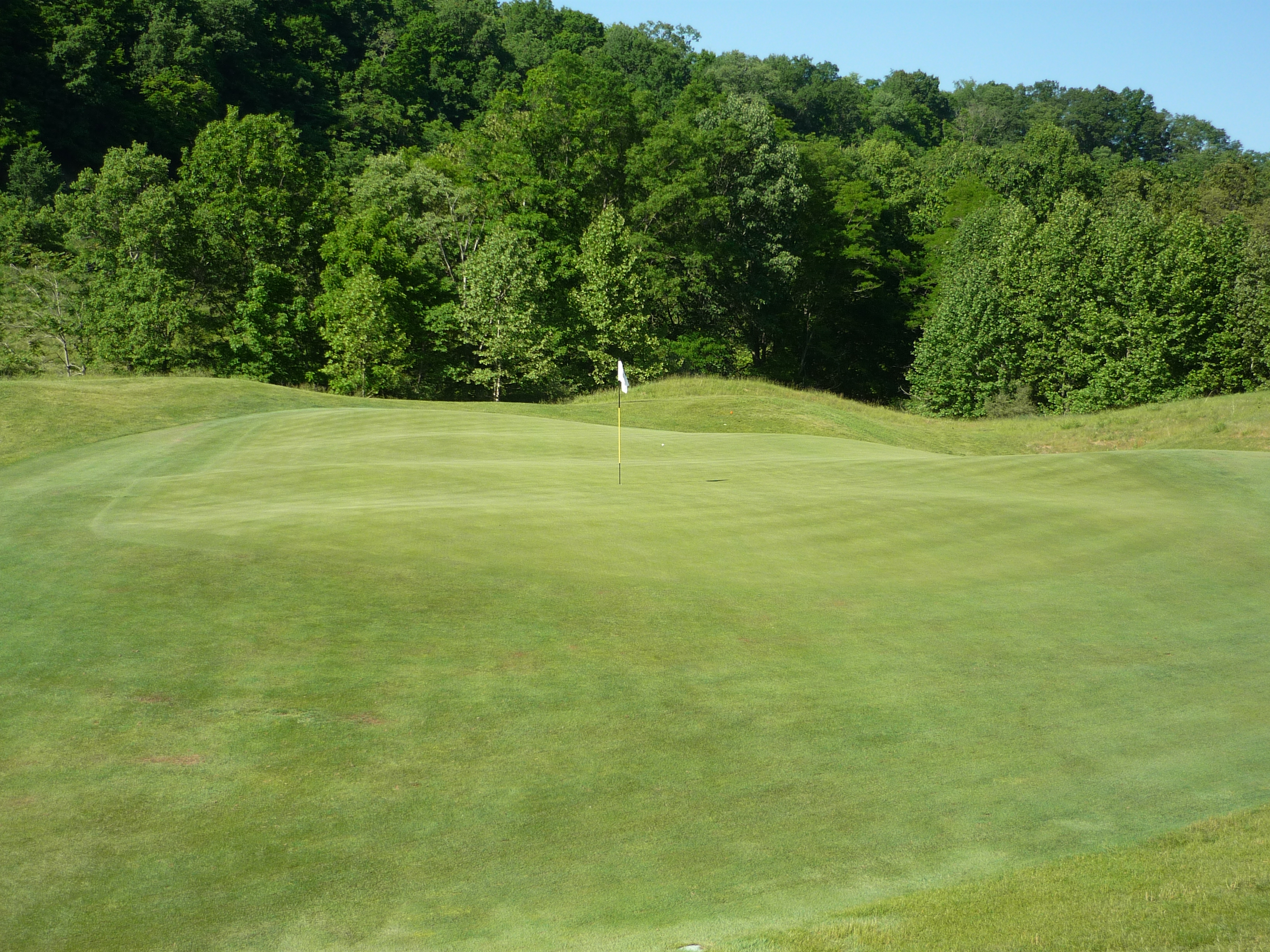
Hole 18 – 413 yards – Par 4
This is a strong finisher that requires a good drive in the fairway. A baby draw plays well here.

I was a long way out here so we get a wide shot of the fairway.
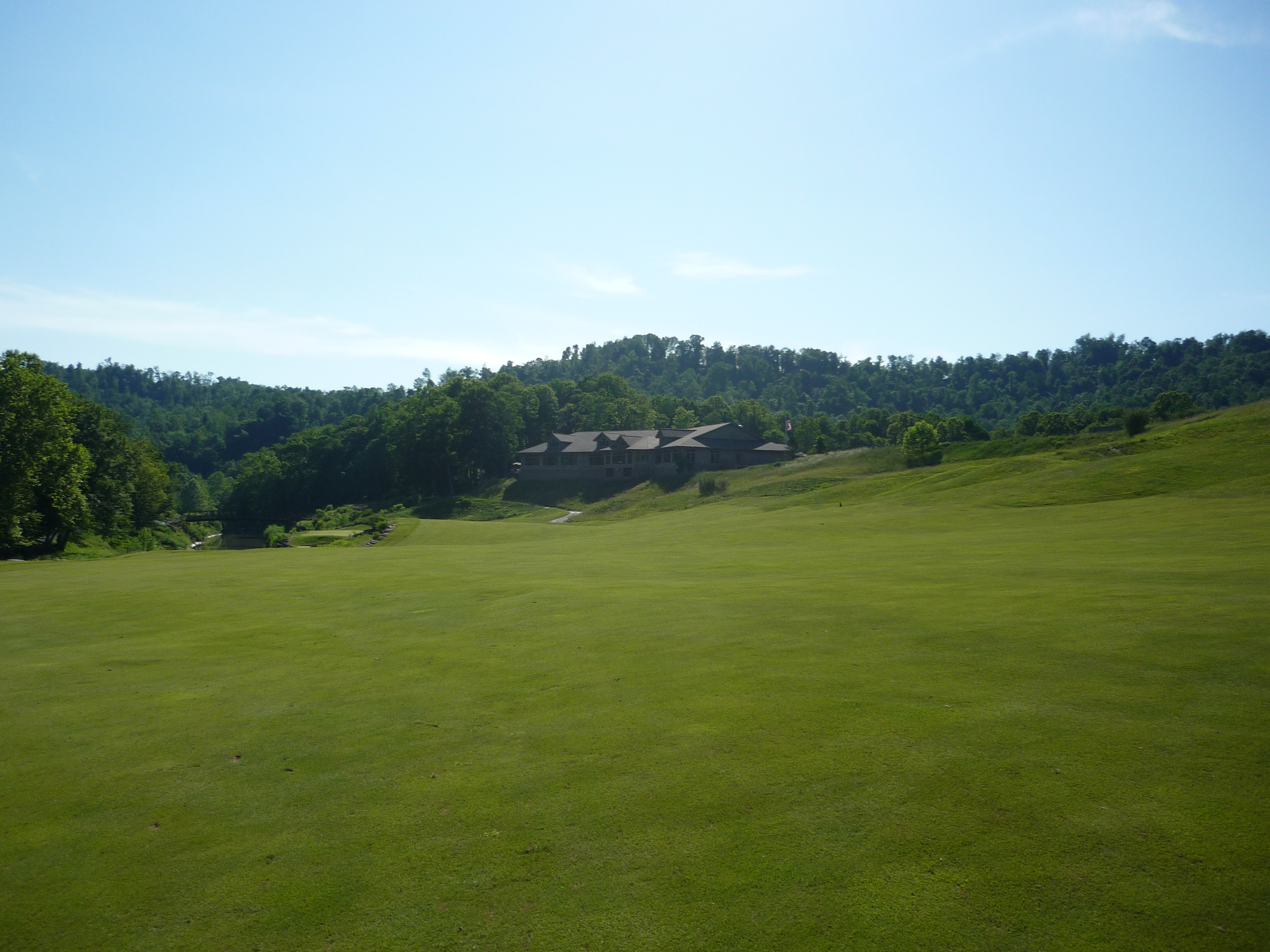
The approach plays over and down a hill to a green that is open in the front. Anything a little short has a chance to bounce onto the green.
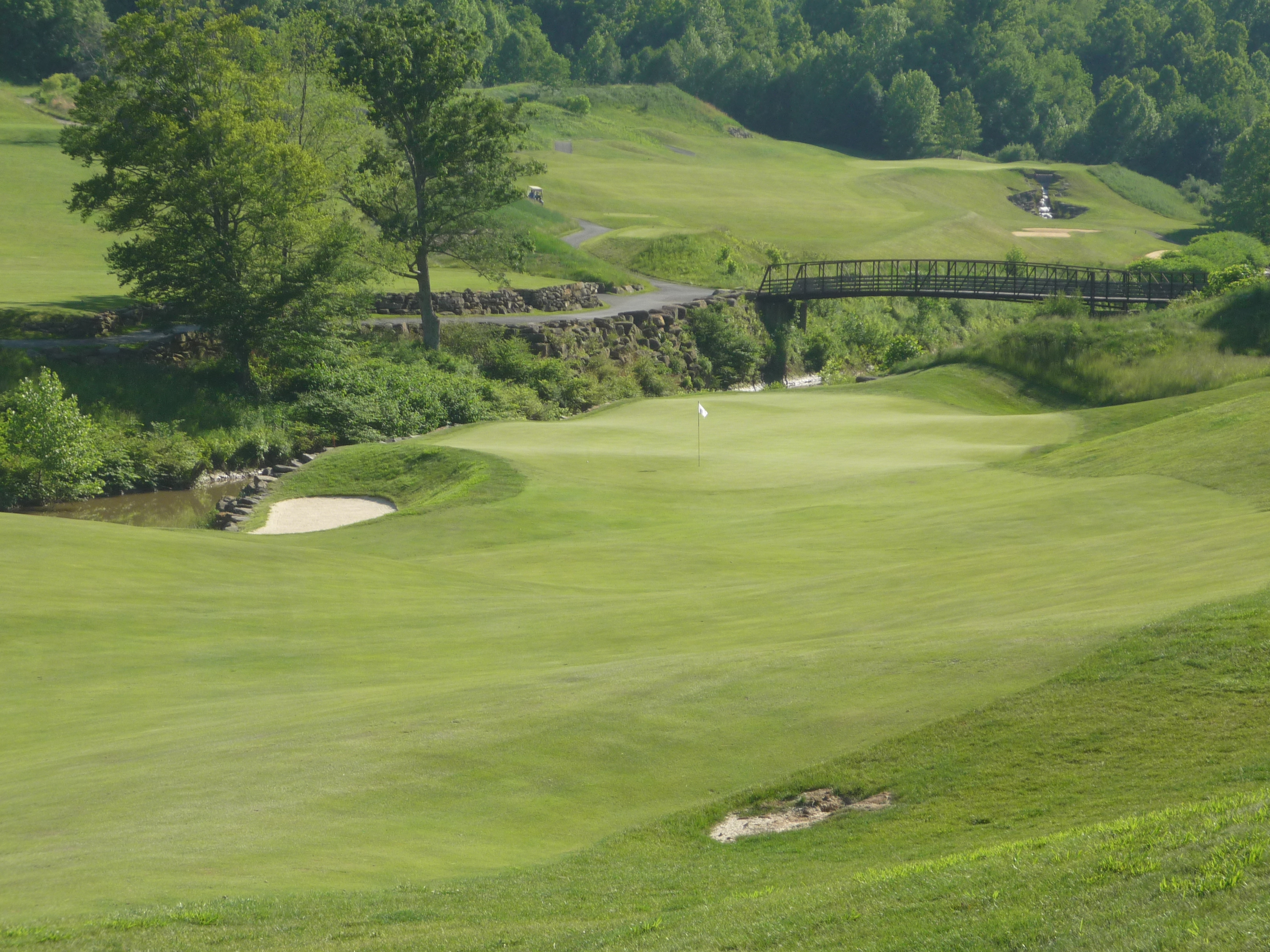
The final green complex has a lot of slope. You can see it all around the edges of the surface.
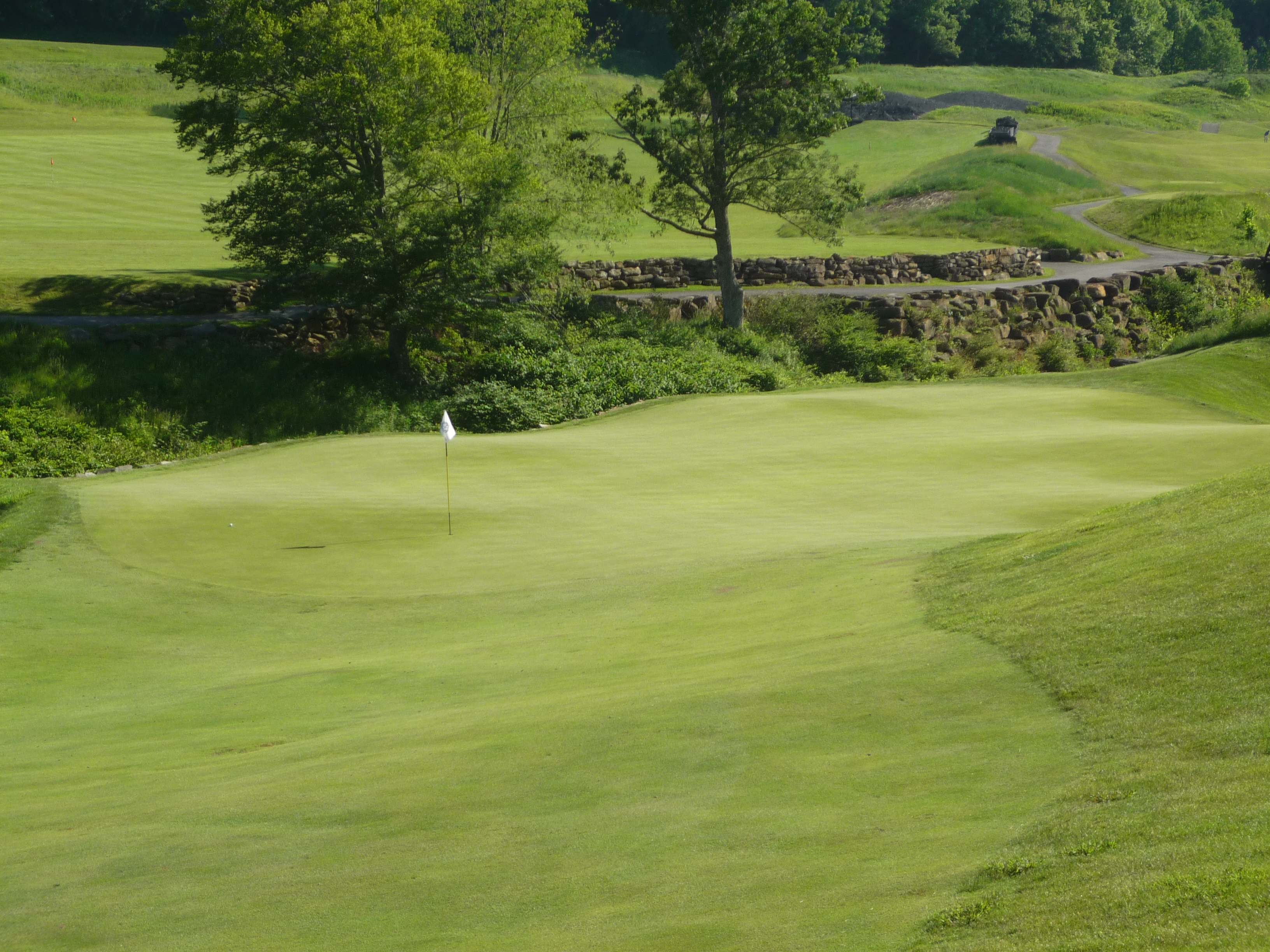
The club has a wonderful clubhouse that I got a shot of from the eighteenth green. The large windows provide a great view of the course. The restaurant takes full advantage of these vistas.
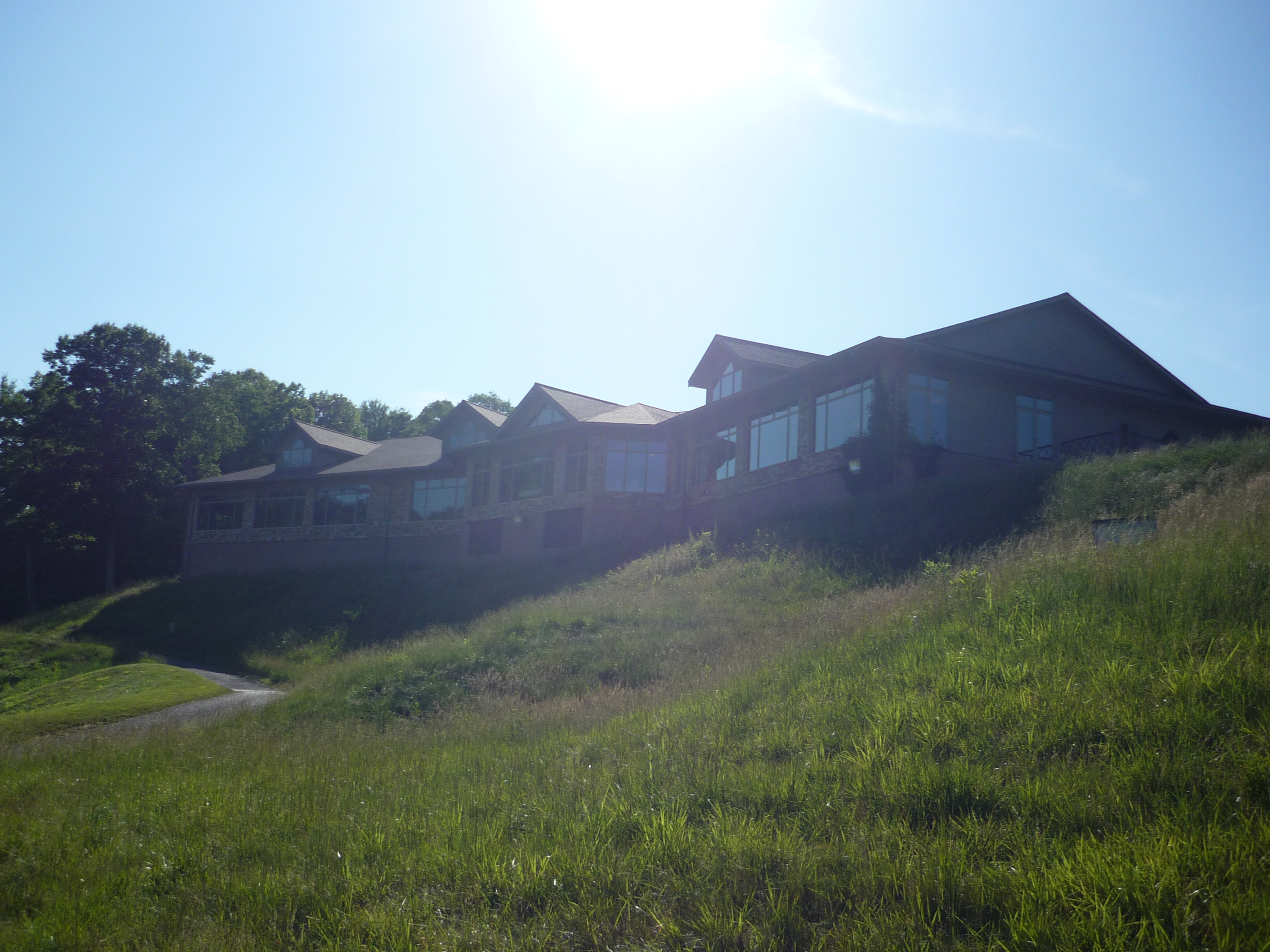
I had a fabulous time at Pete Dye Golf Club. I thought the course was a bit of a tough walk carrying my own bag, but it all depends on your fitness level (hint: mine is not up to snuff quite yet). The membership has a really fun course and I hope more people get to come see it. The relatively isolated location and small membership keeps it quiet. I was playing on a Saturday and barely saw anyone during my round as a single. I know the club has reciprocal agreements, so if you want to have your pro call it would be well worth a trip!

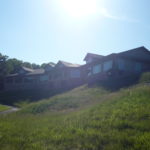
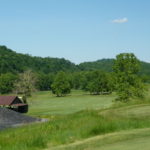

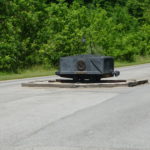
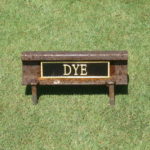
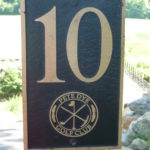
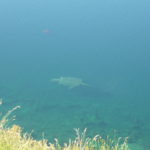
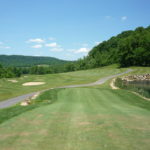
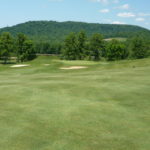
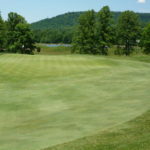
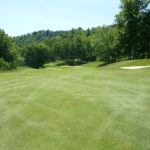
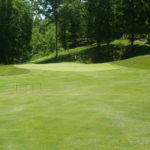
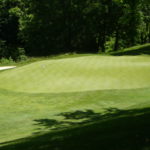
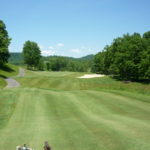
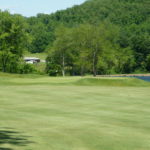
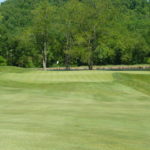
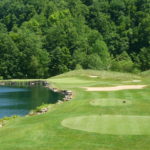
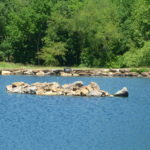
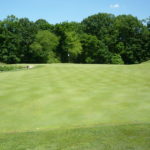
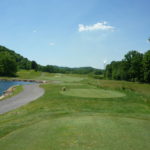
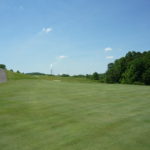
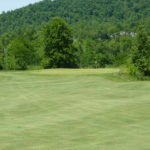
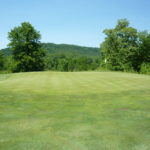
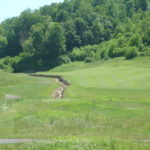
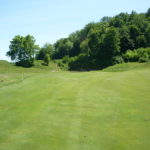
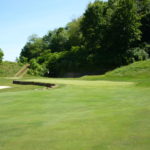
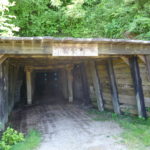
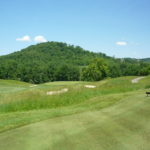
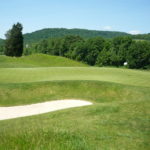
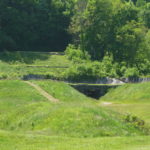
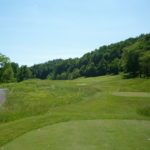
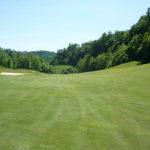
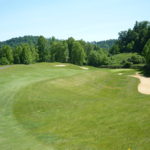
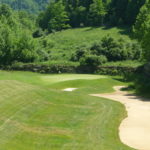
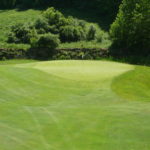
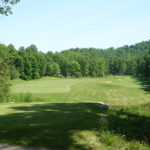
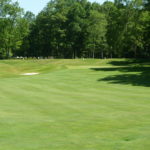
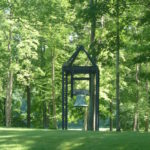
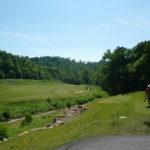
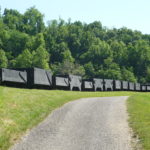
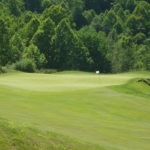
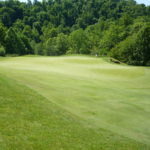
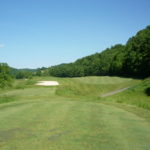
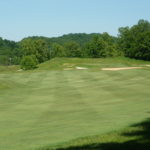
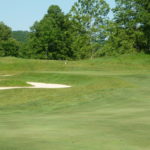
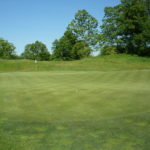
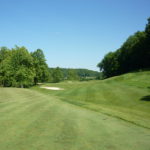
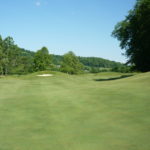
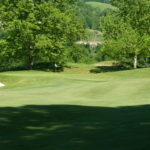
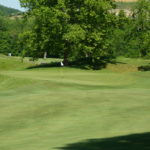
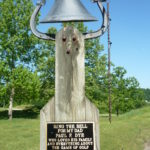
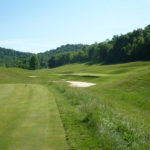
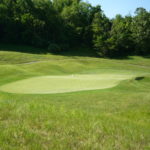
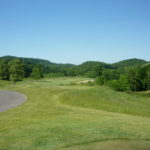
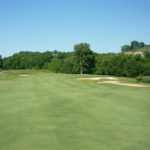

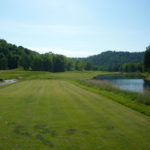
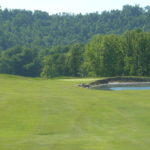
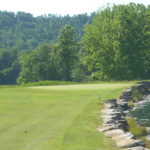
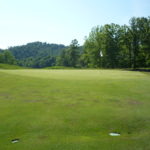
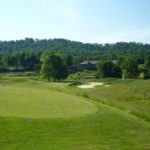
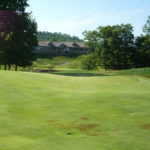
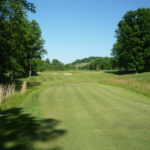
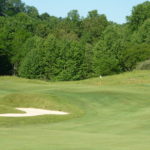
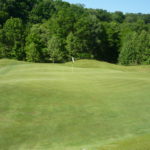
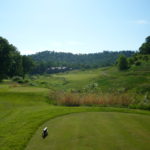
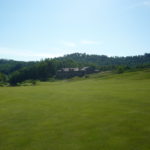
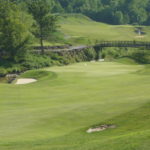
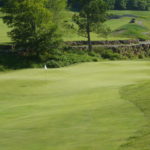
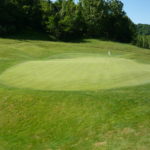
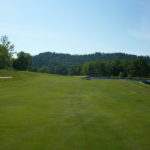
As always, loved the review and the pictures. I would have taken a picture of the turtle as well.
Cheers, Jim
Thanks GG. I’m glad you keep coming back!